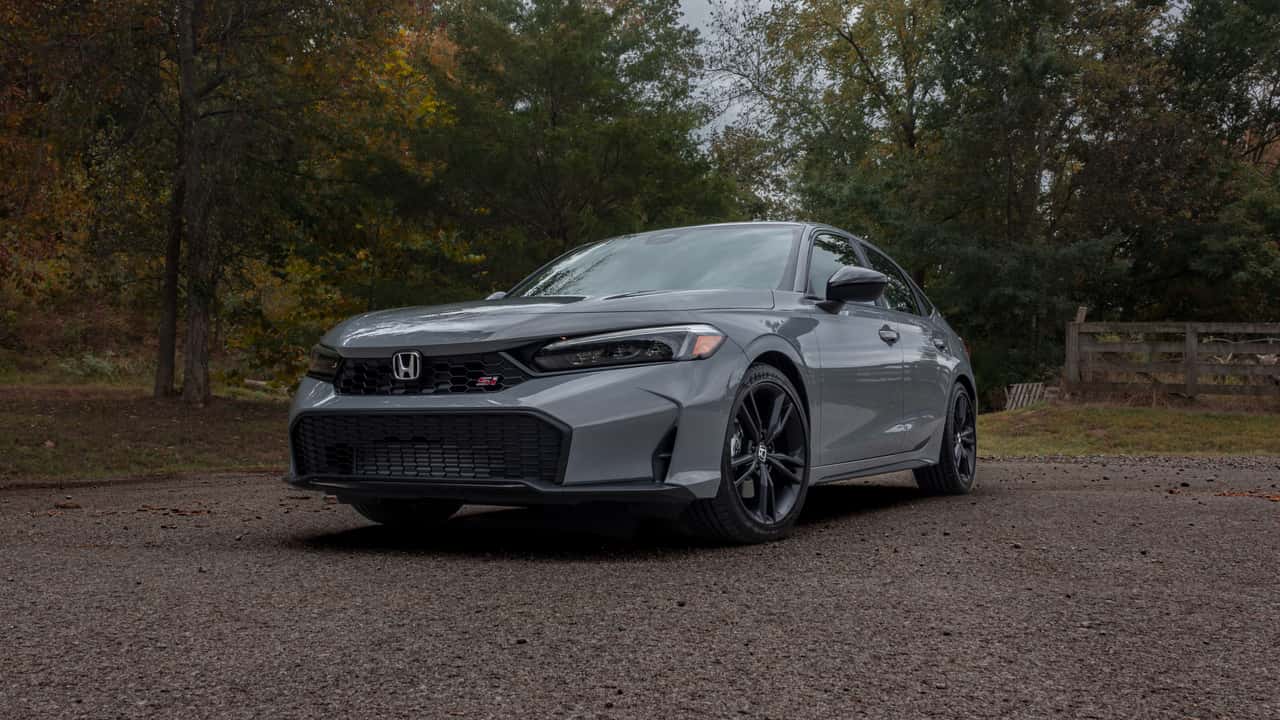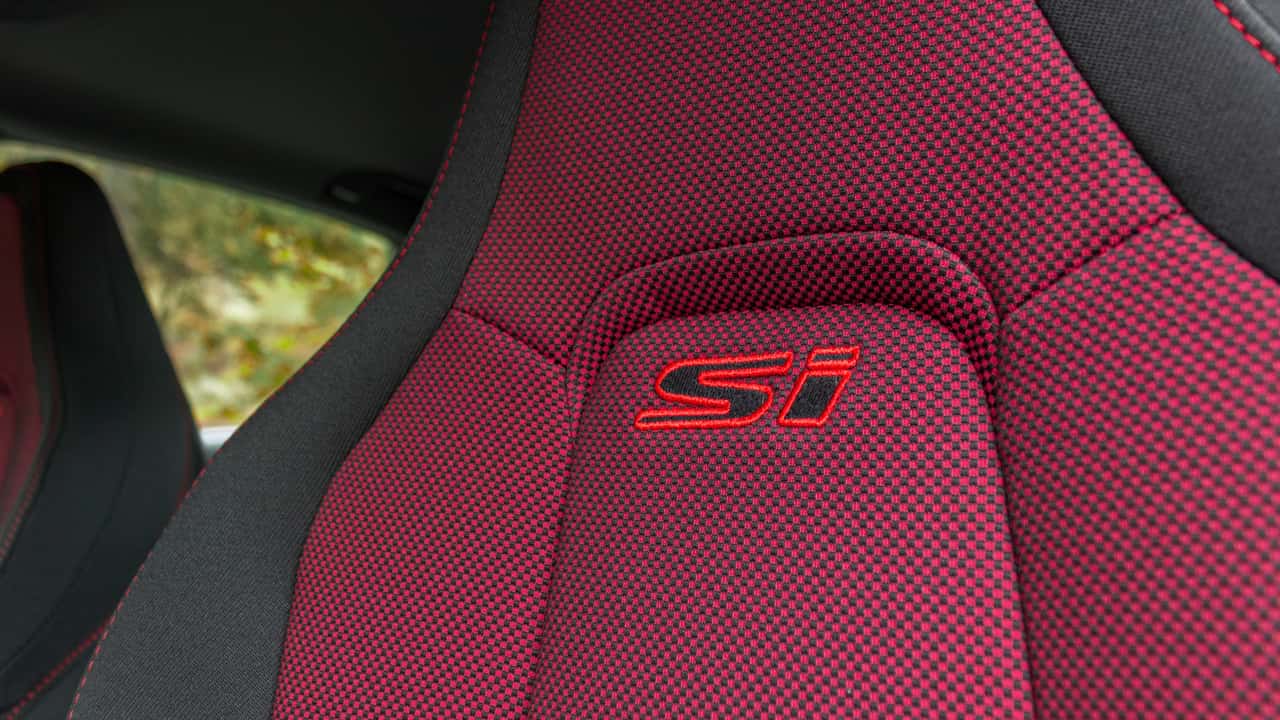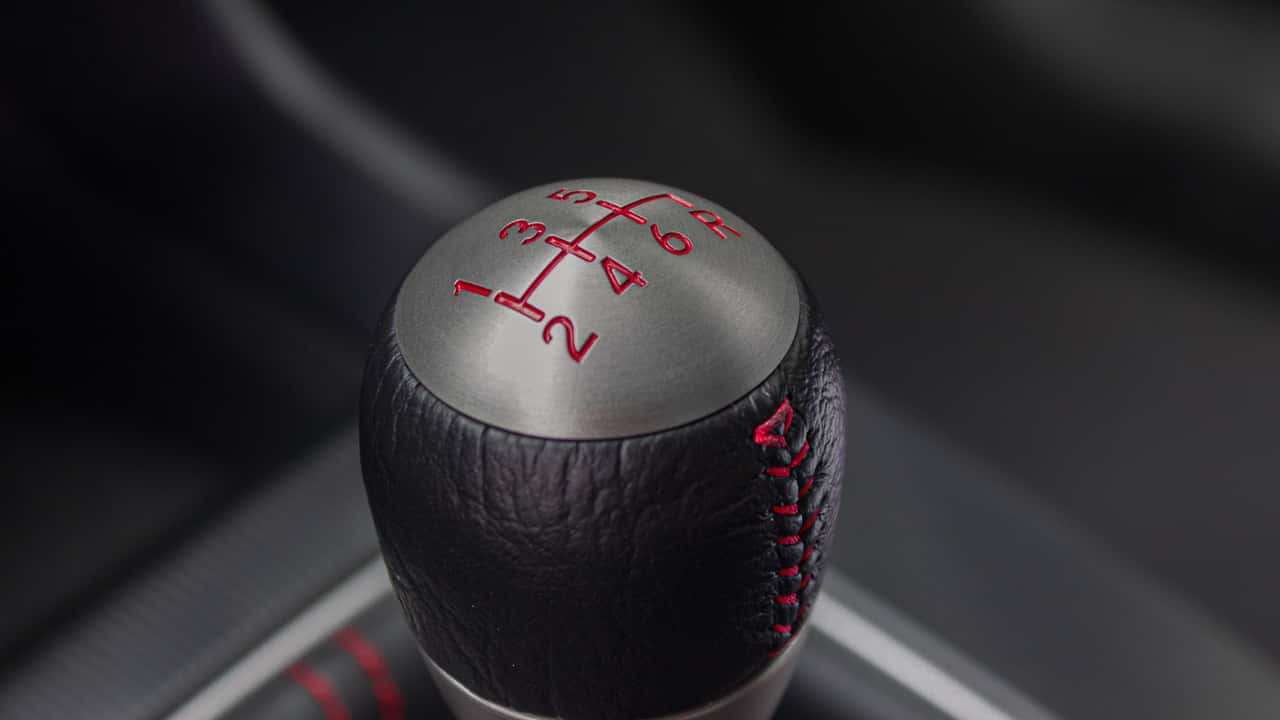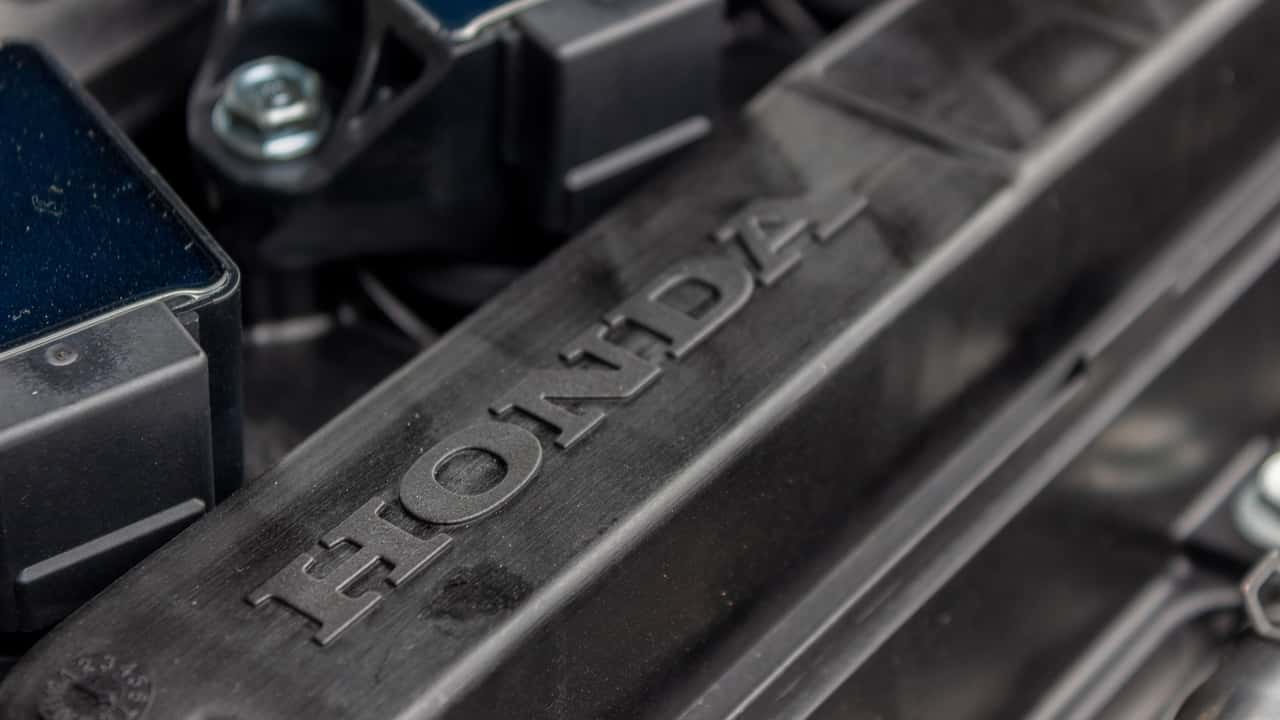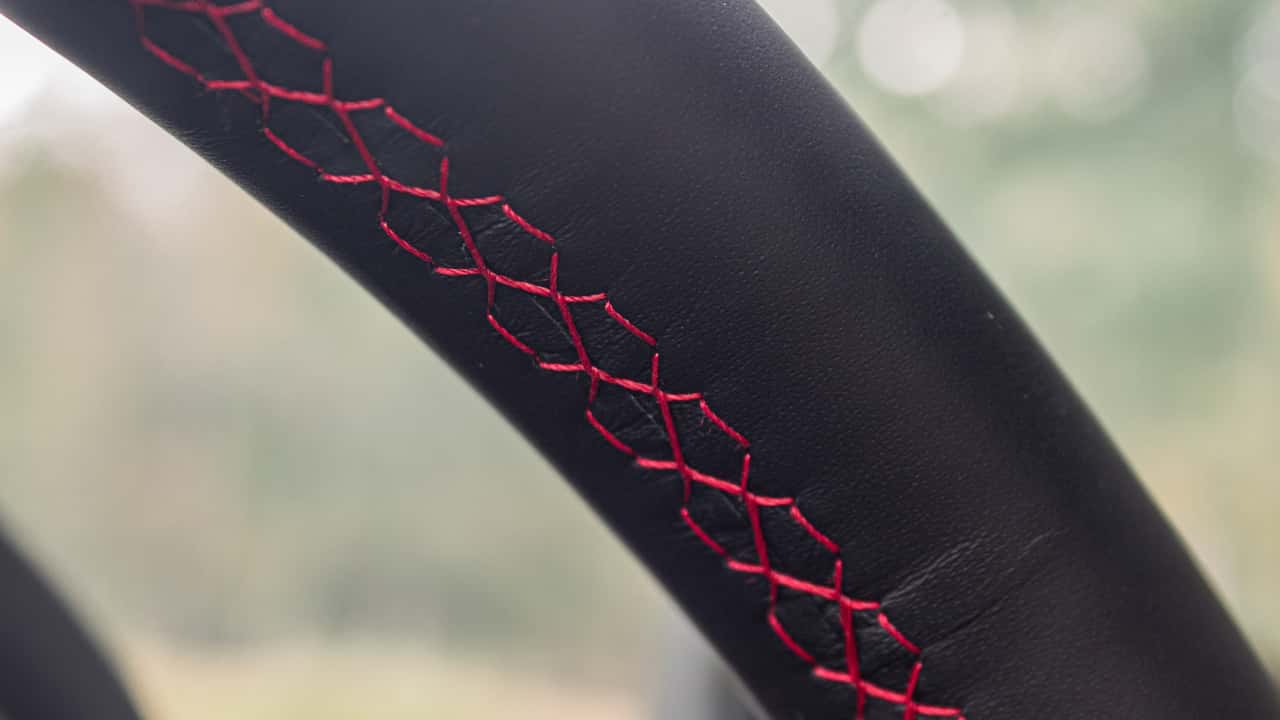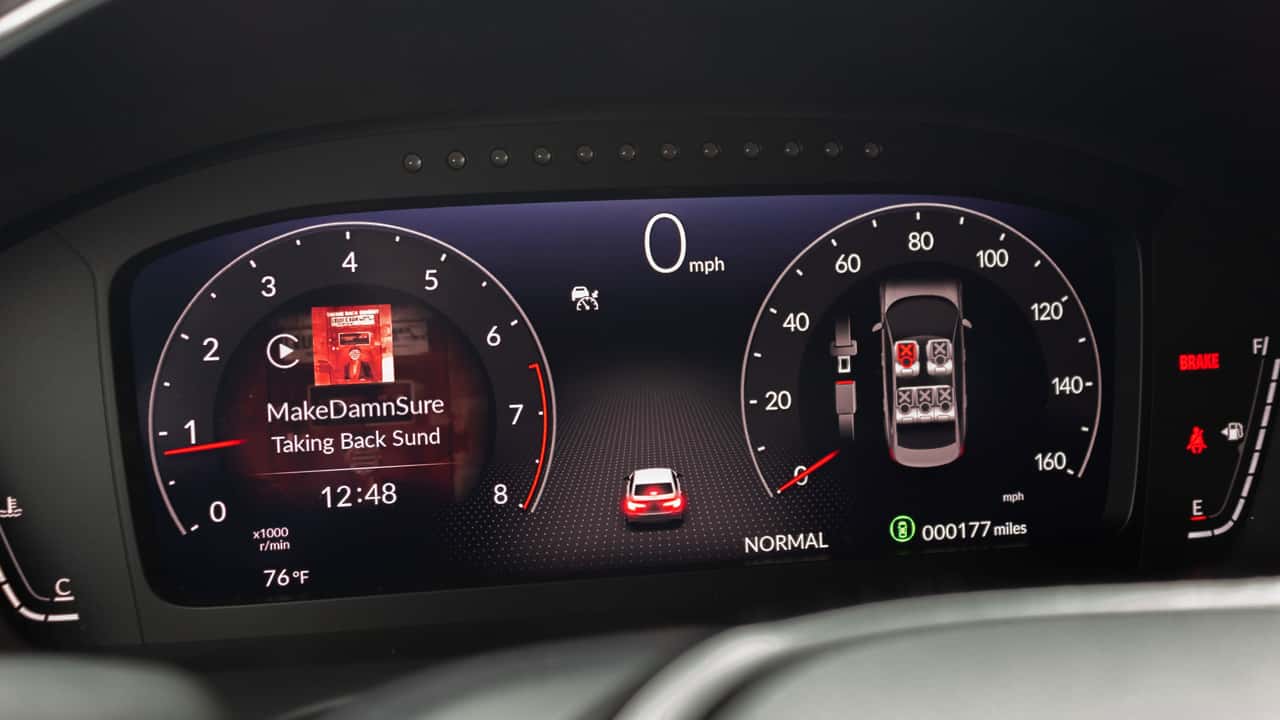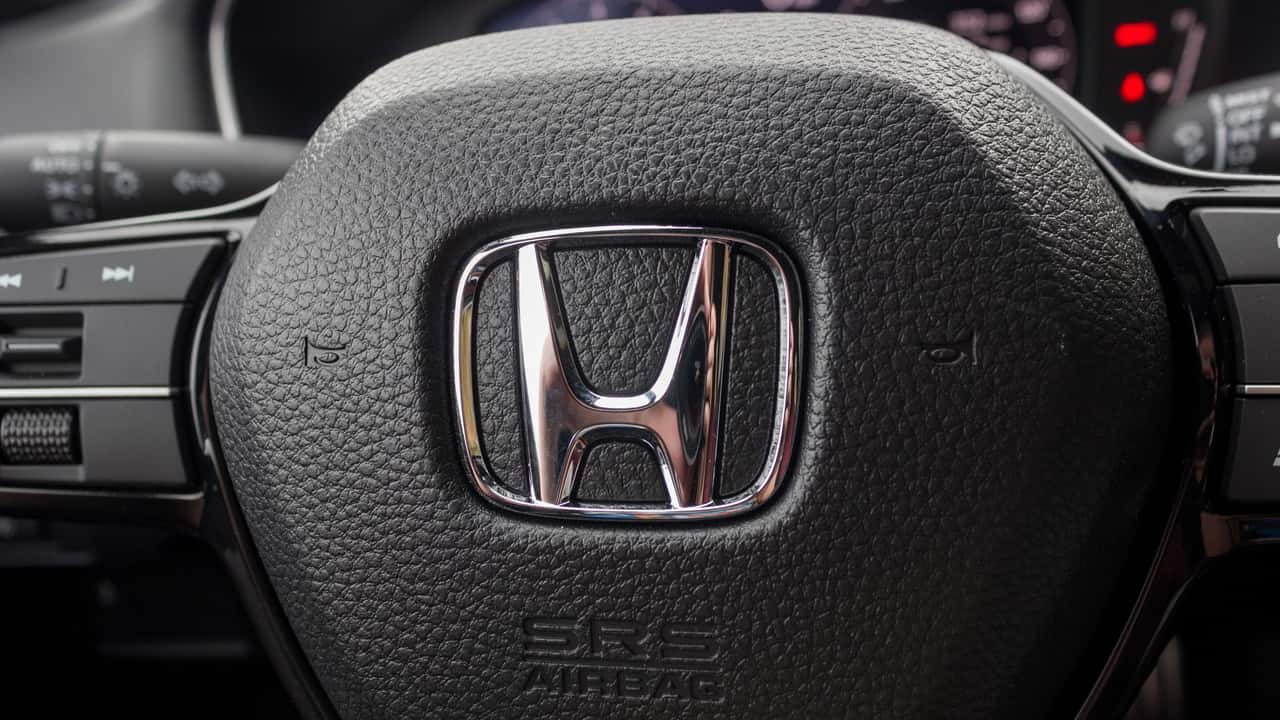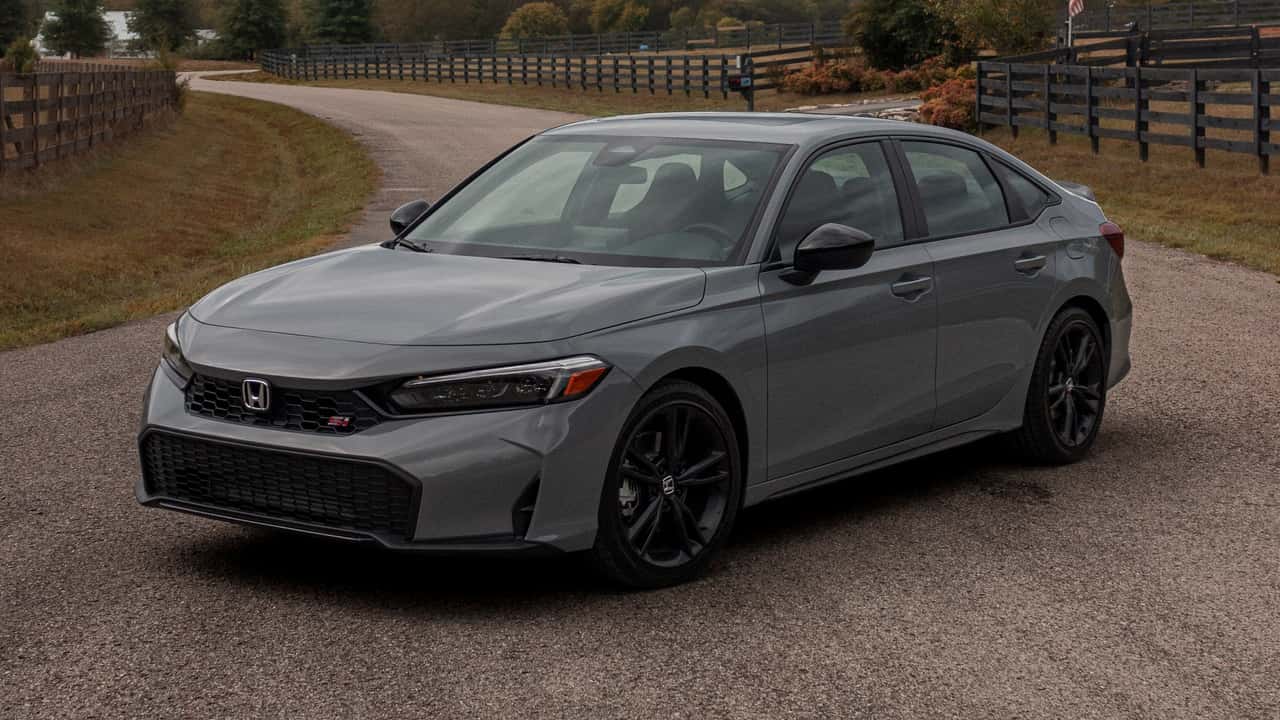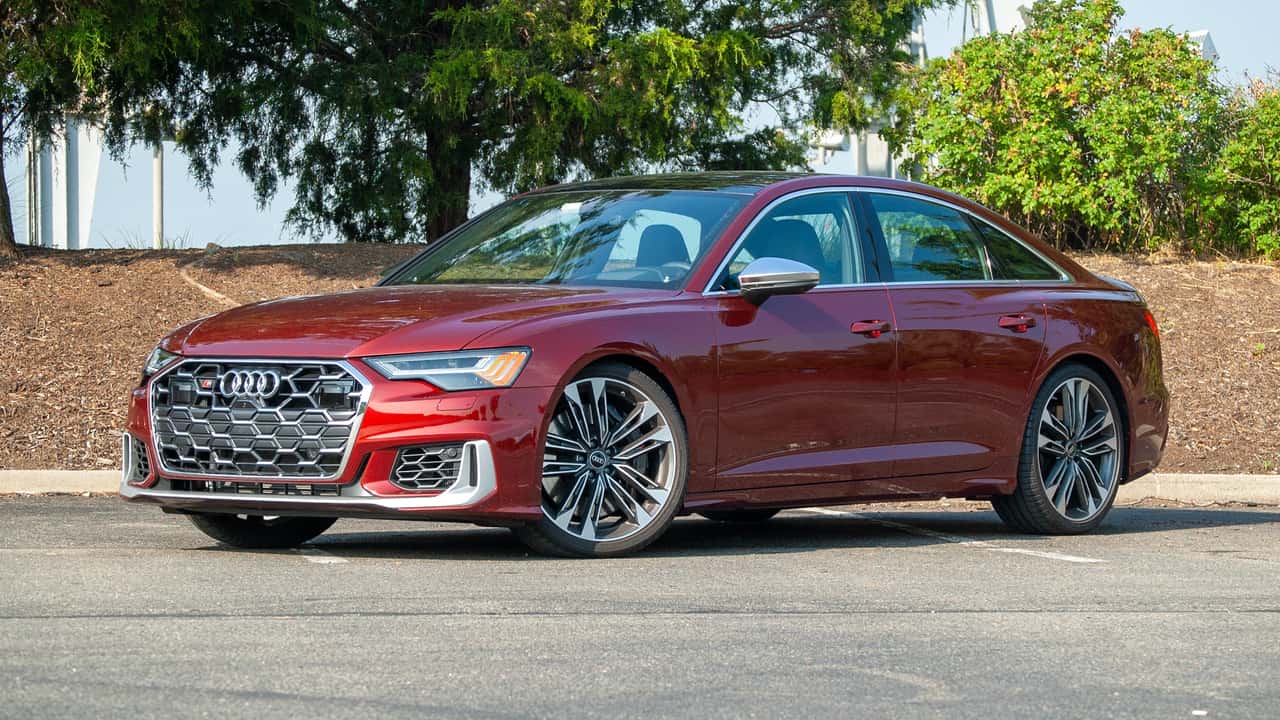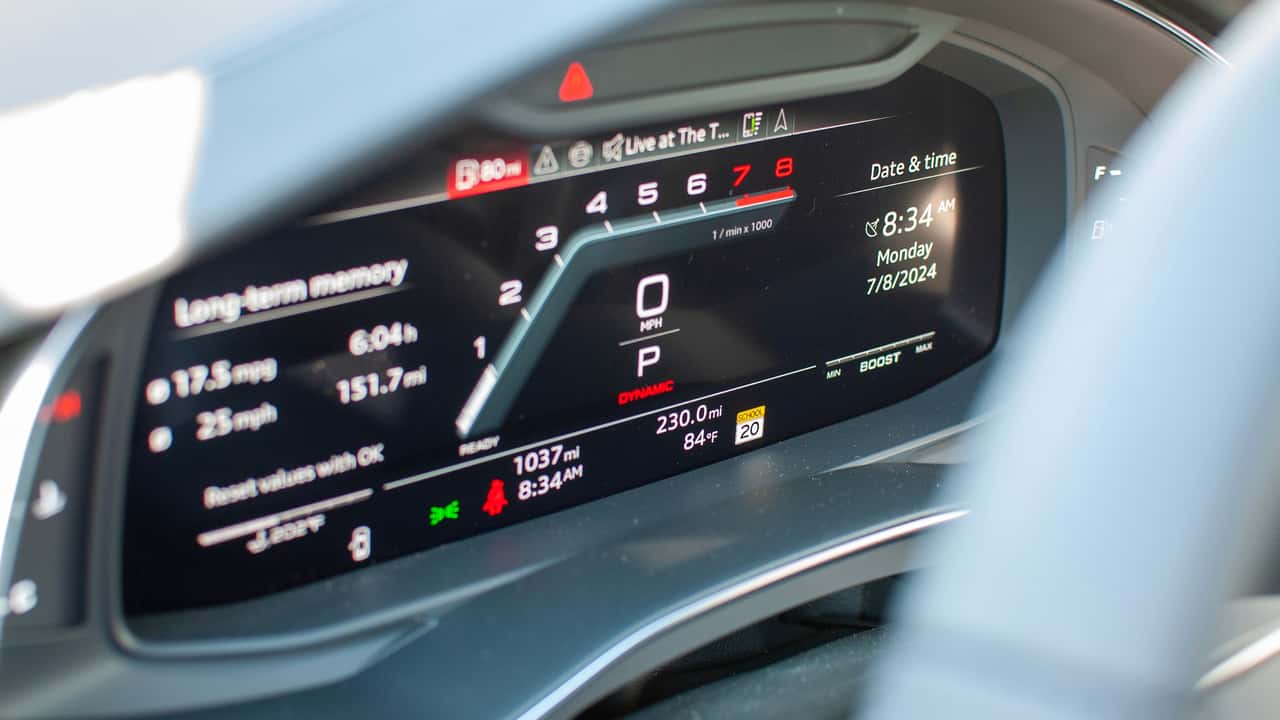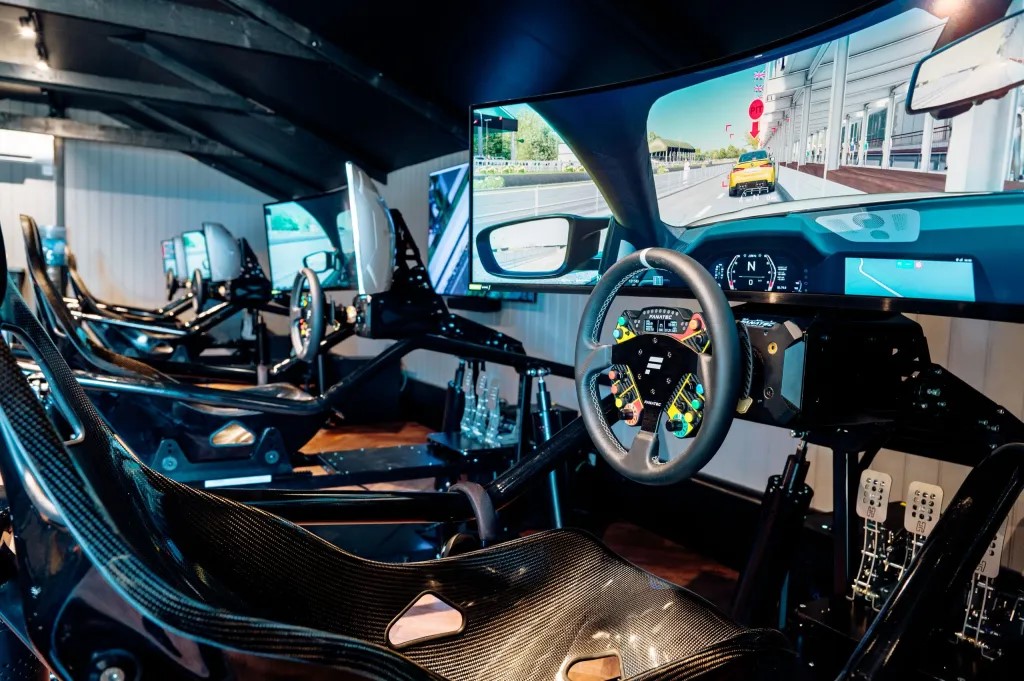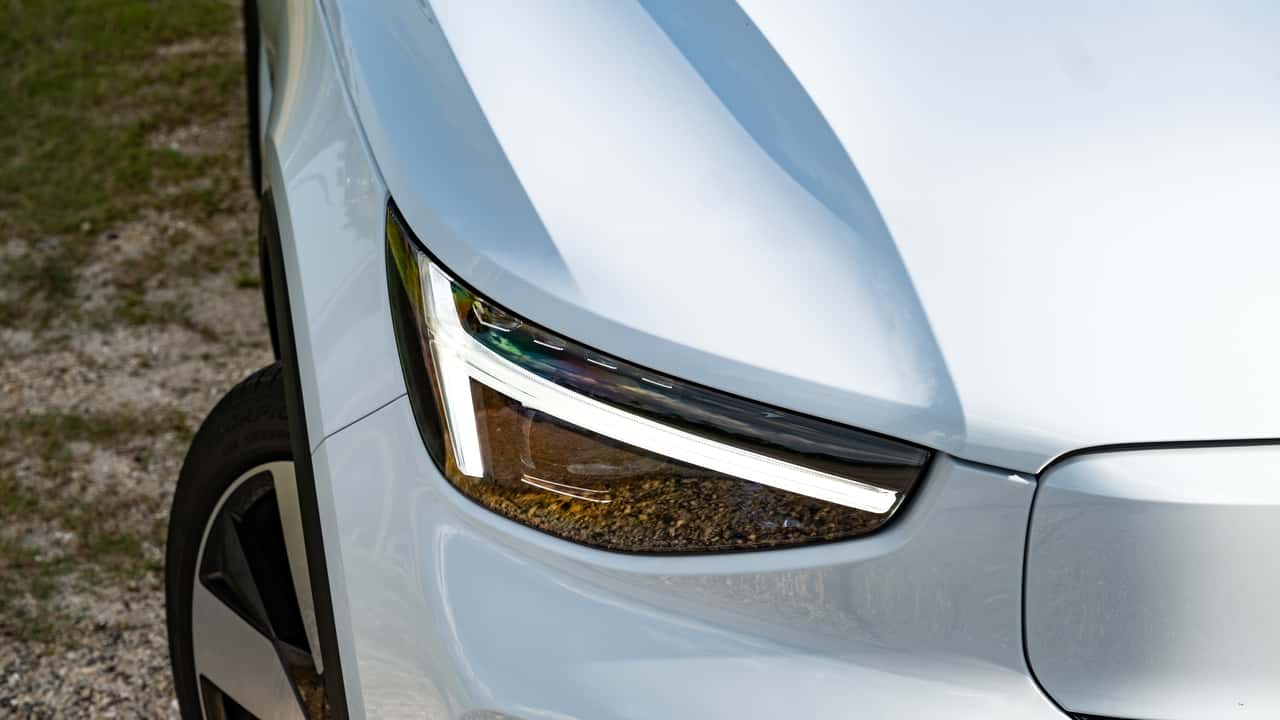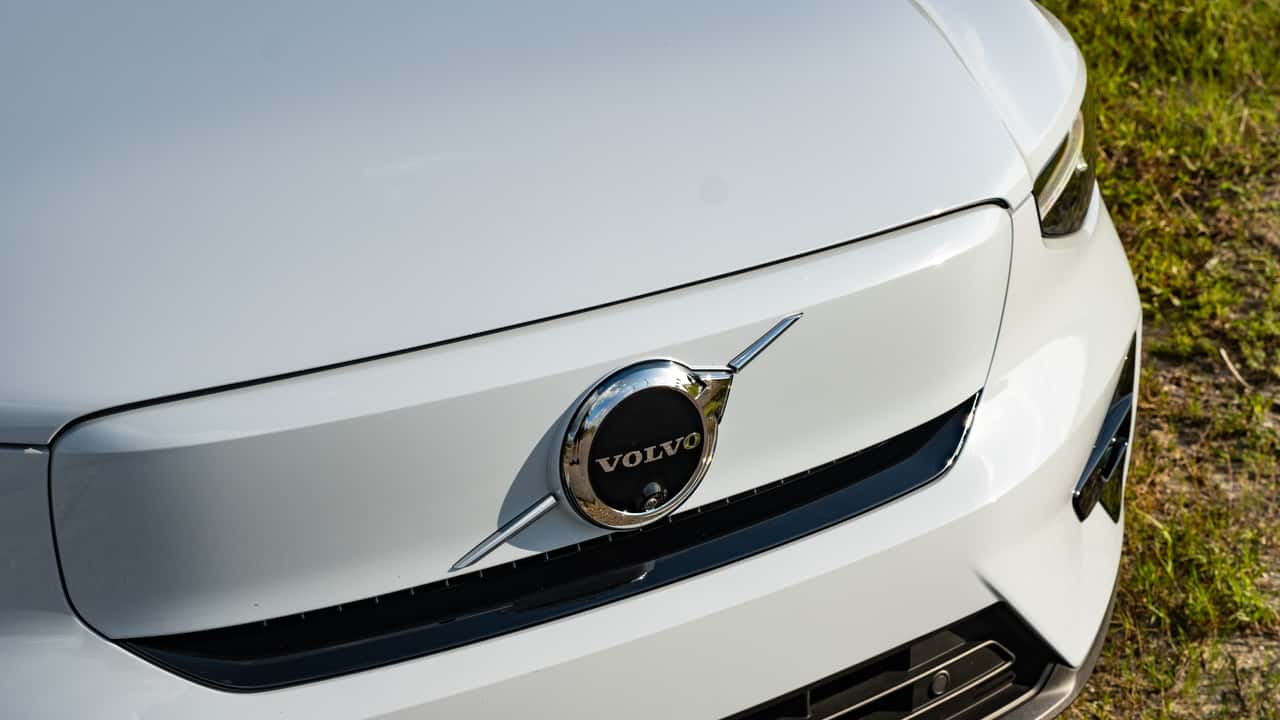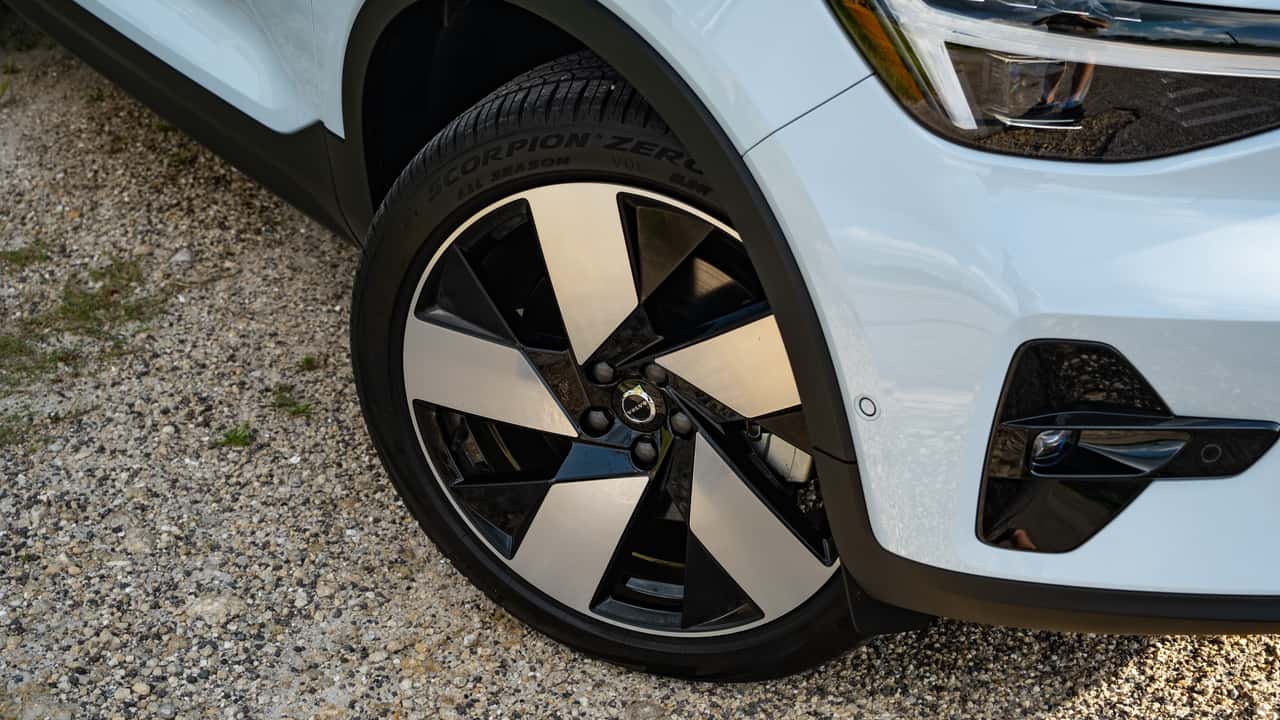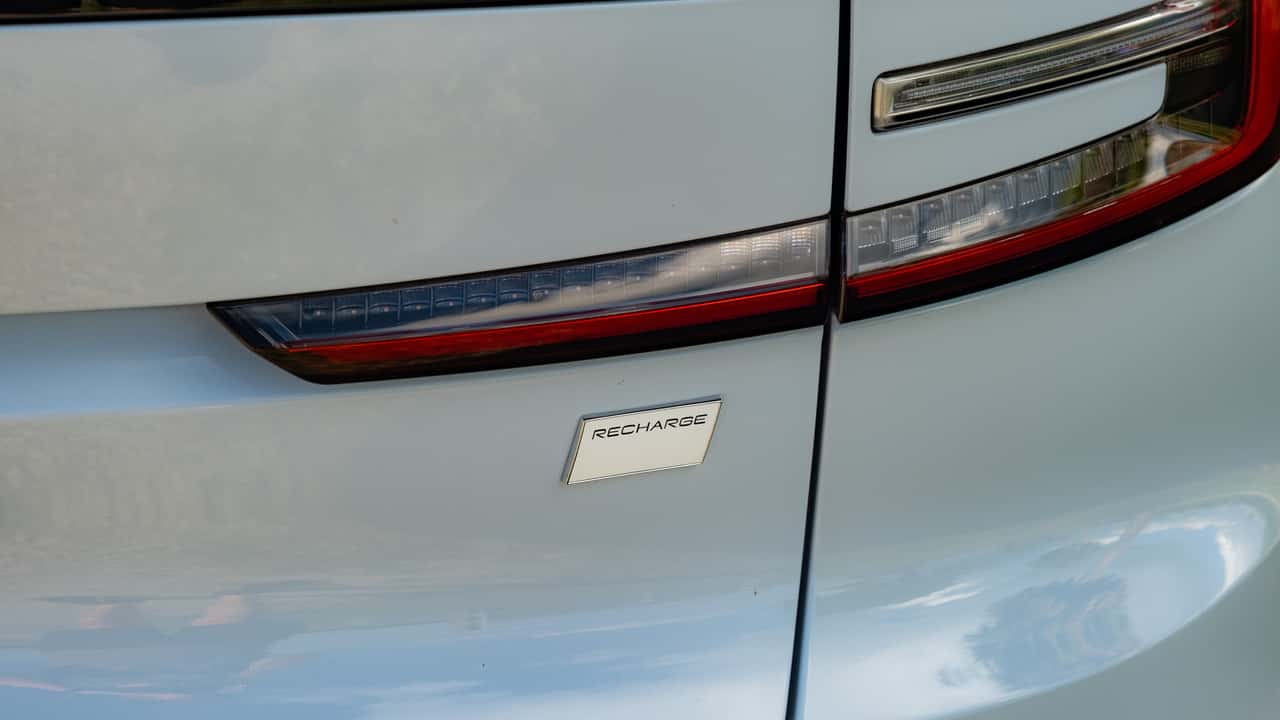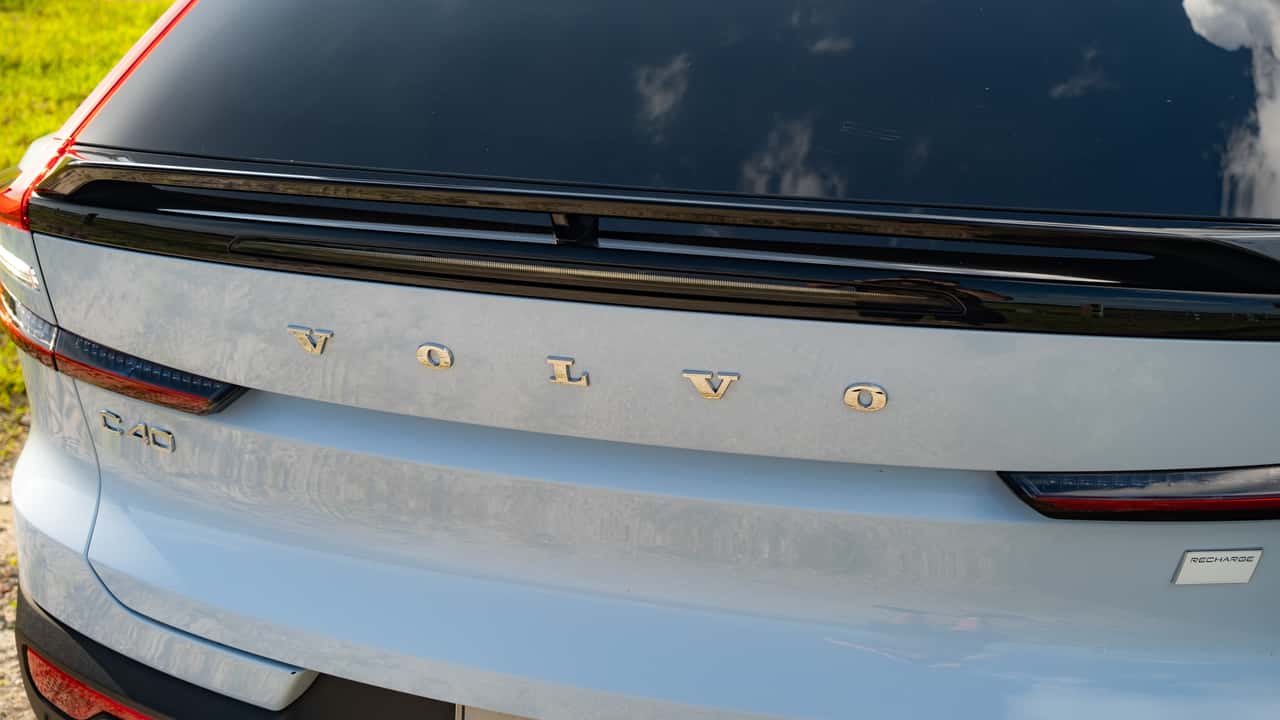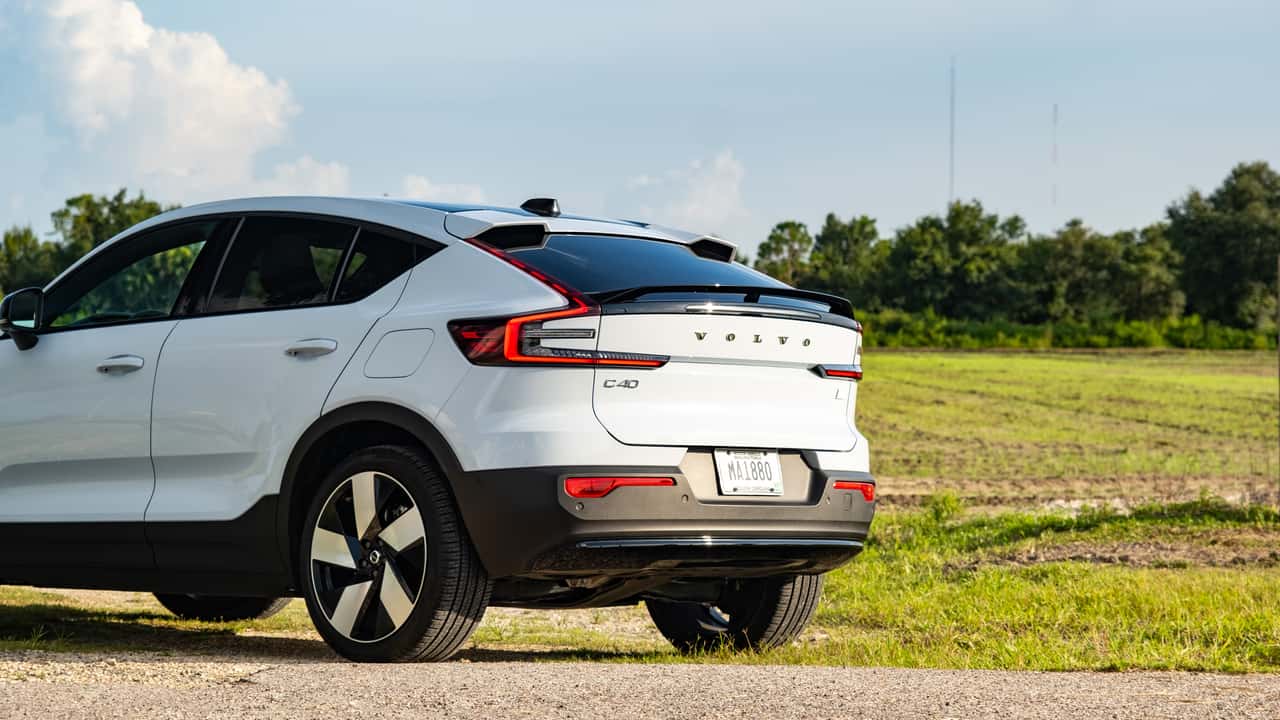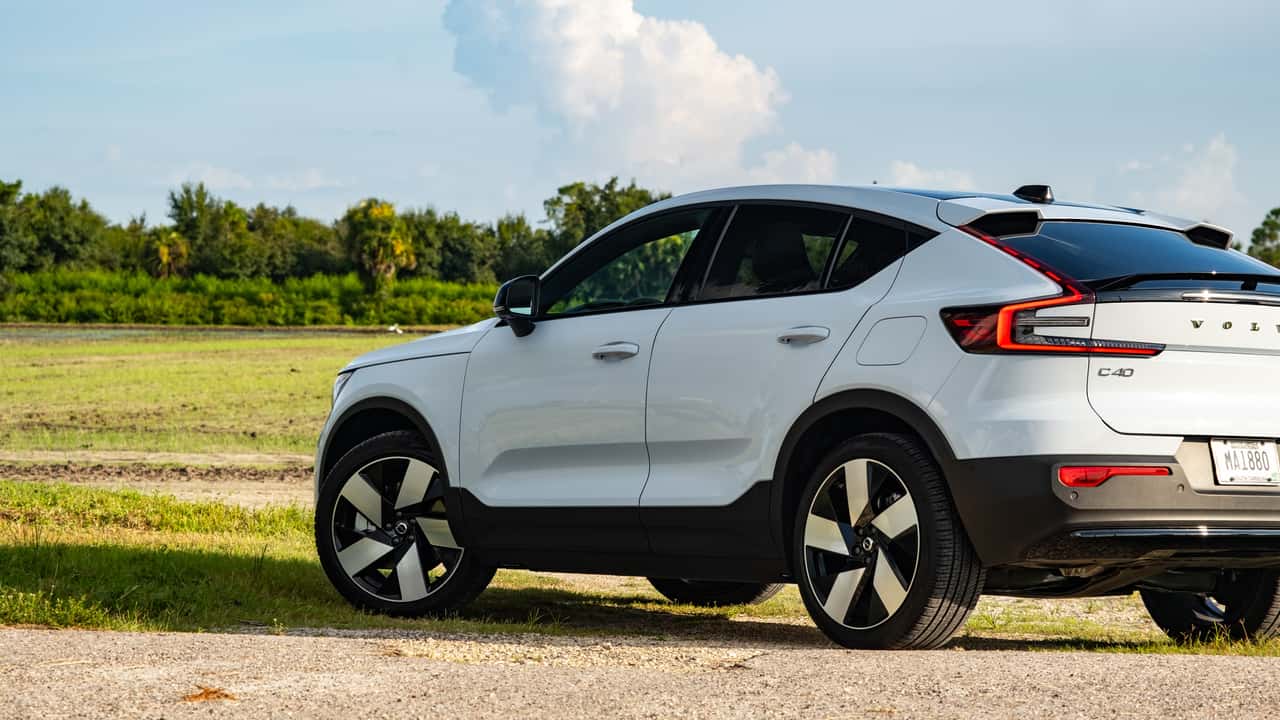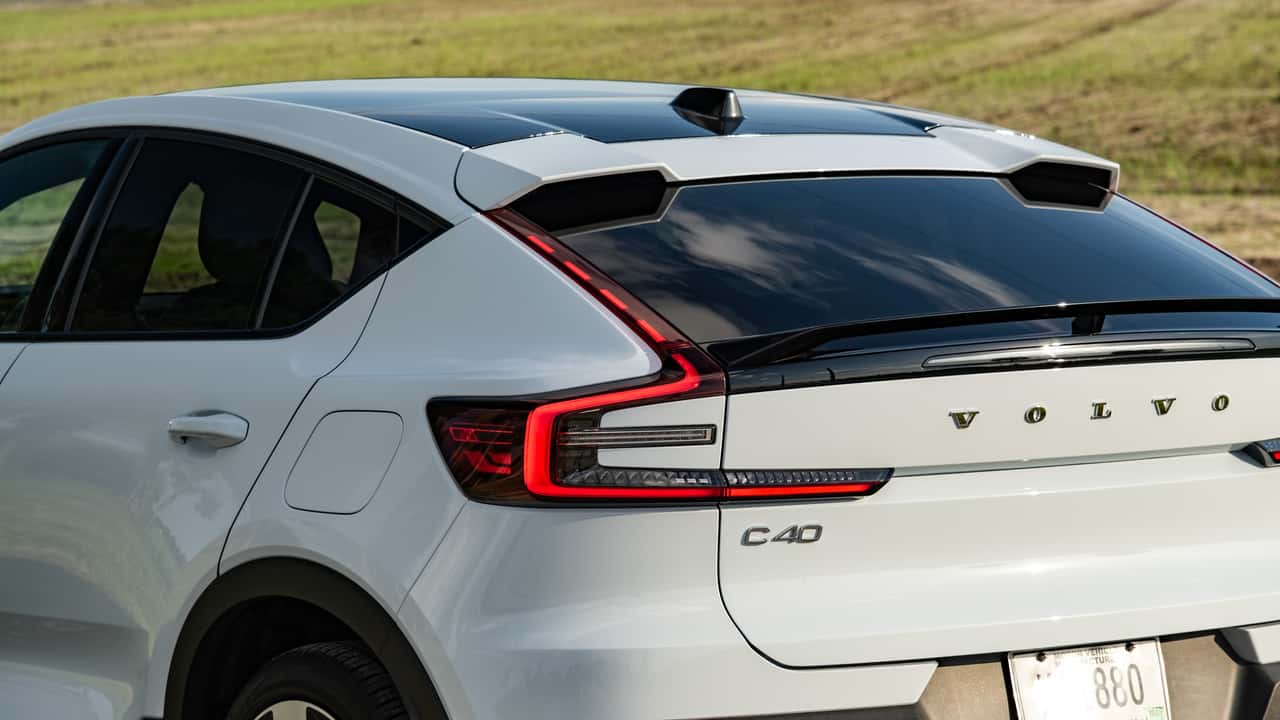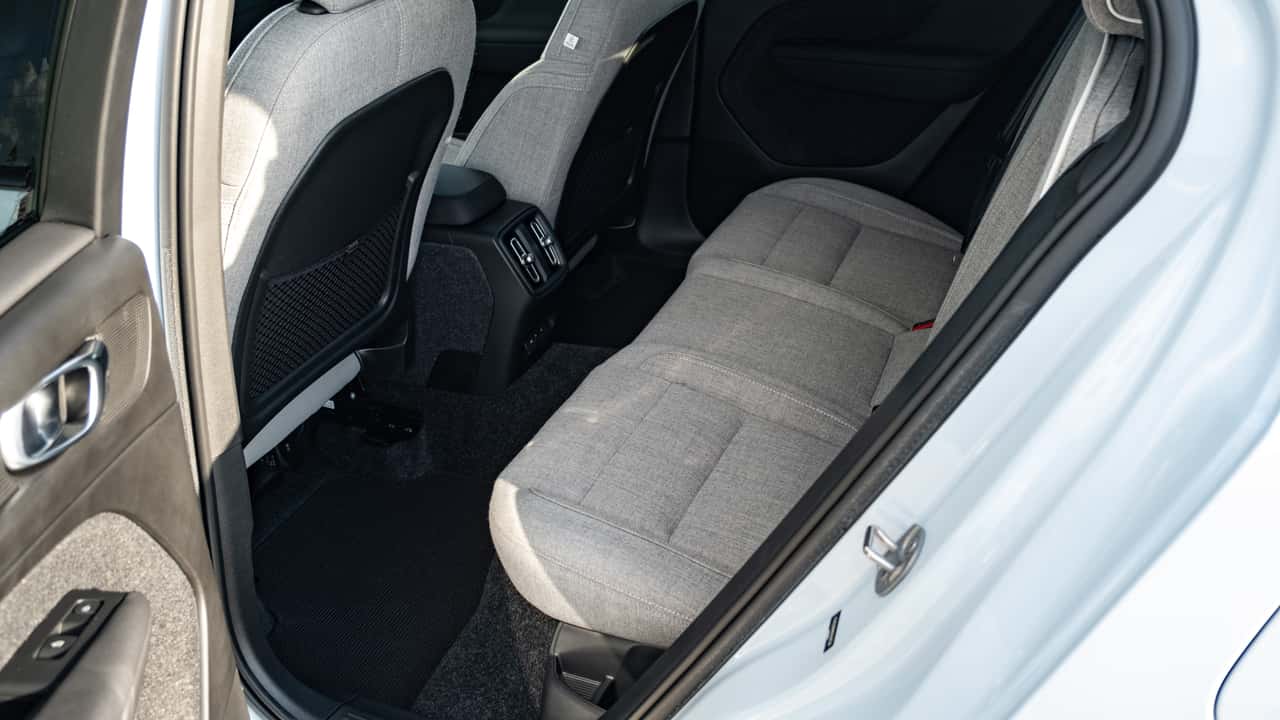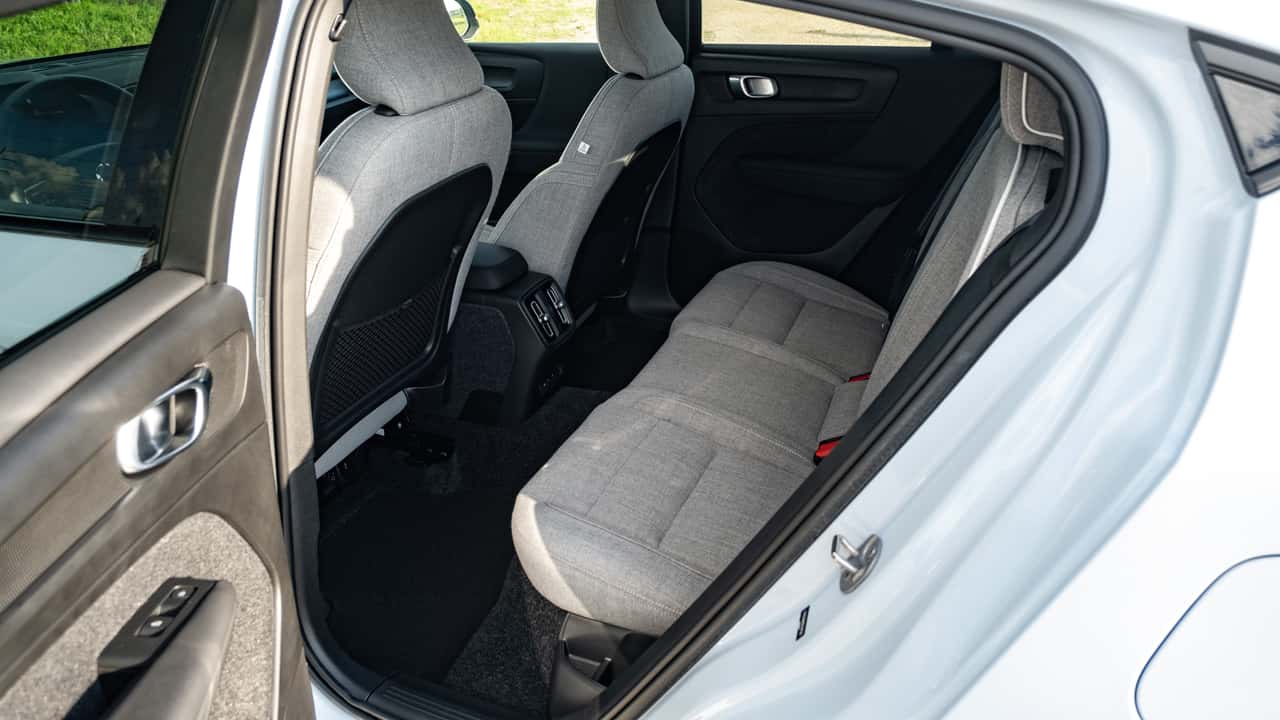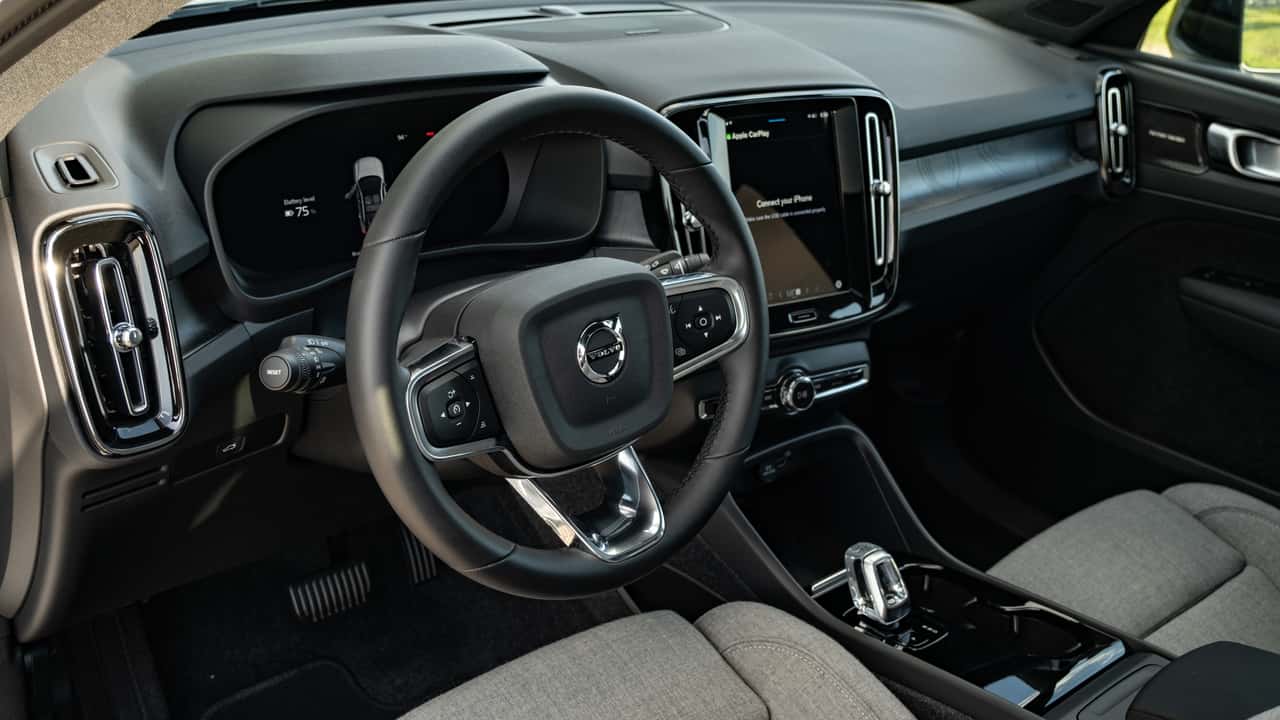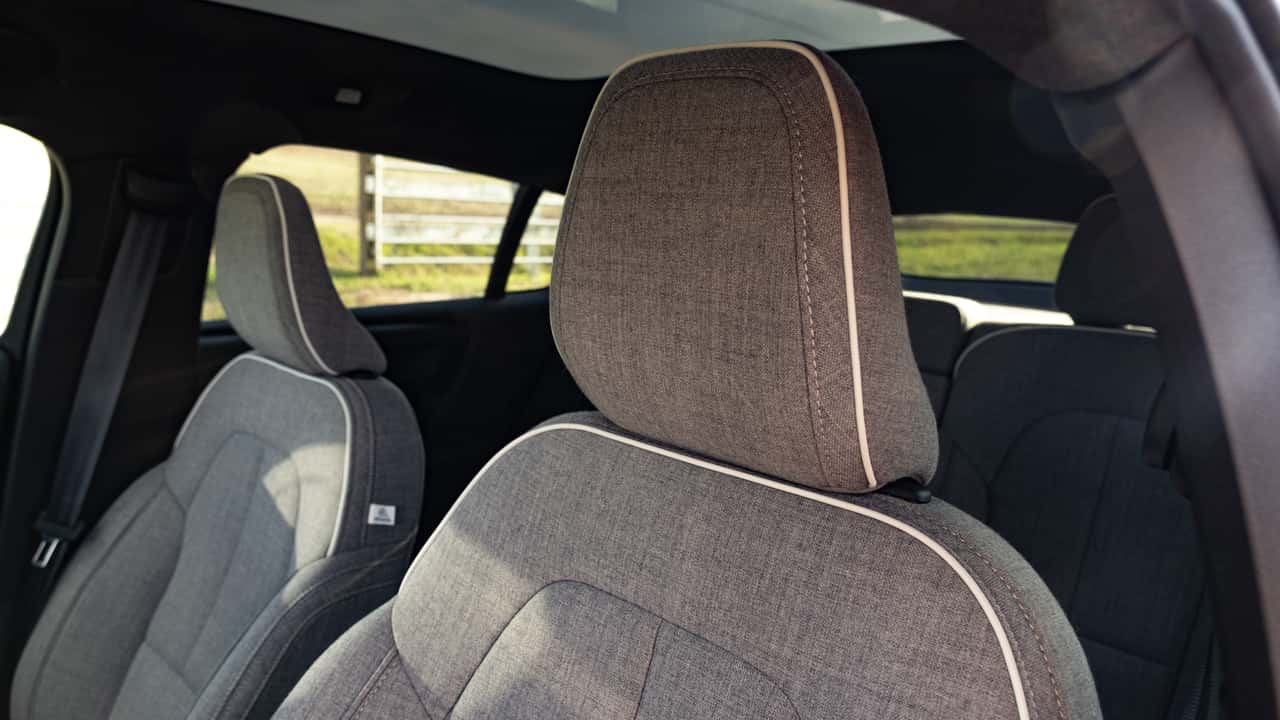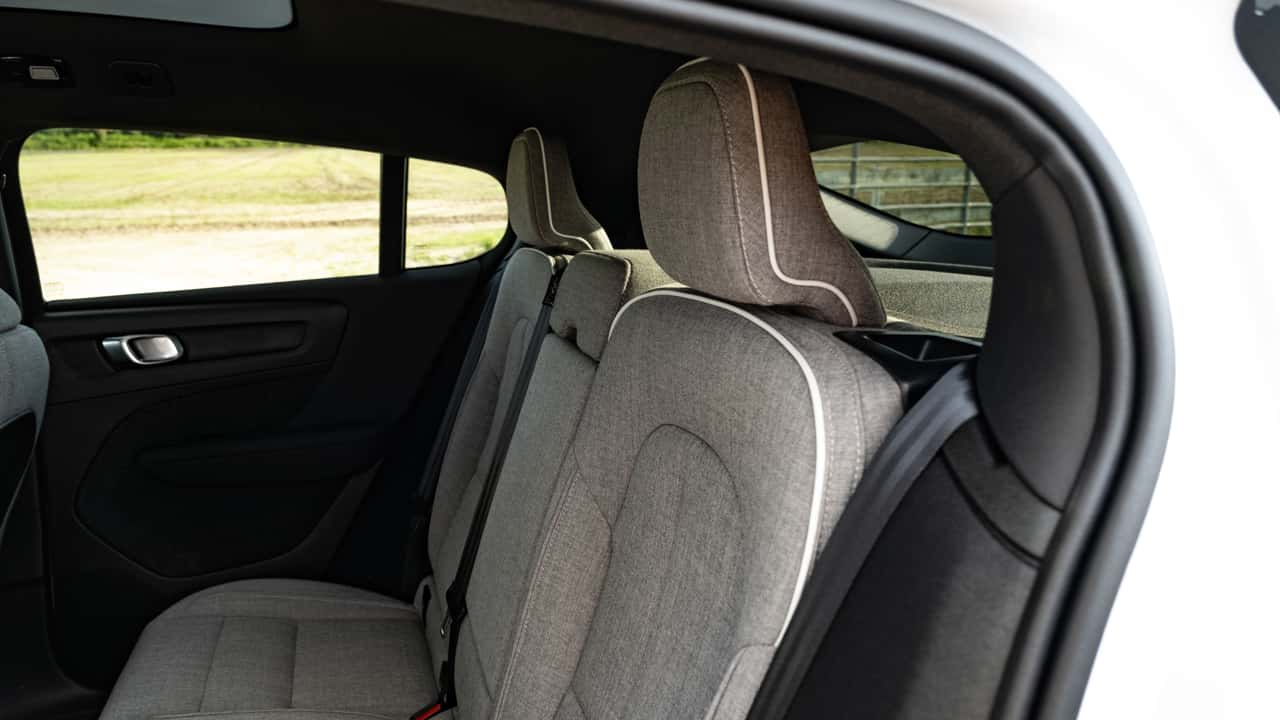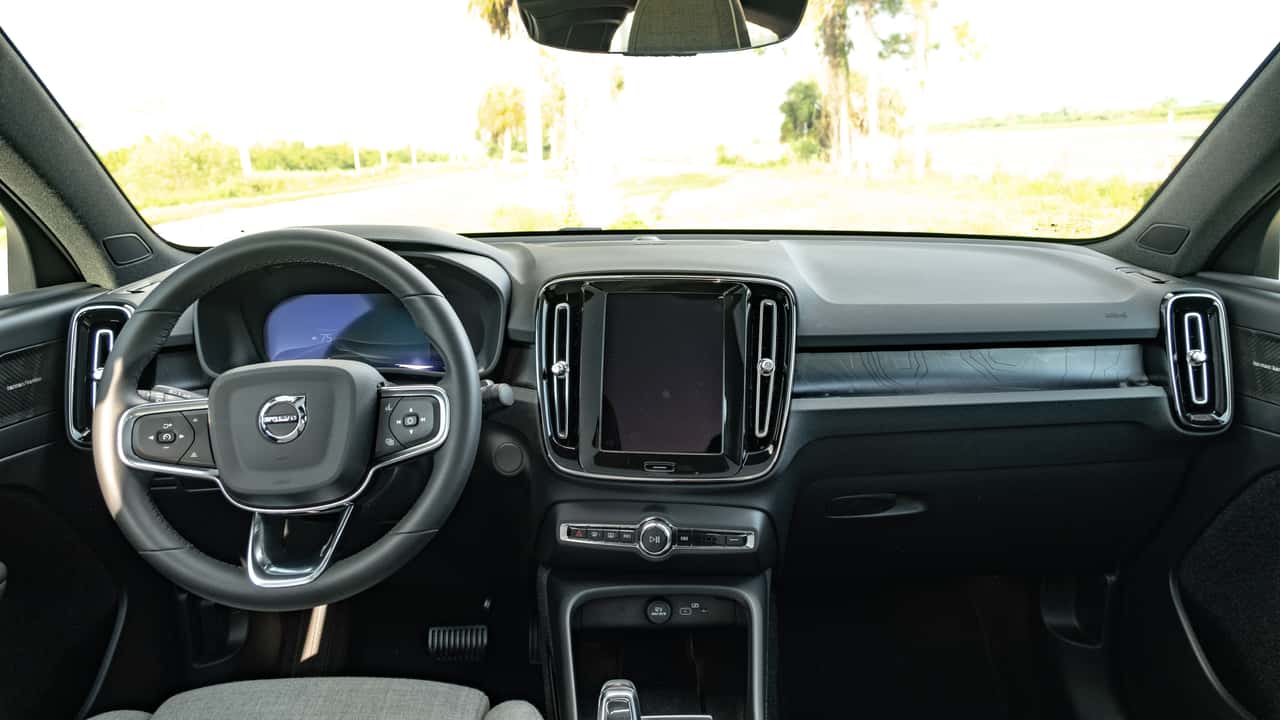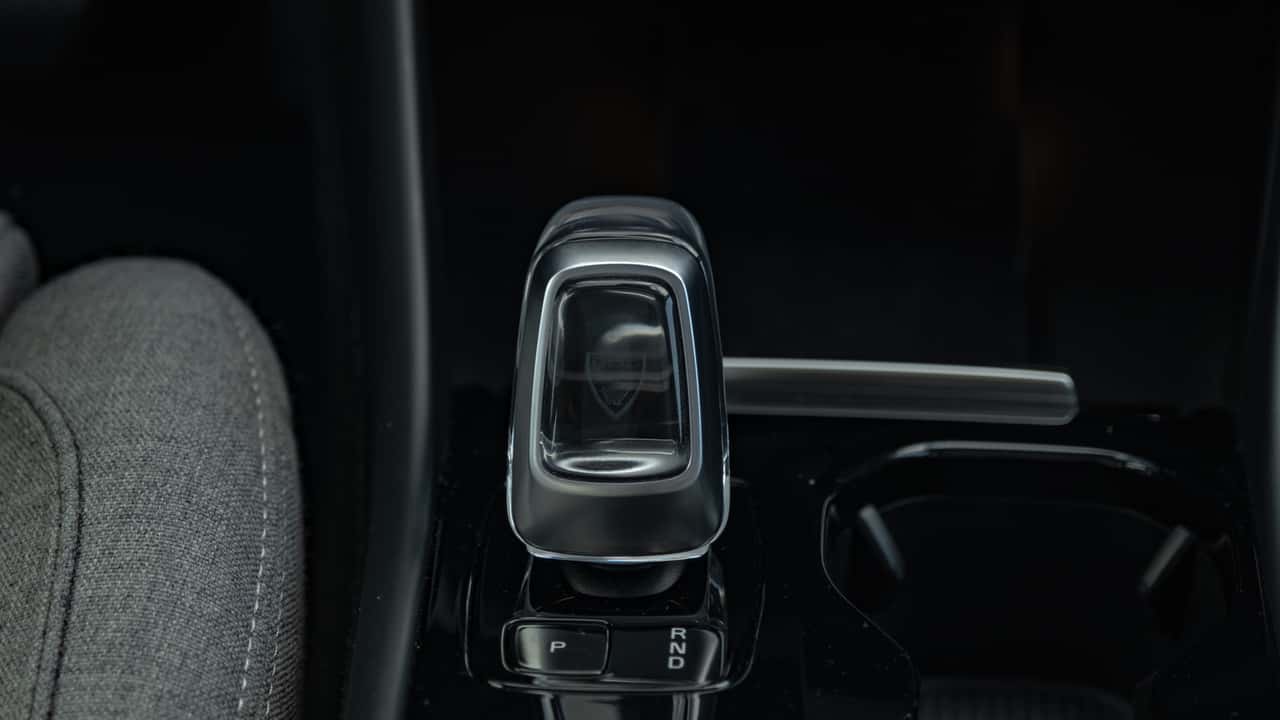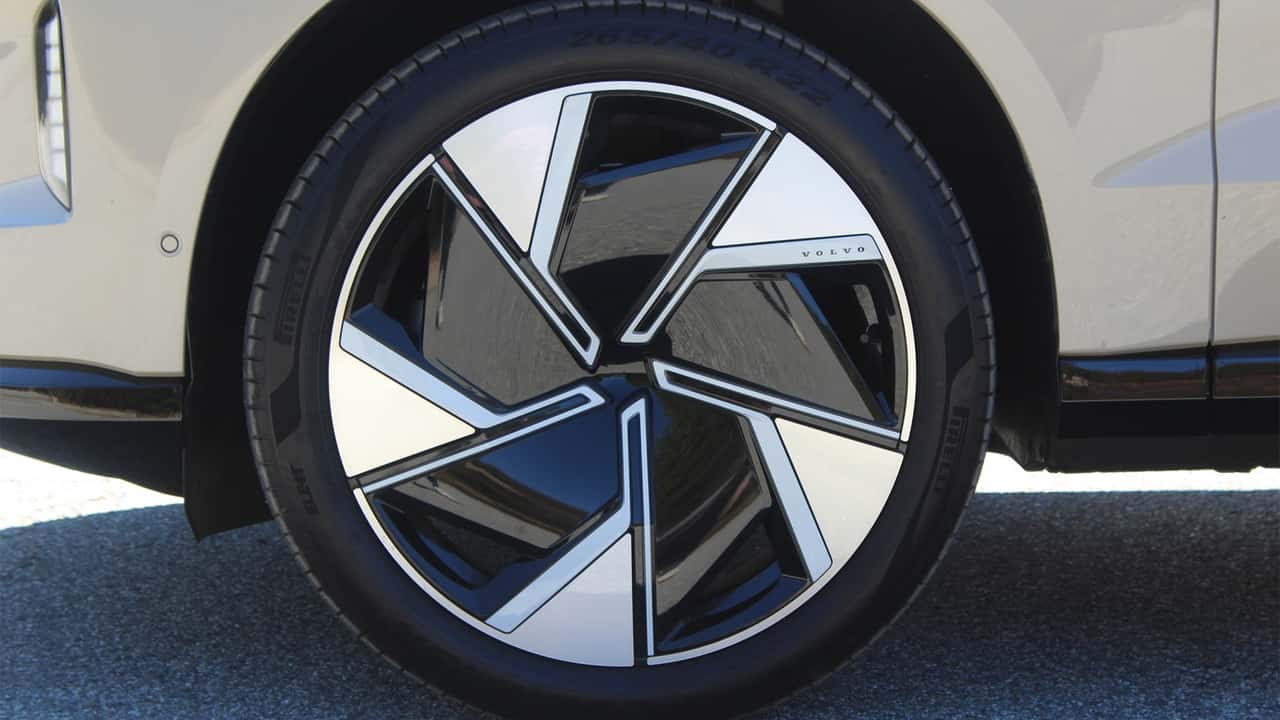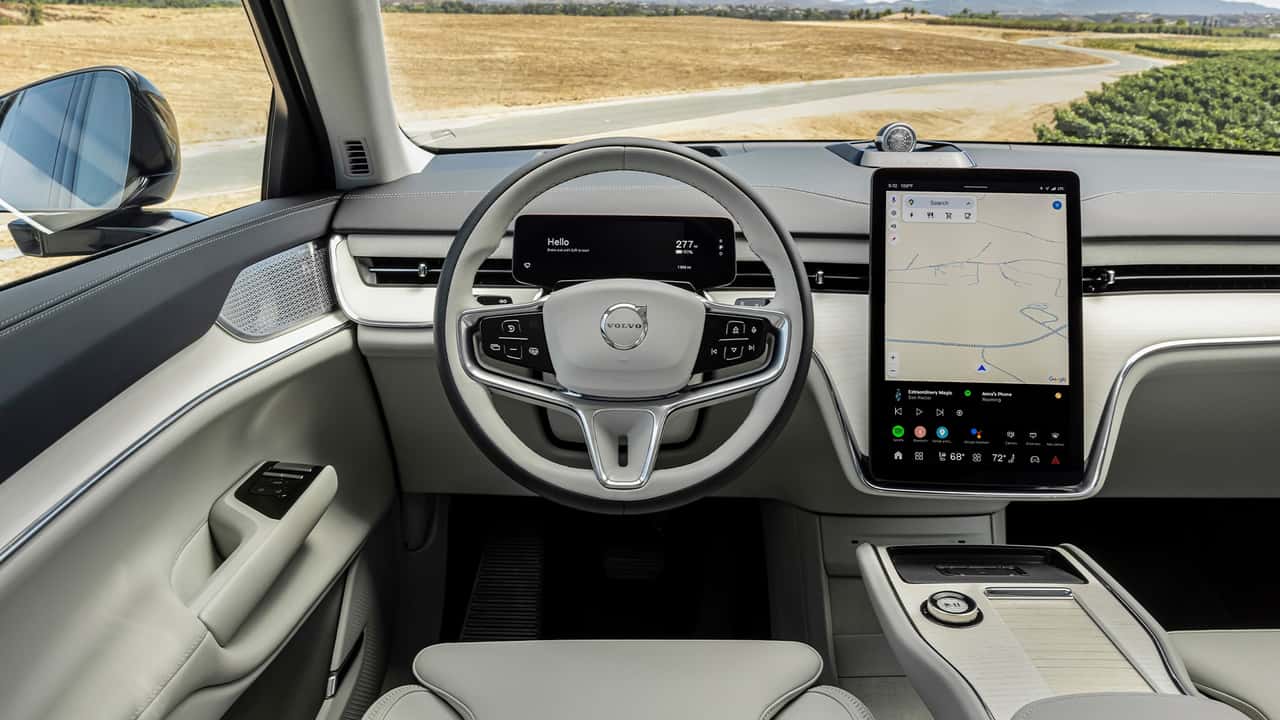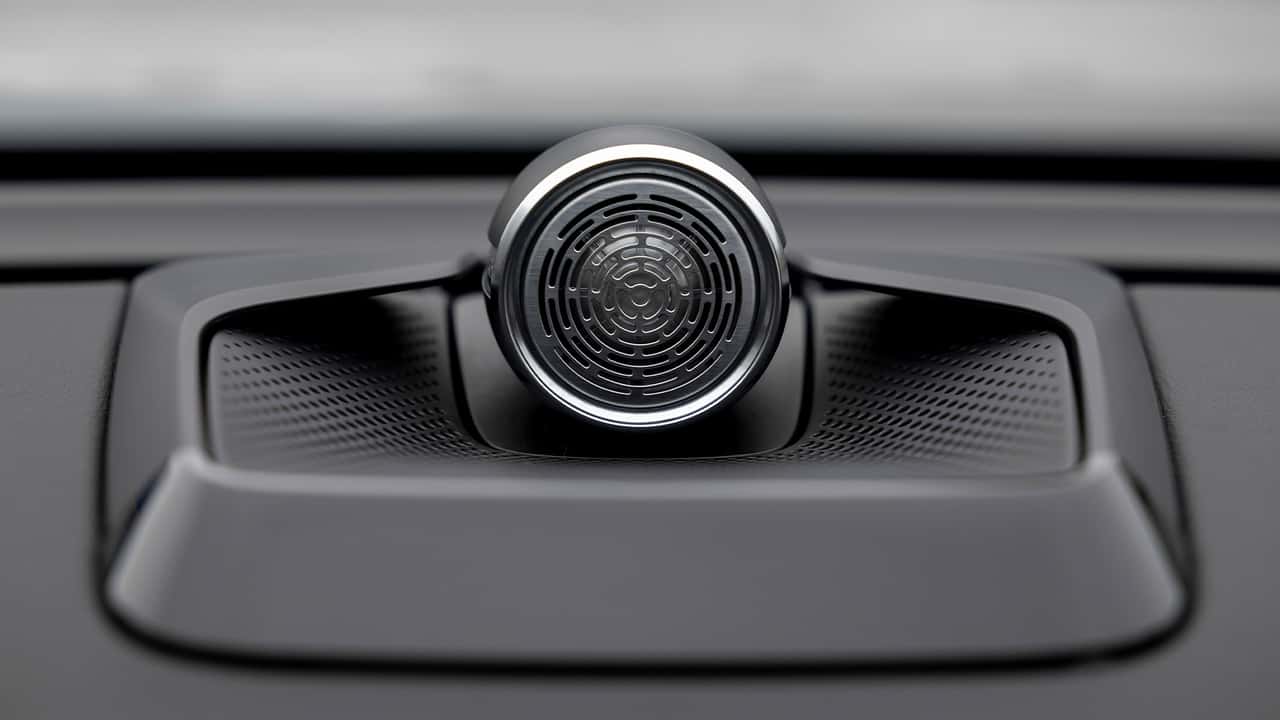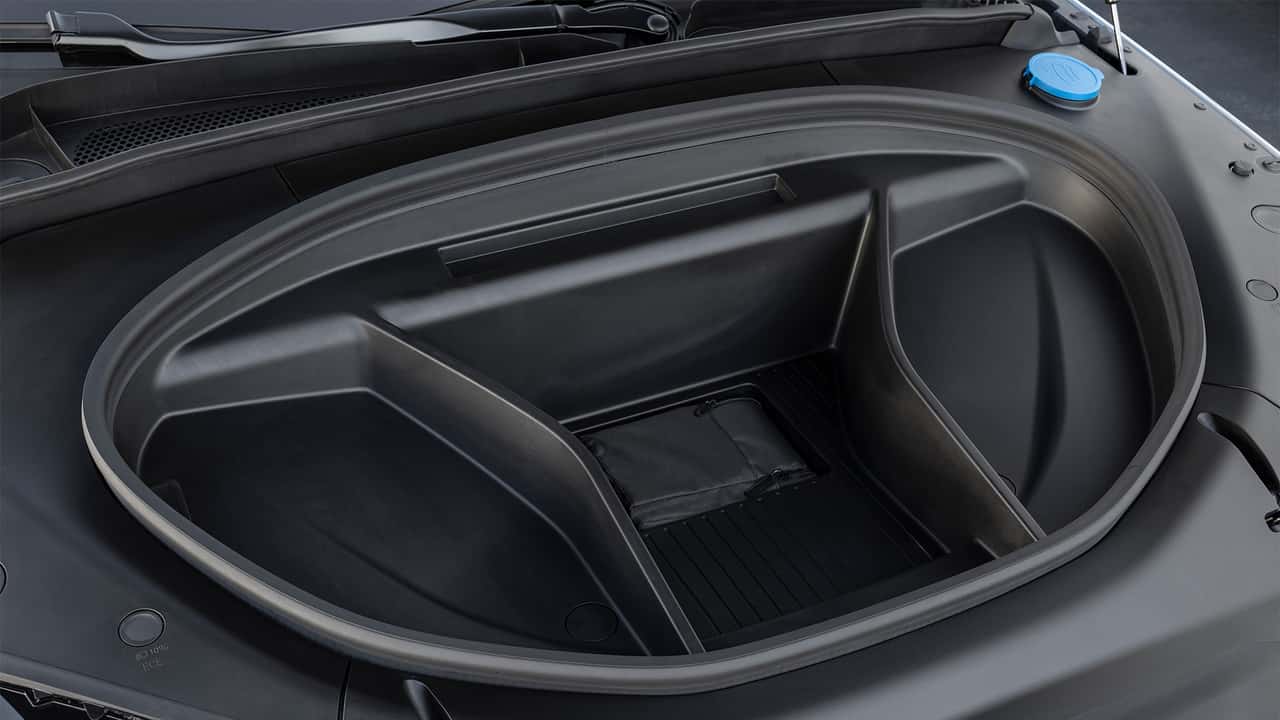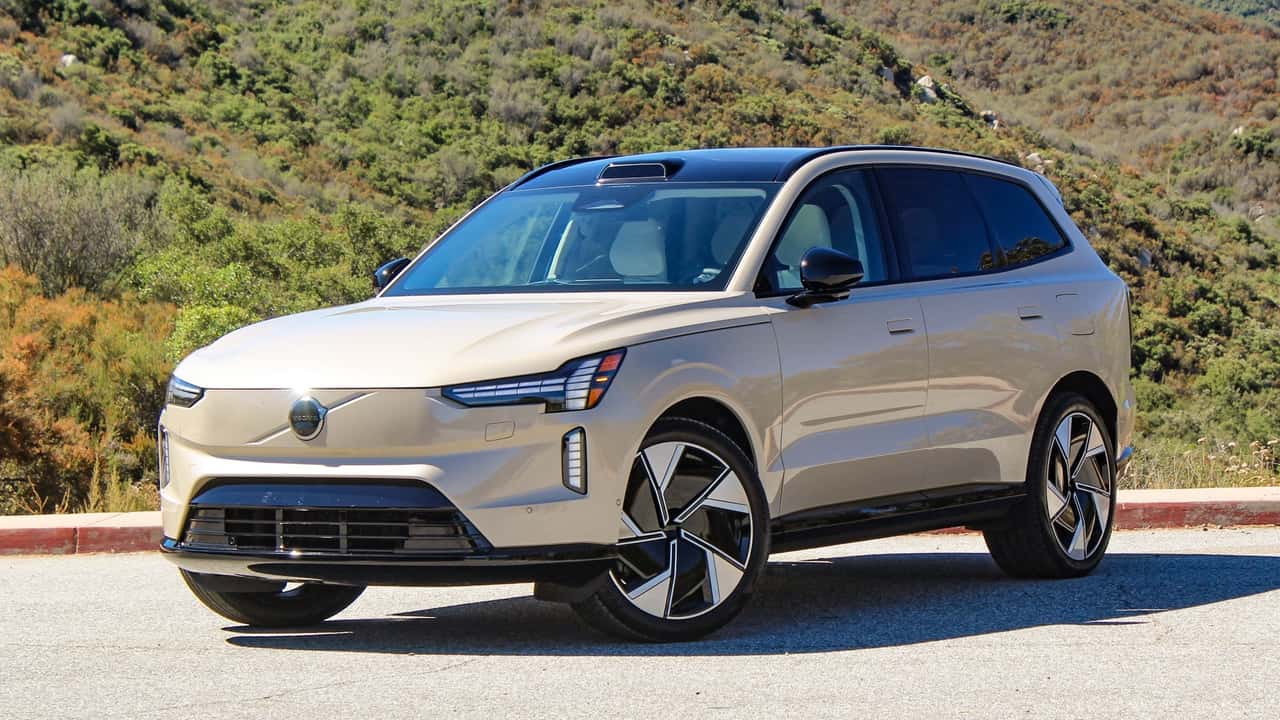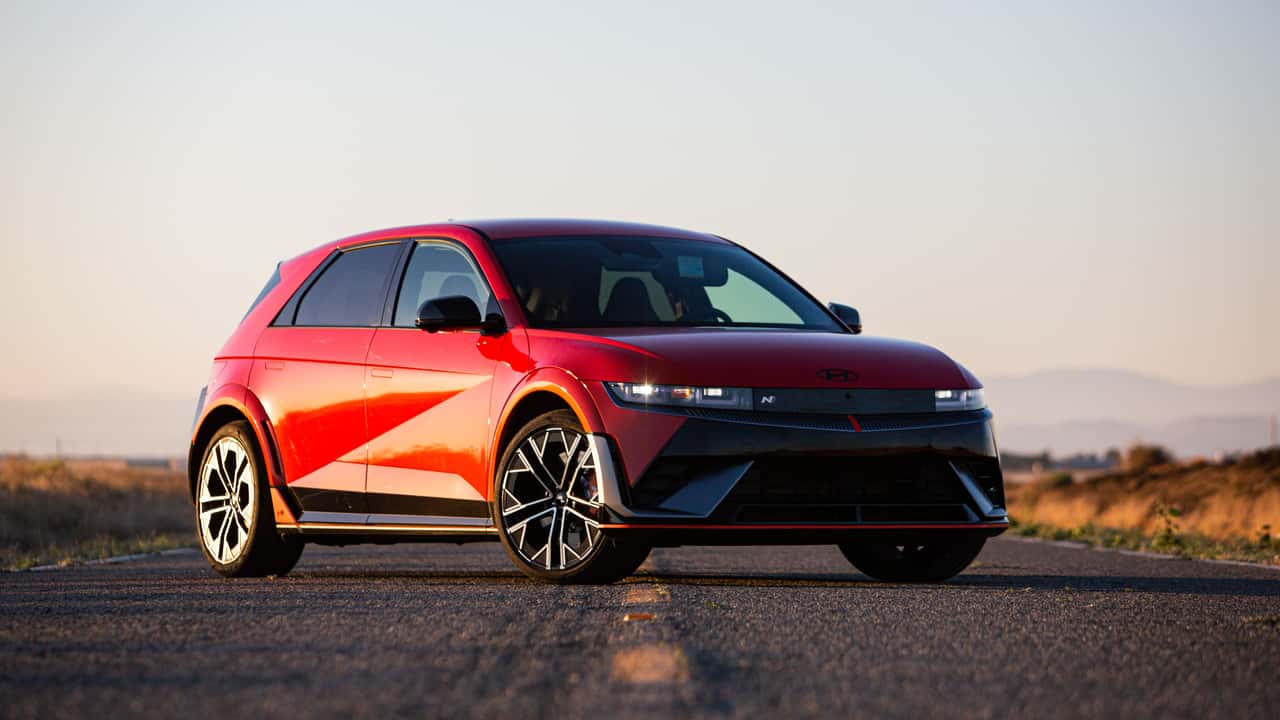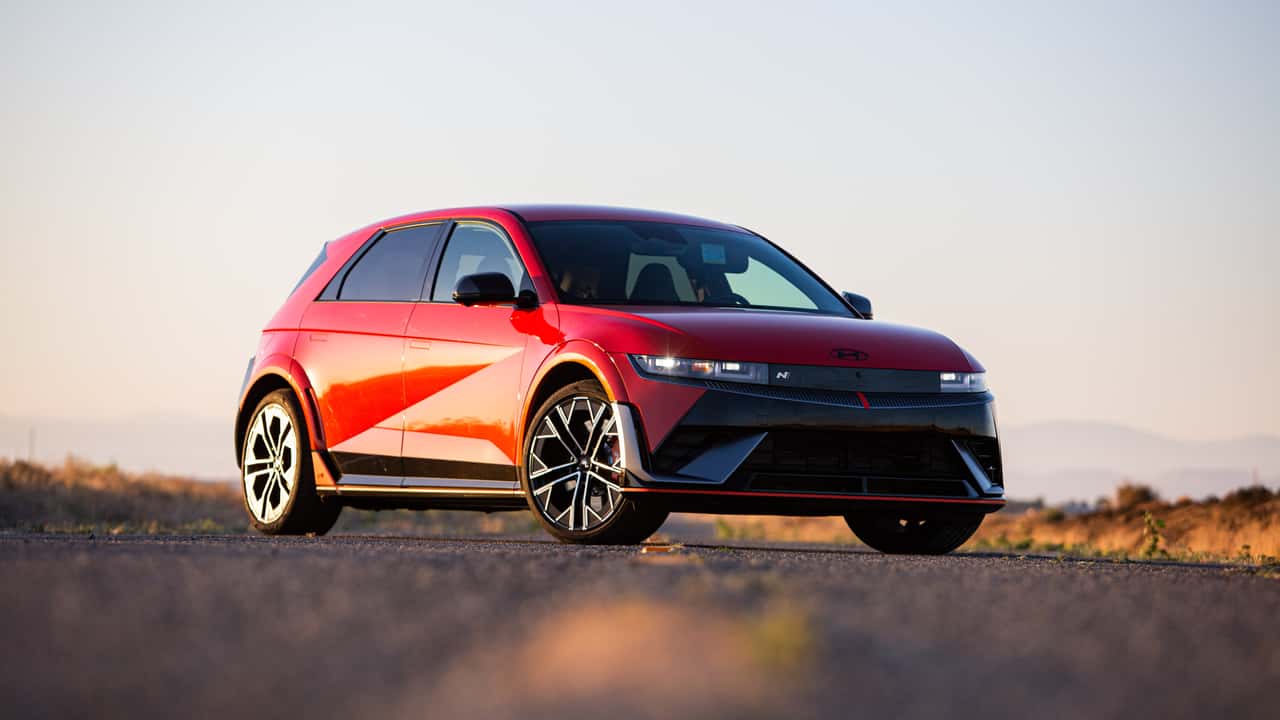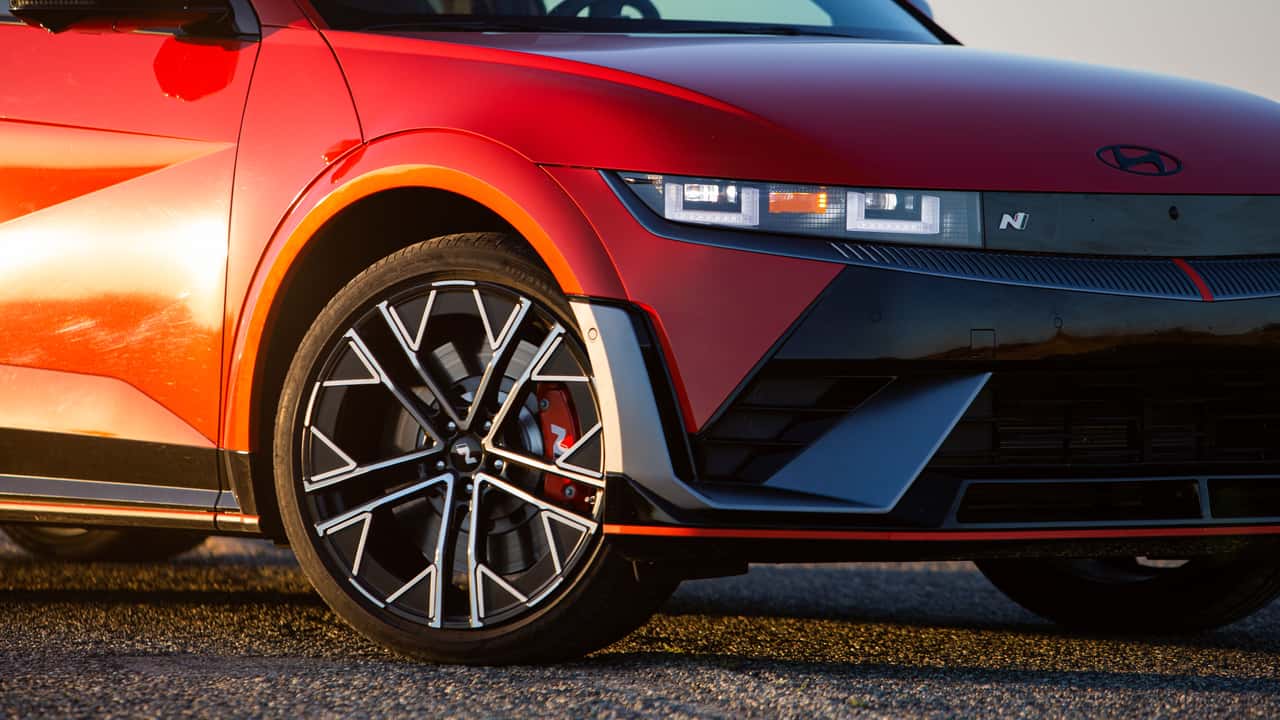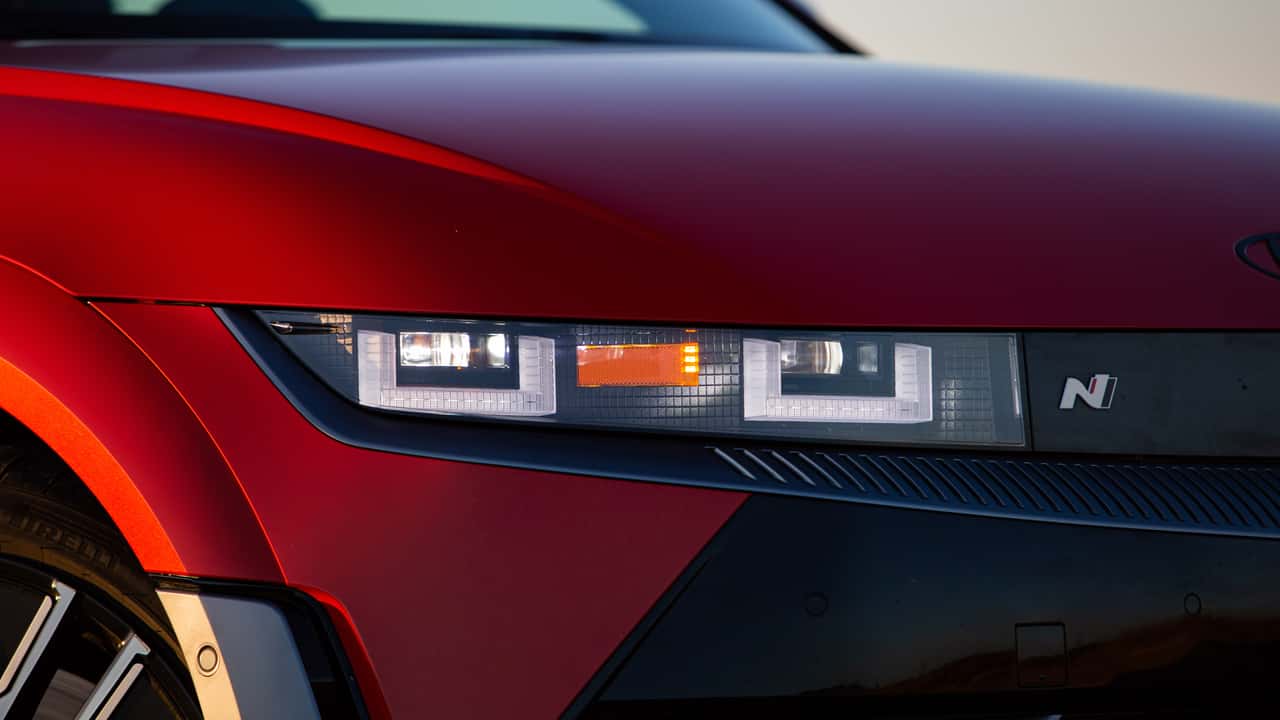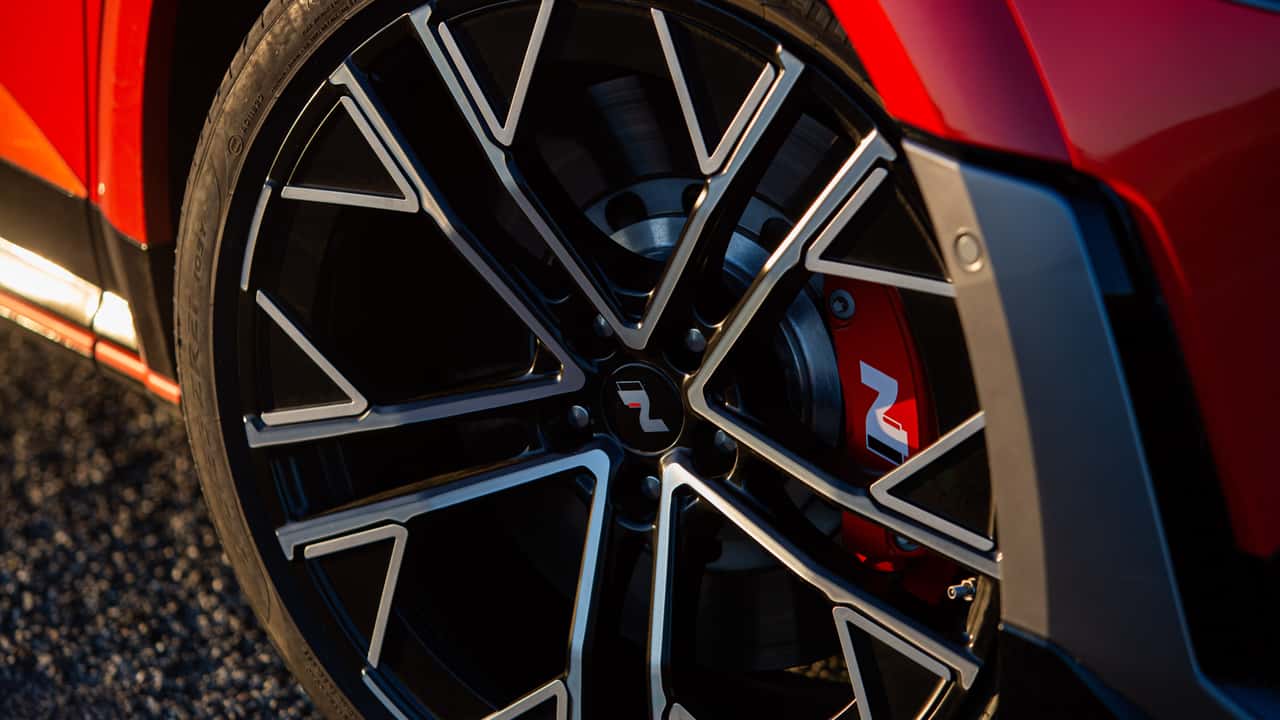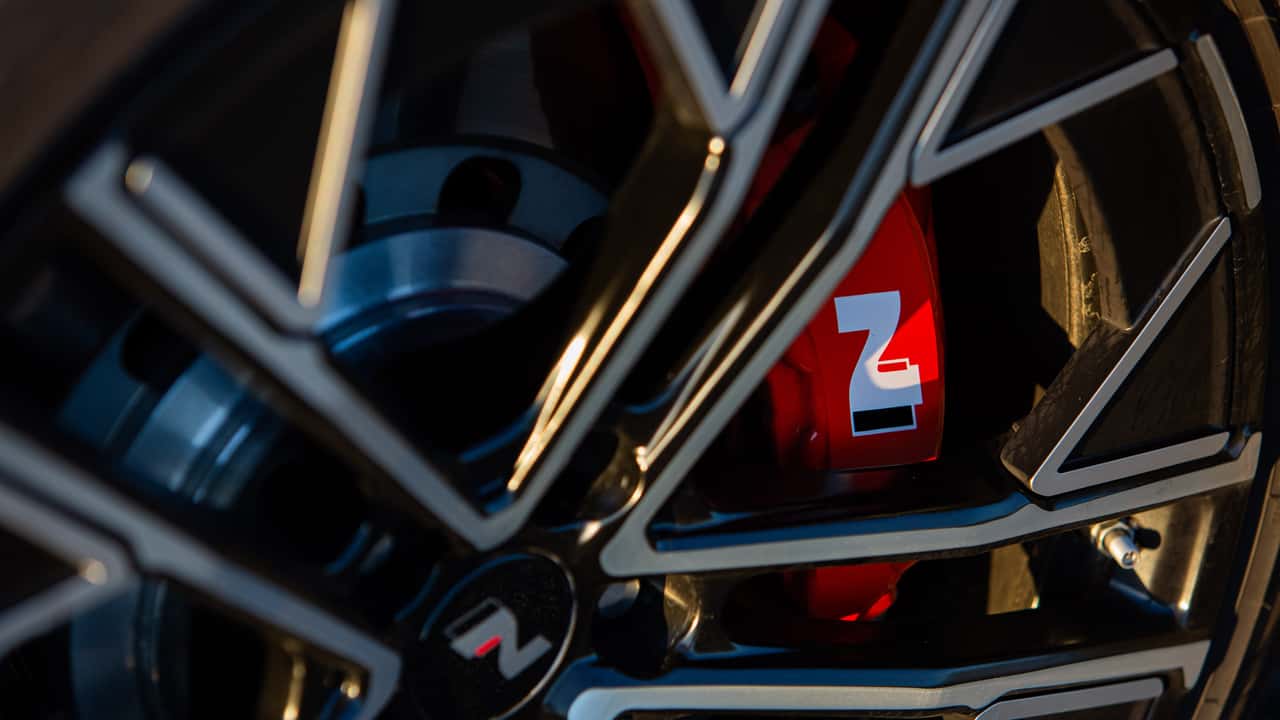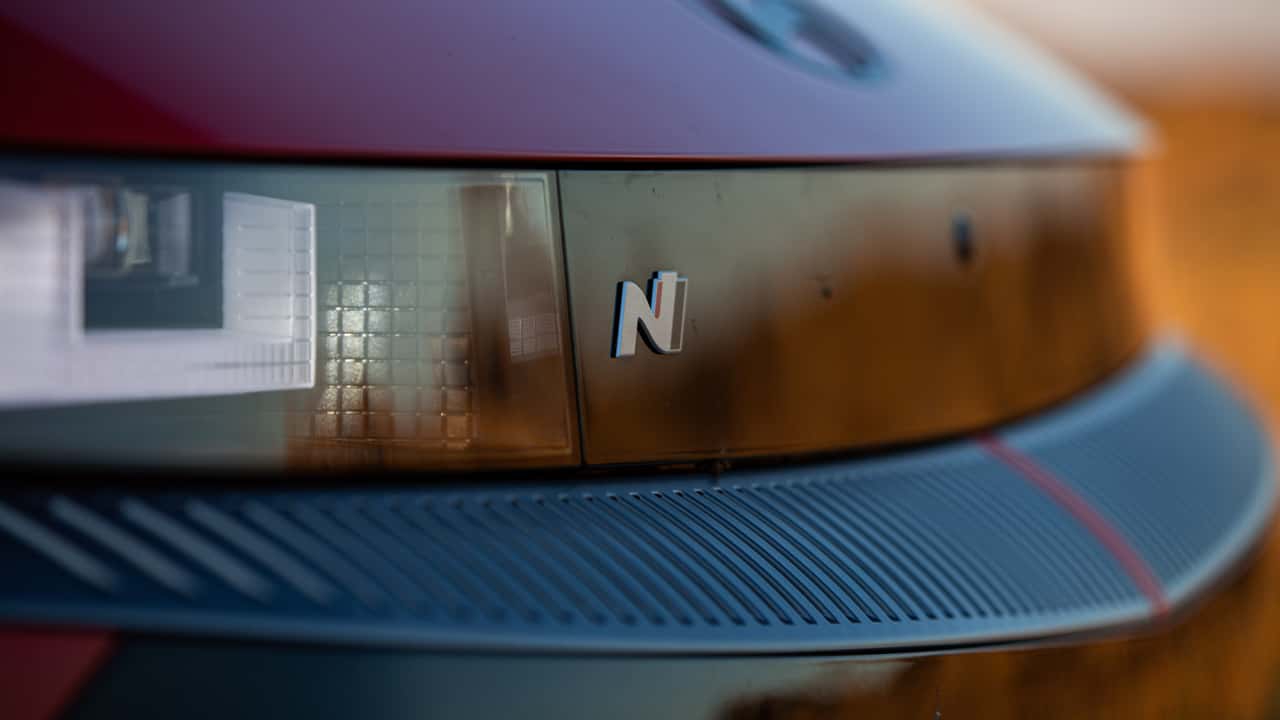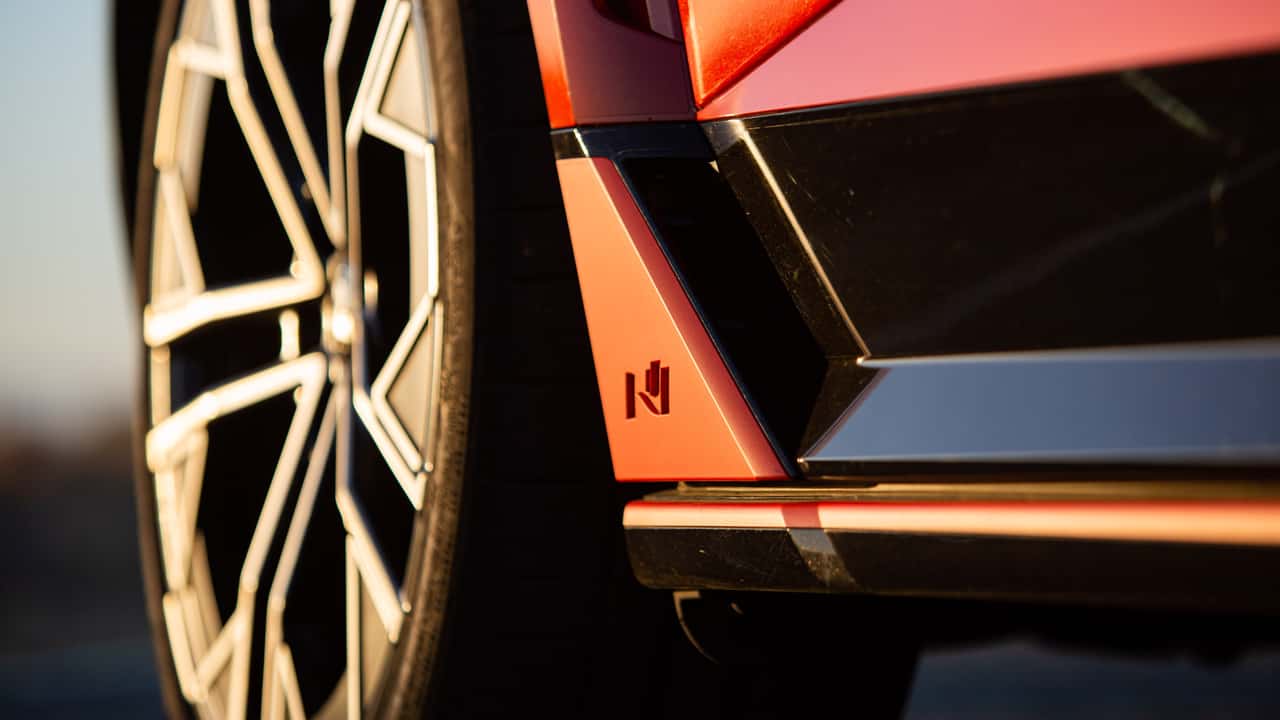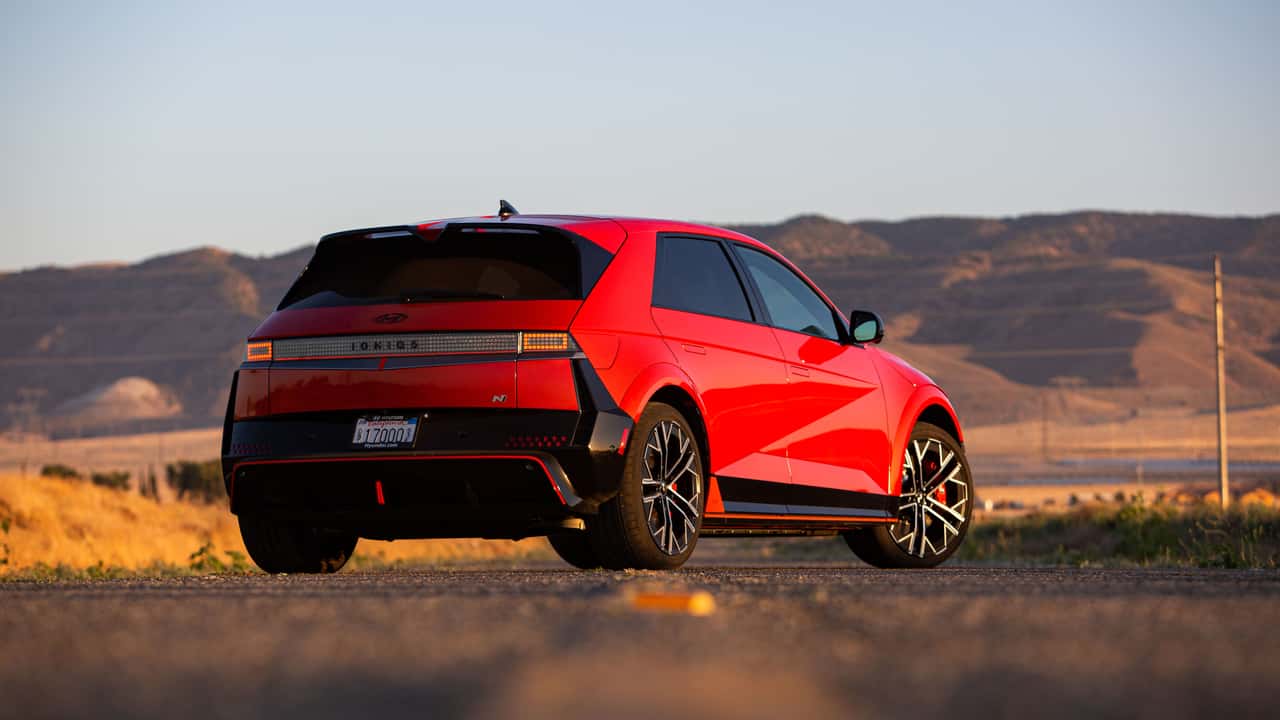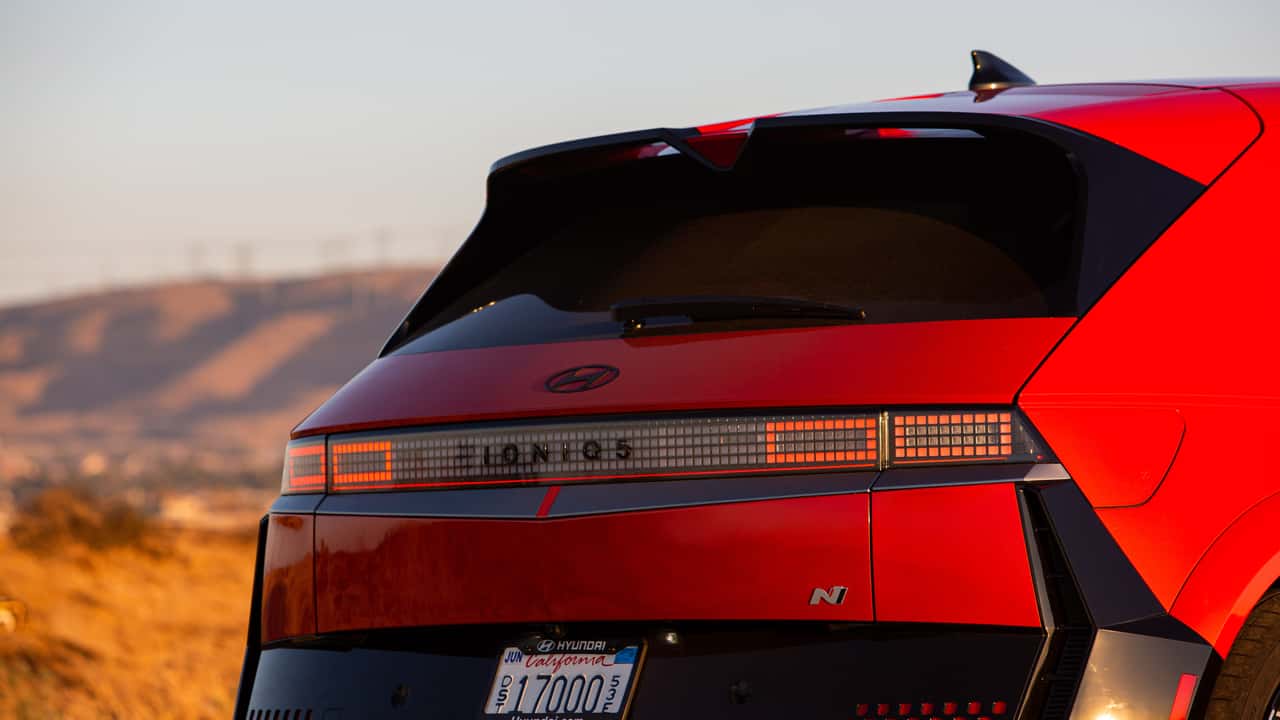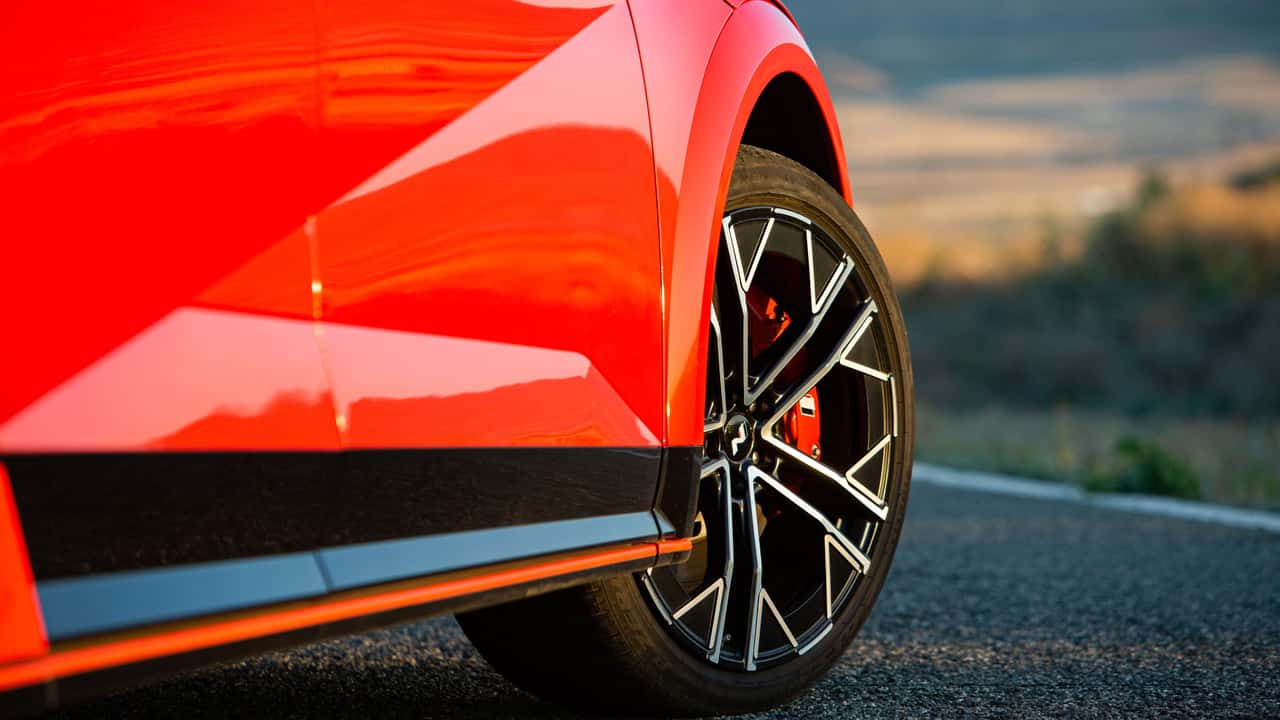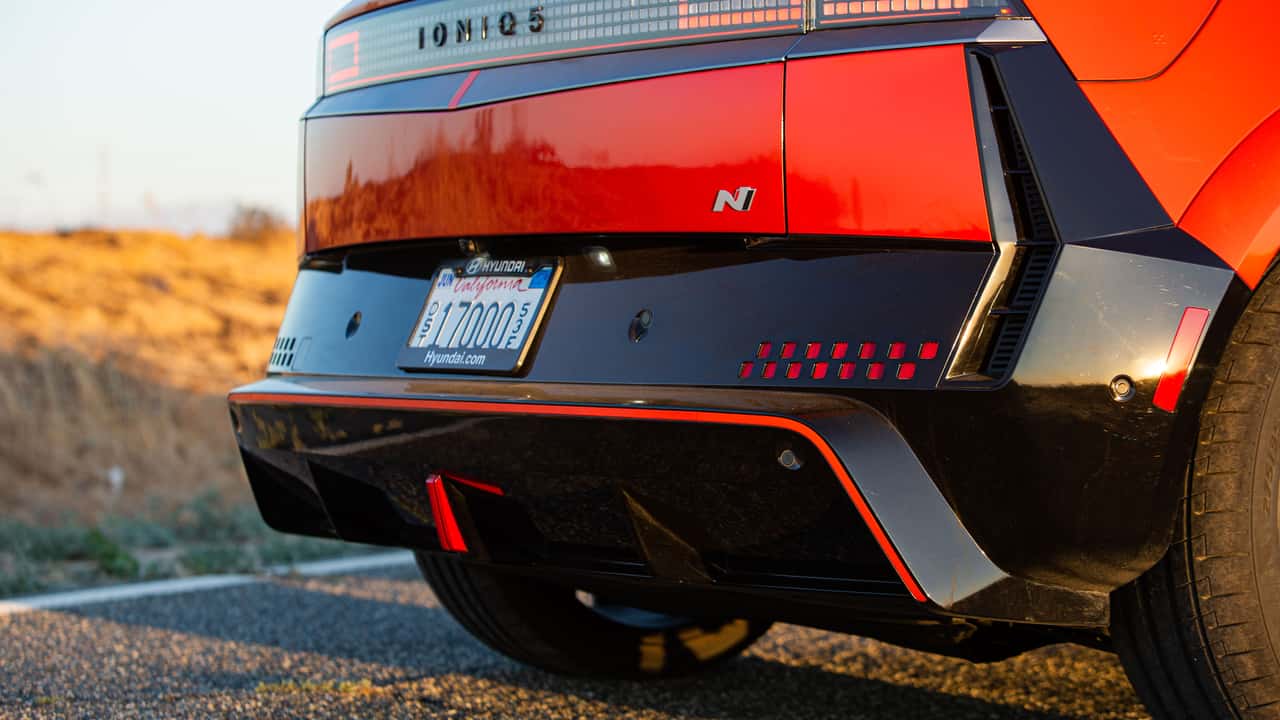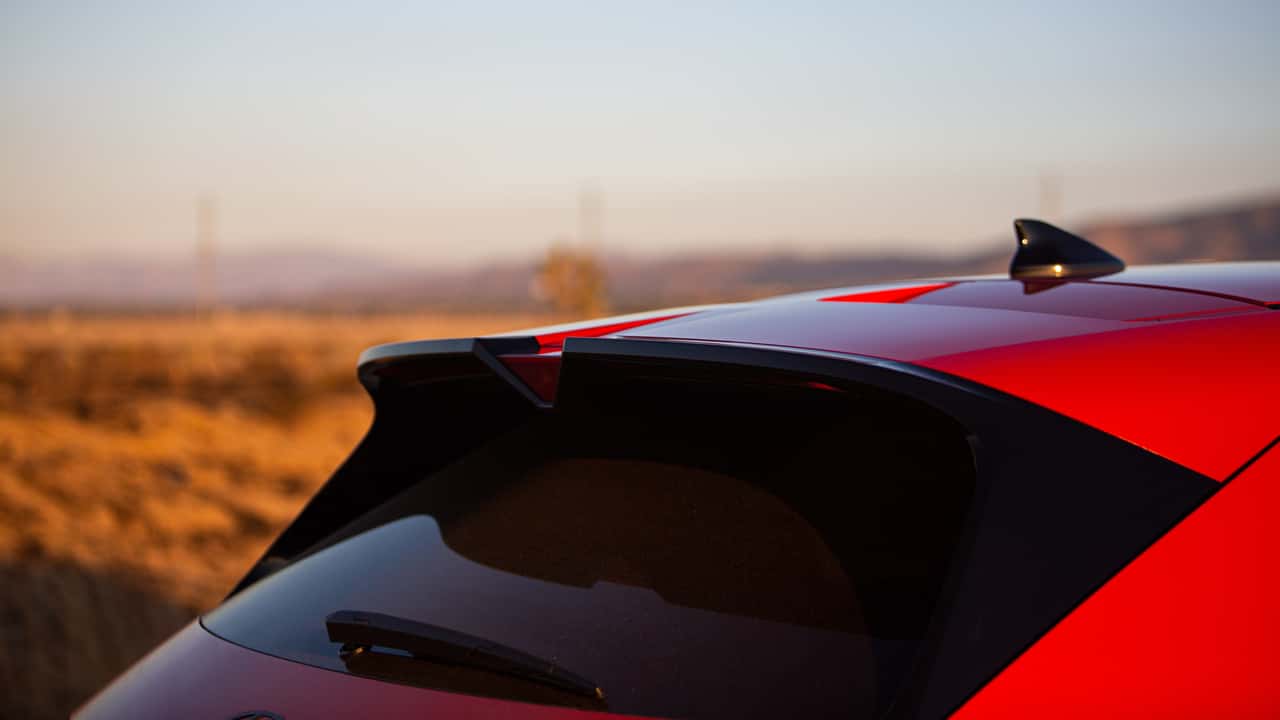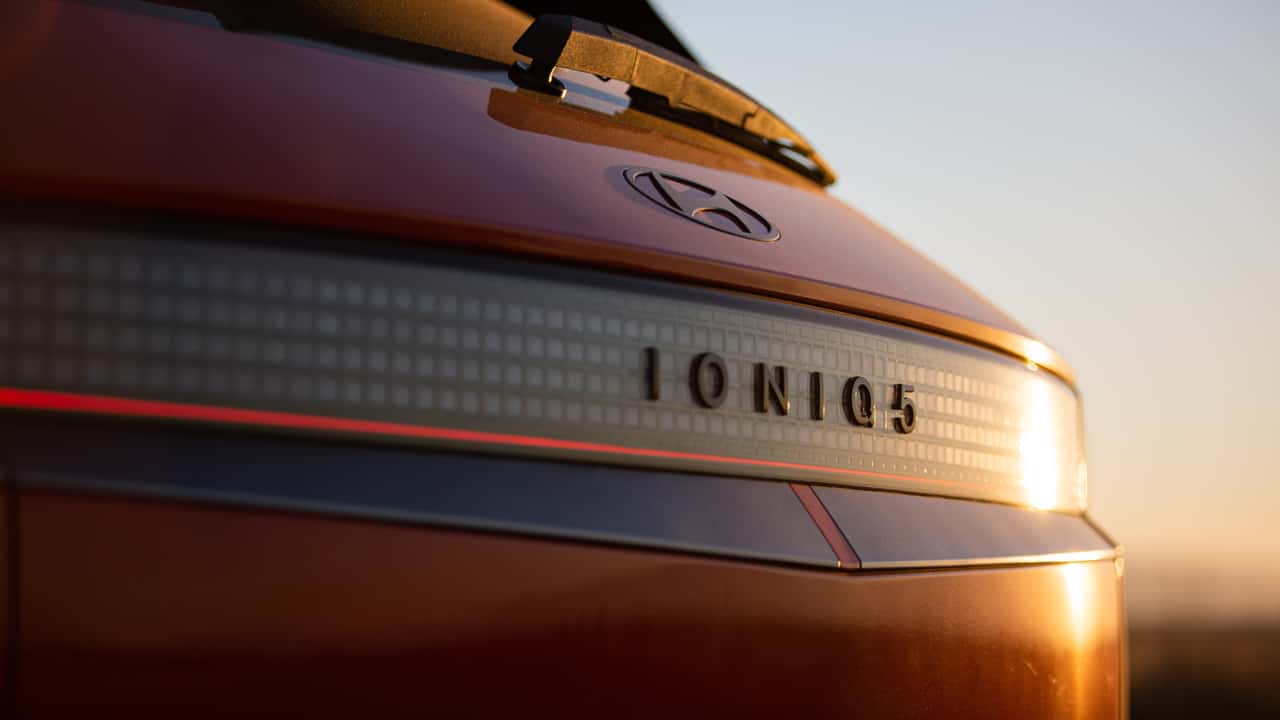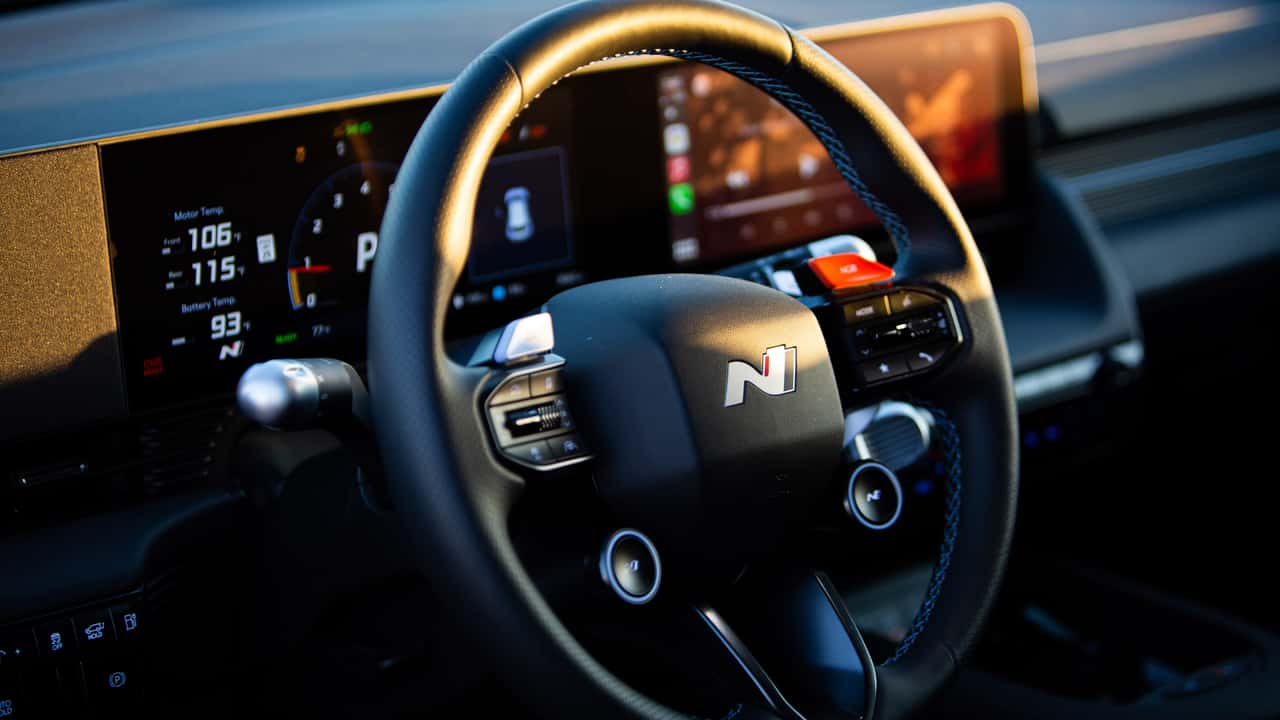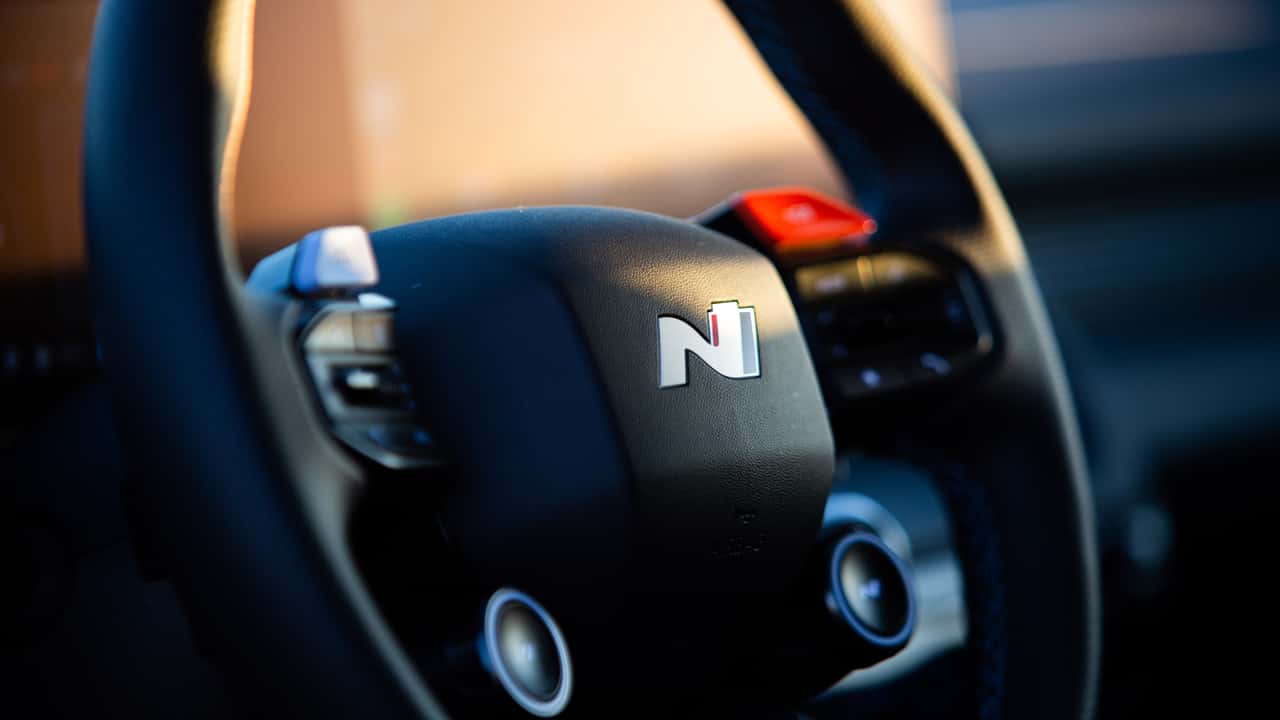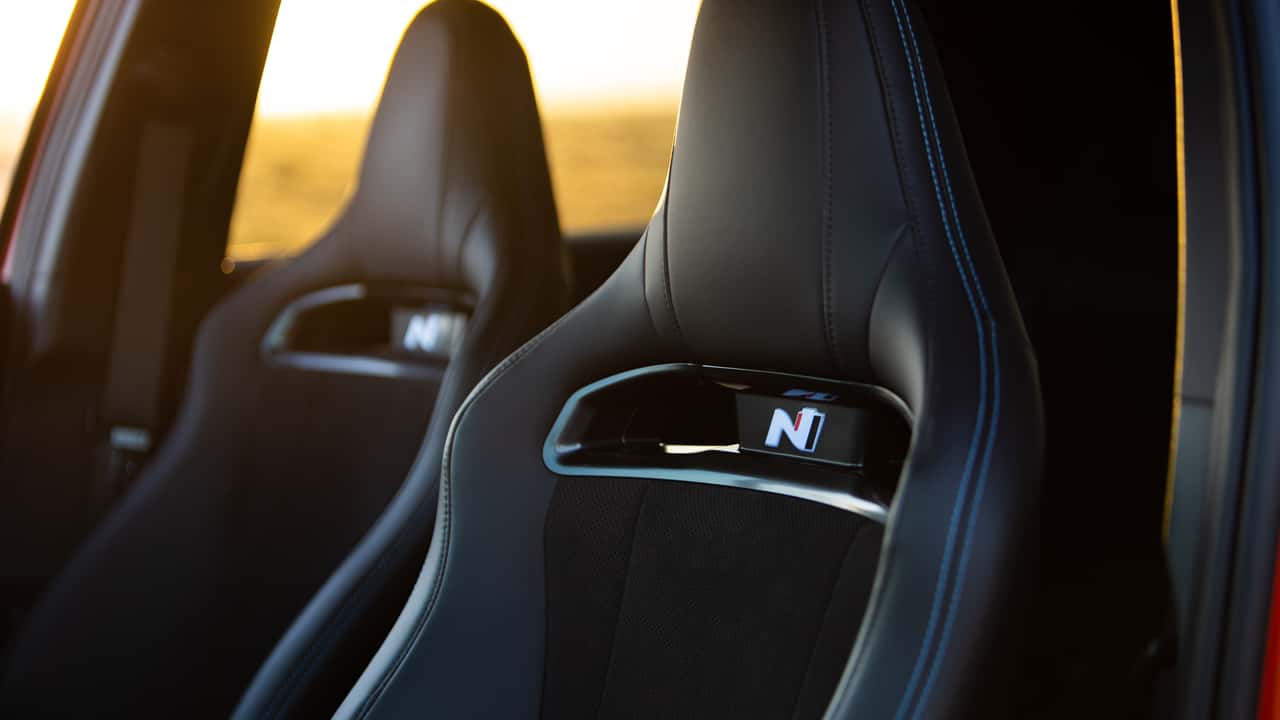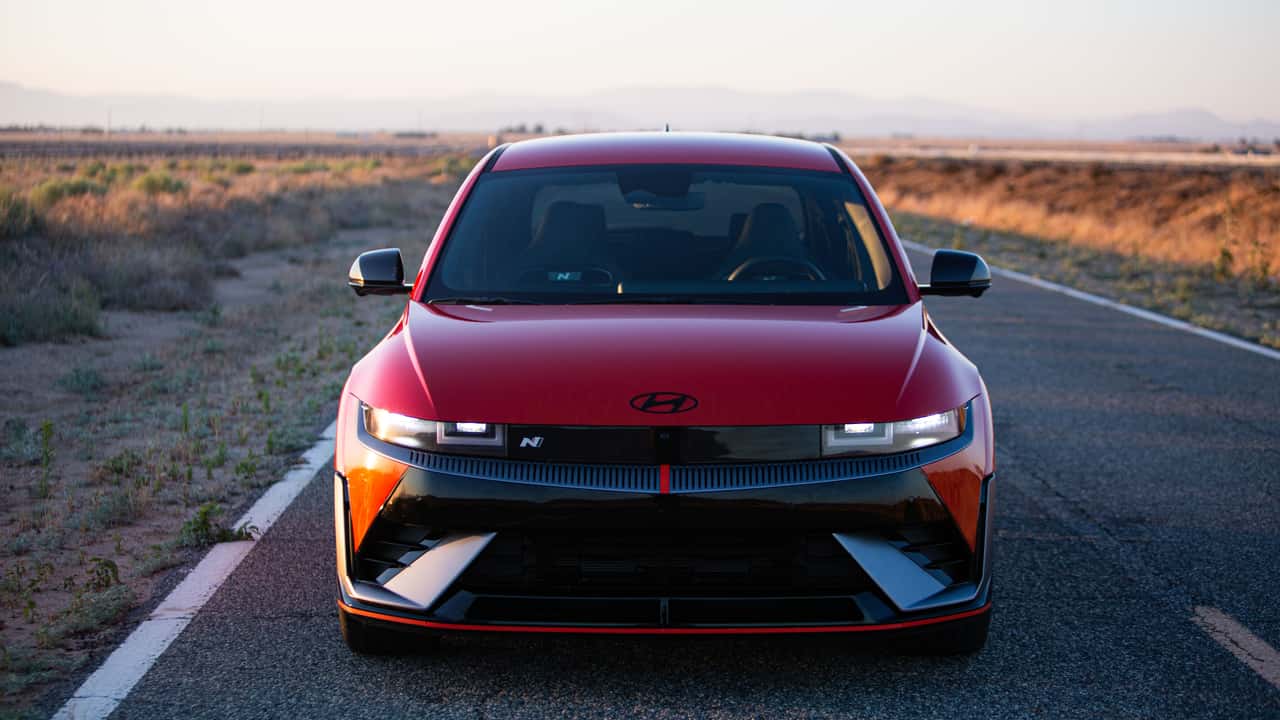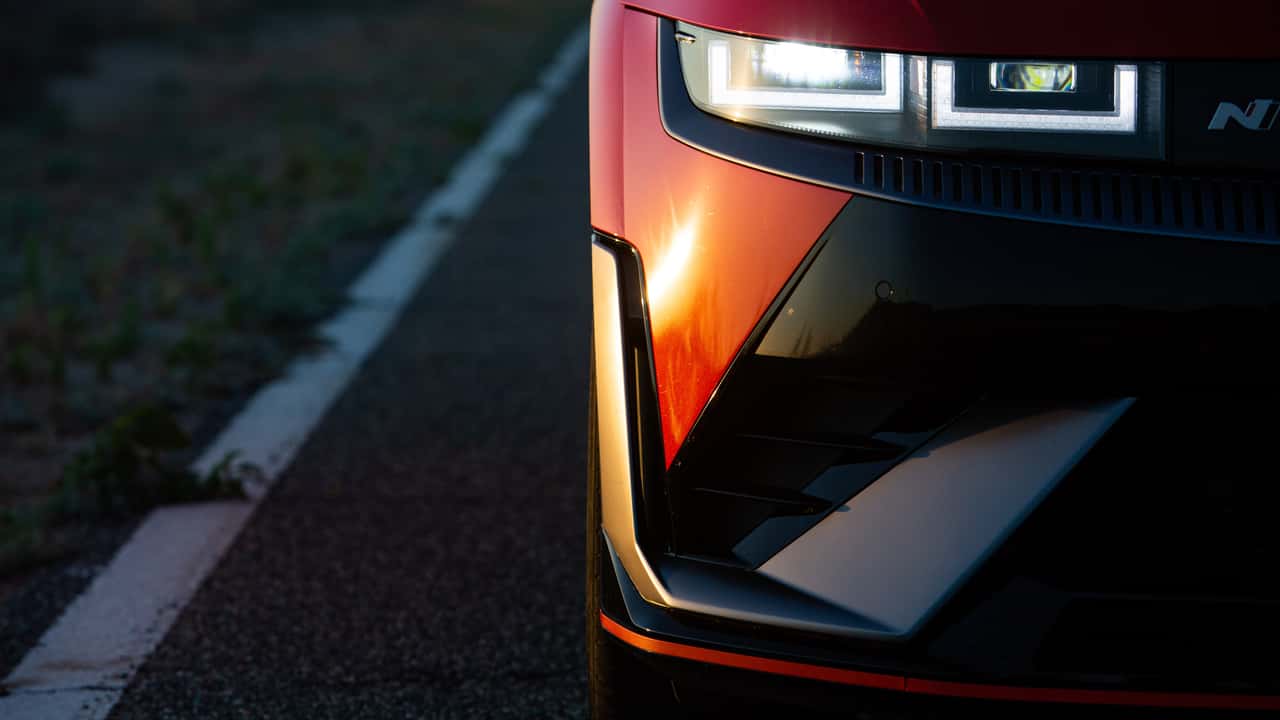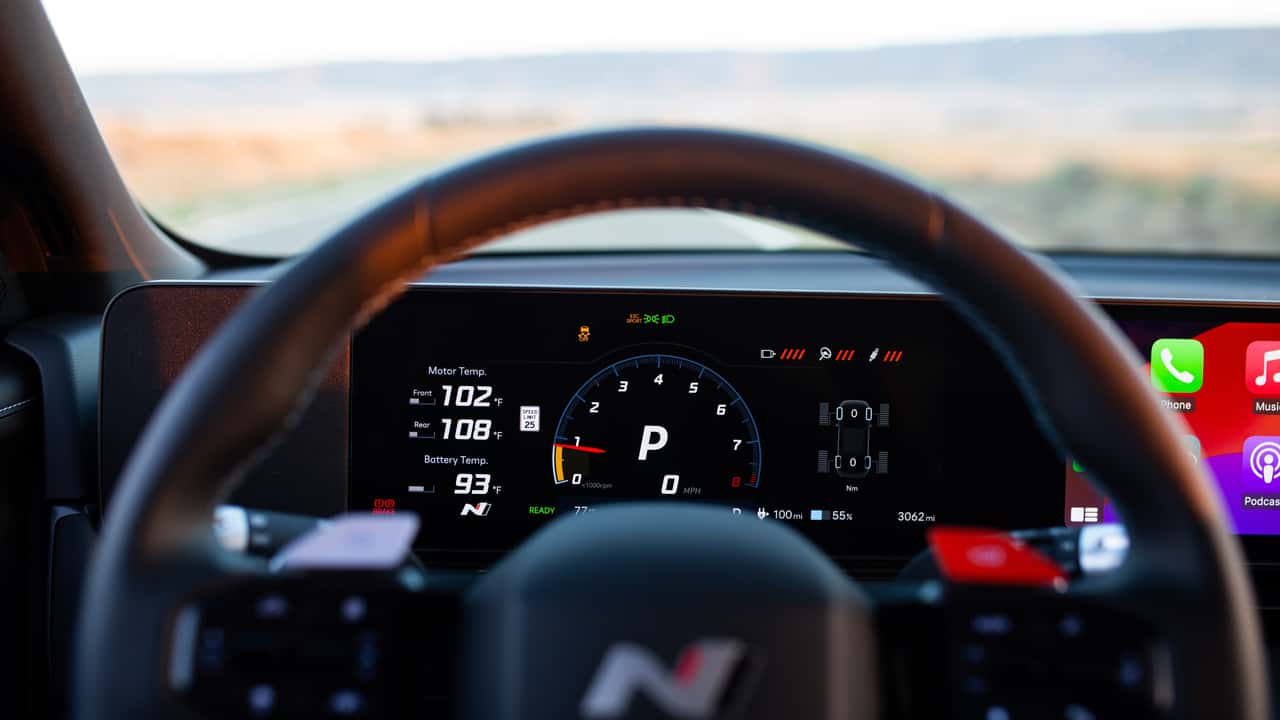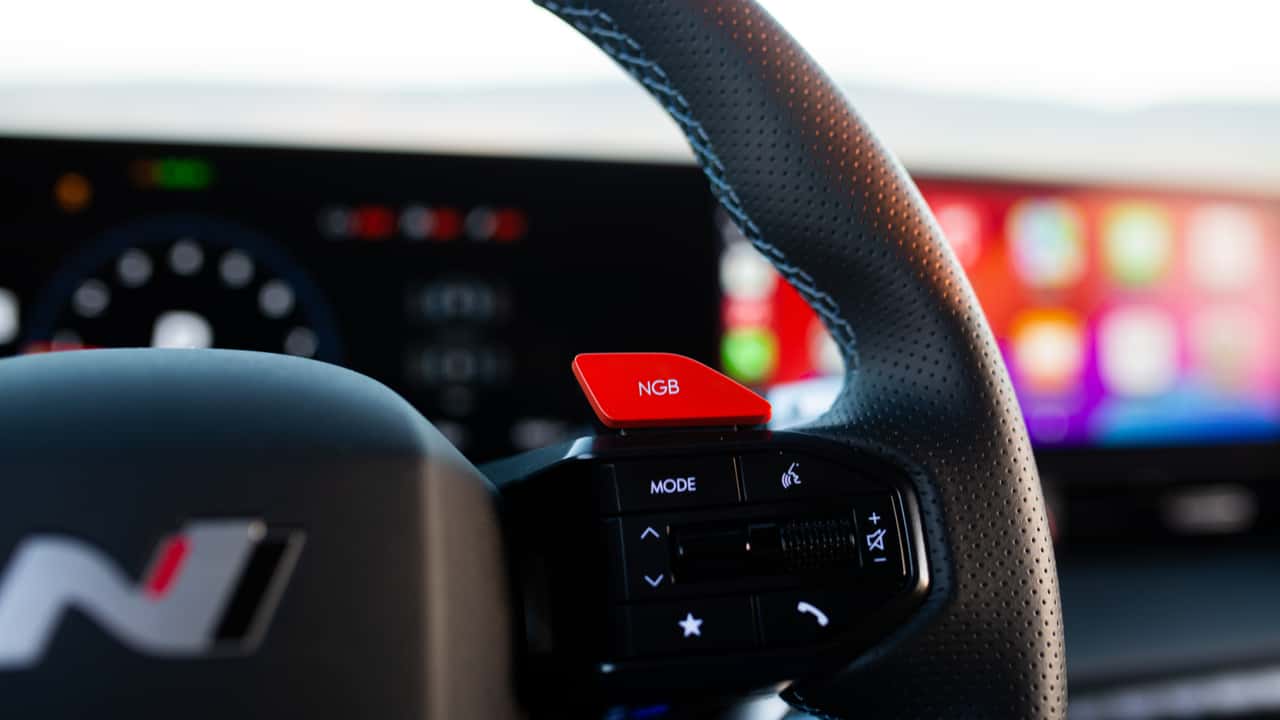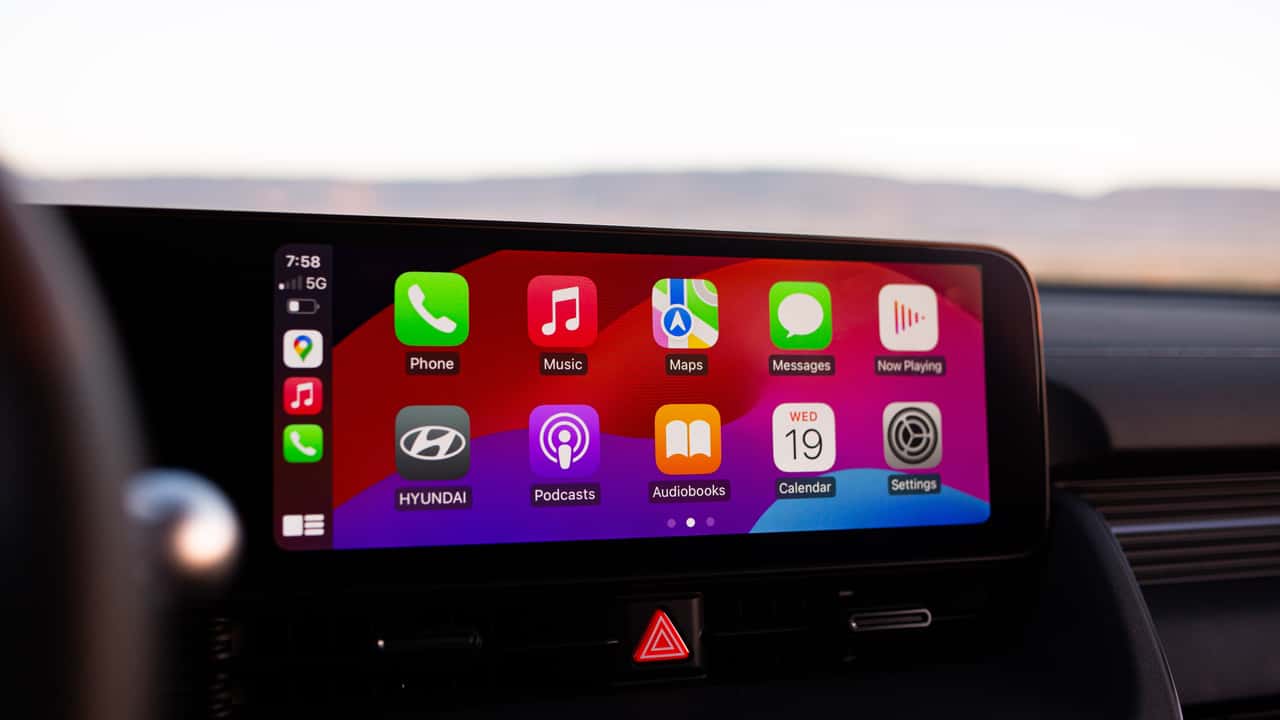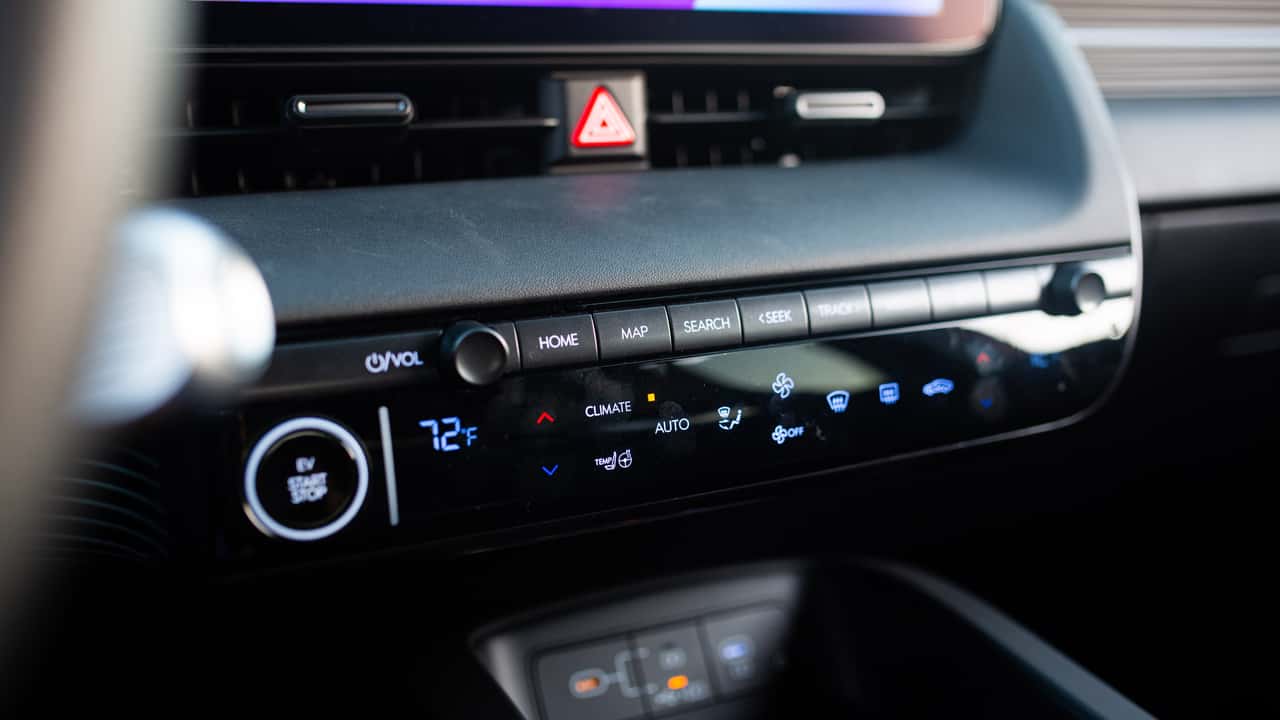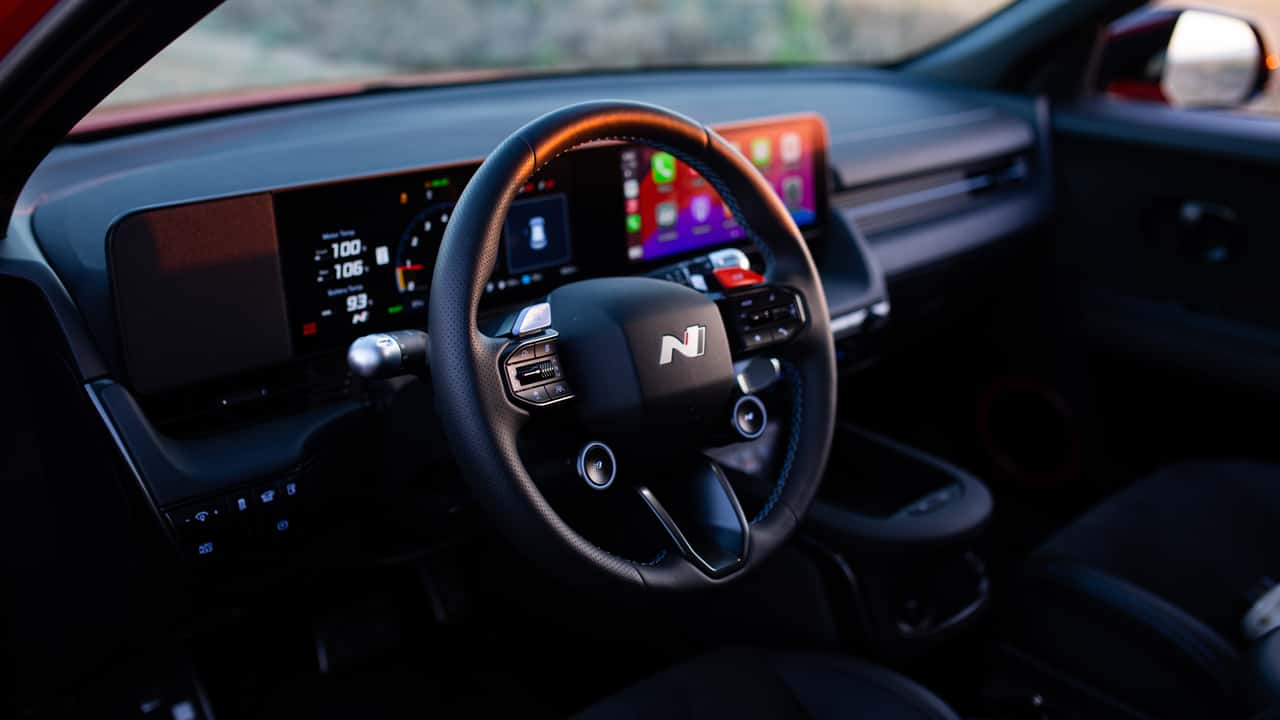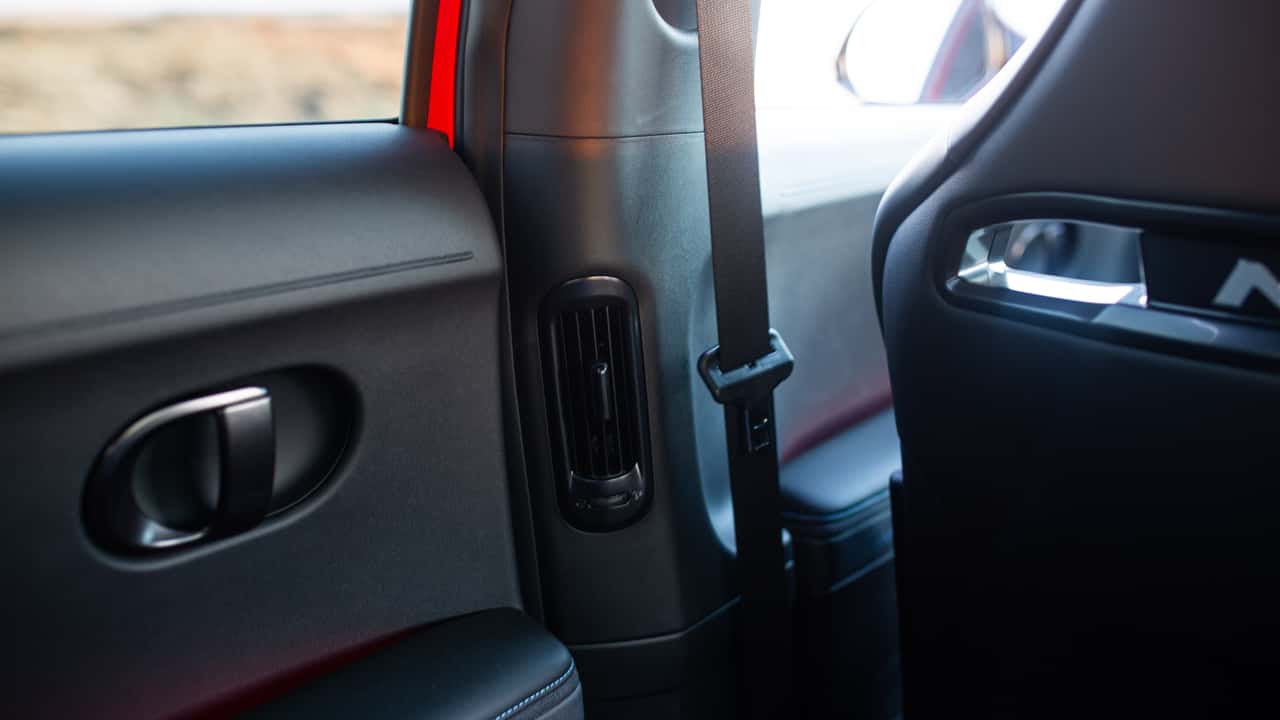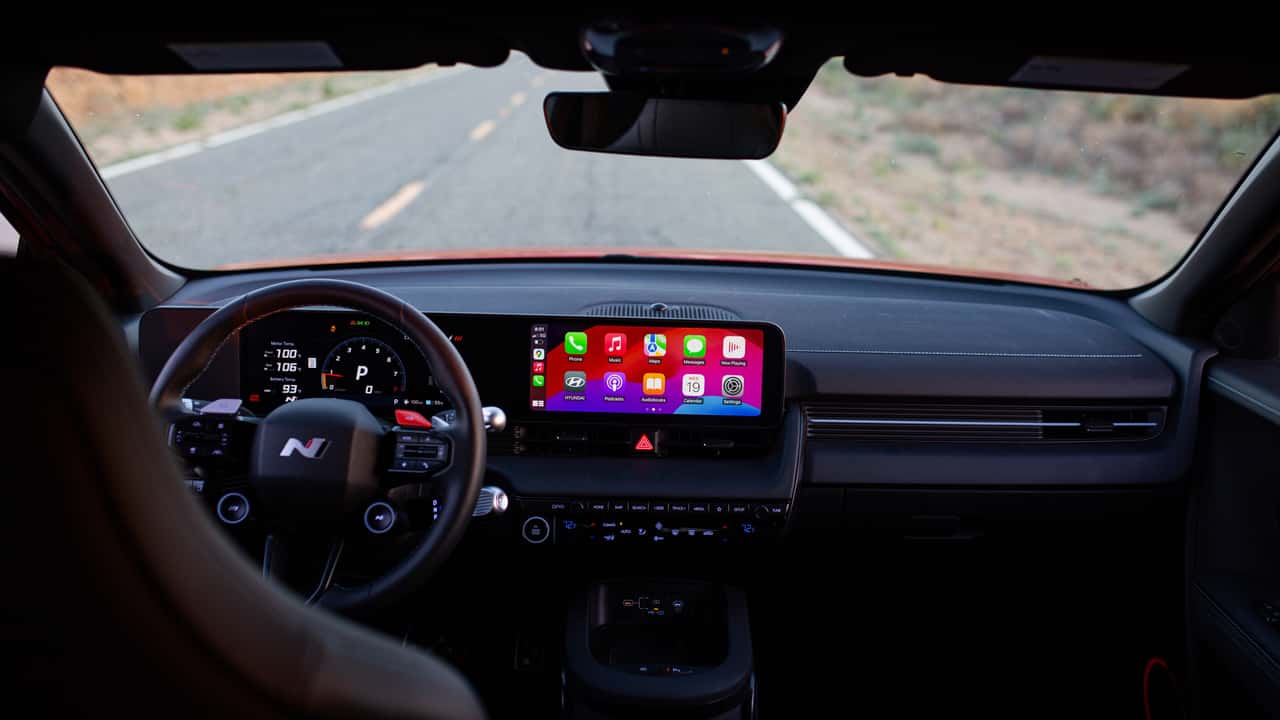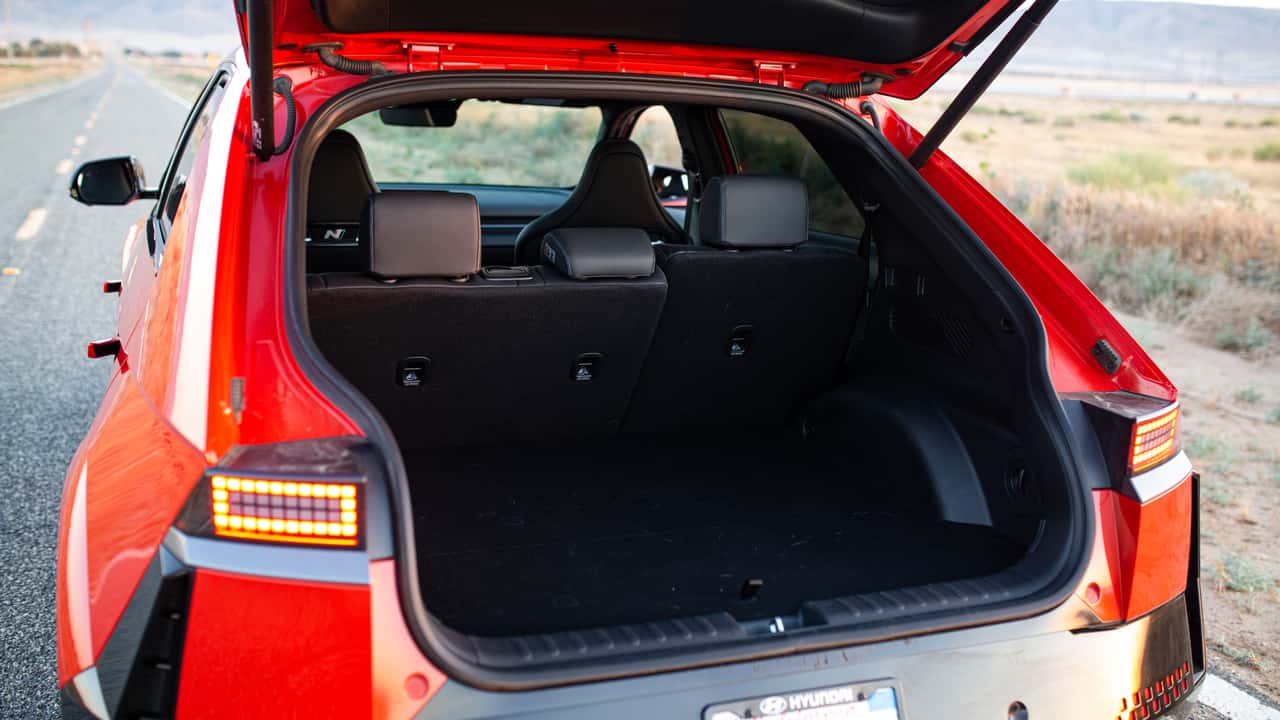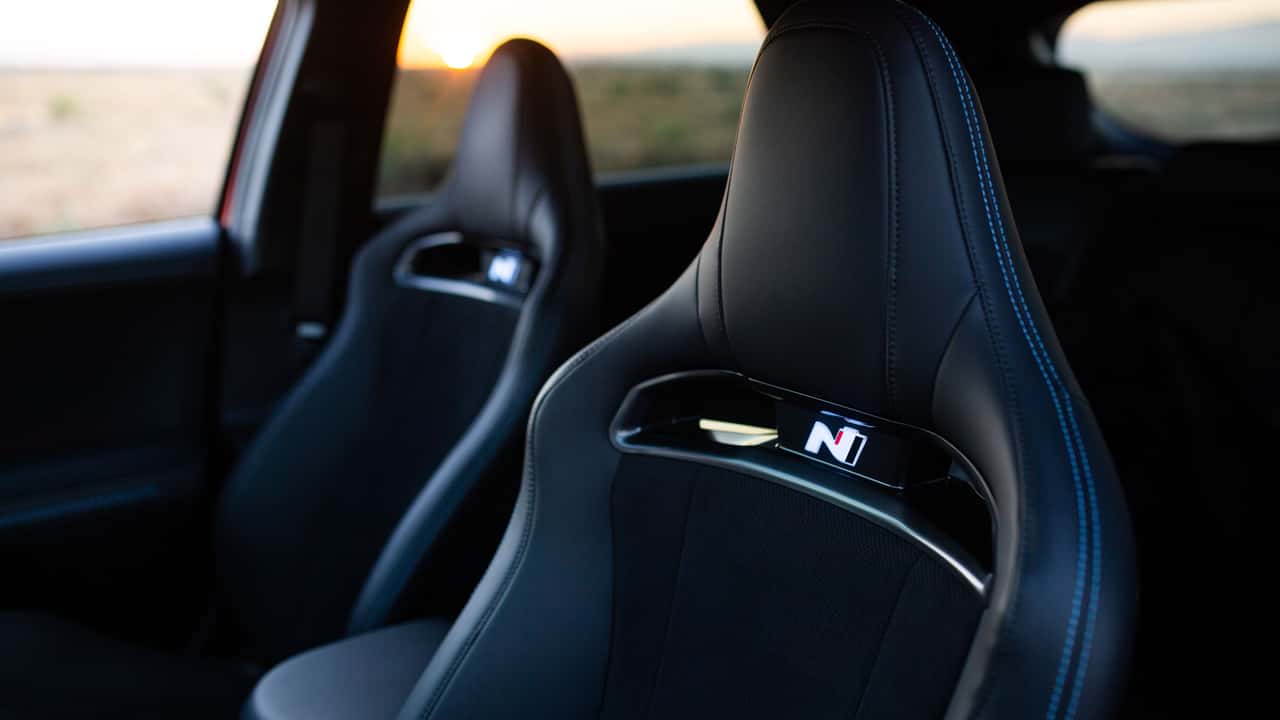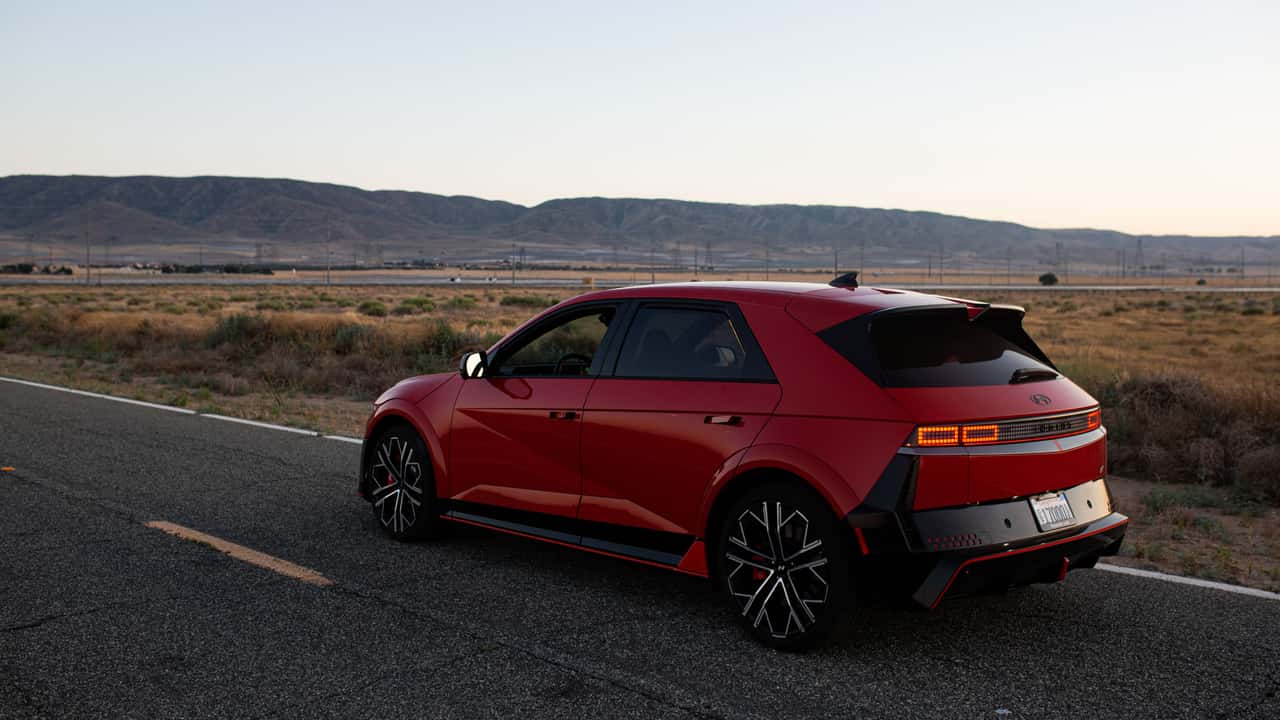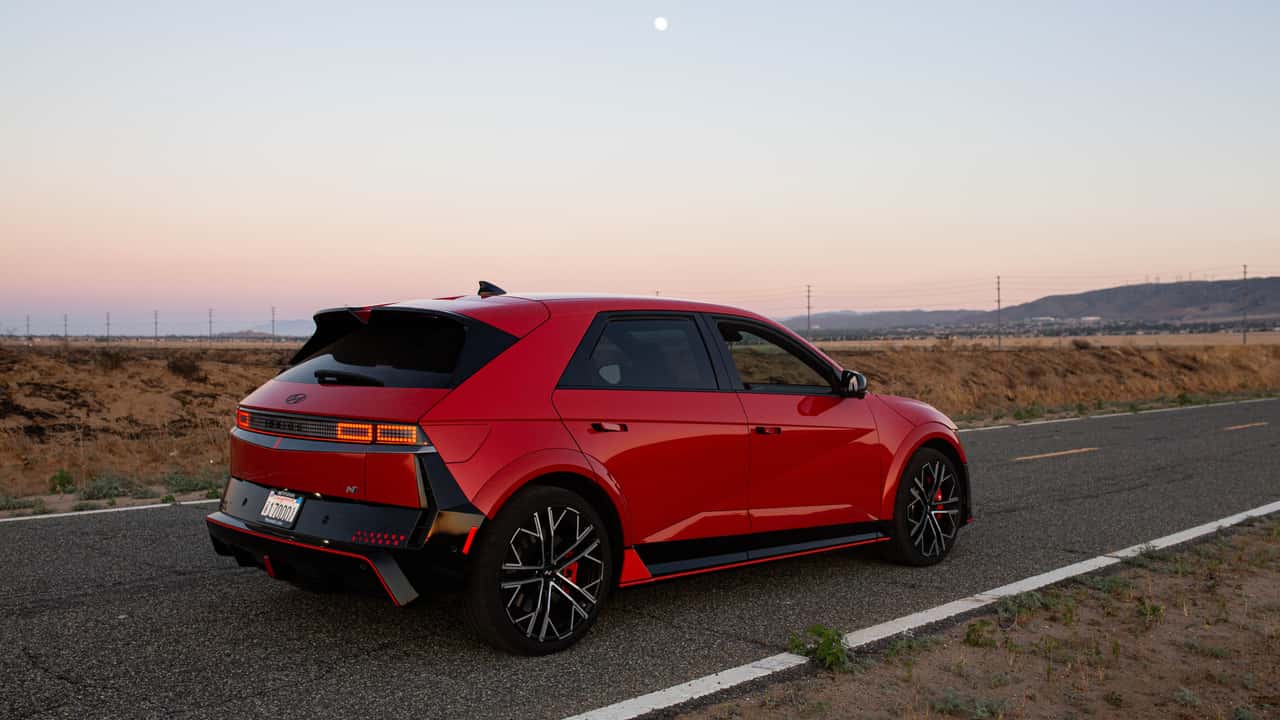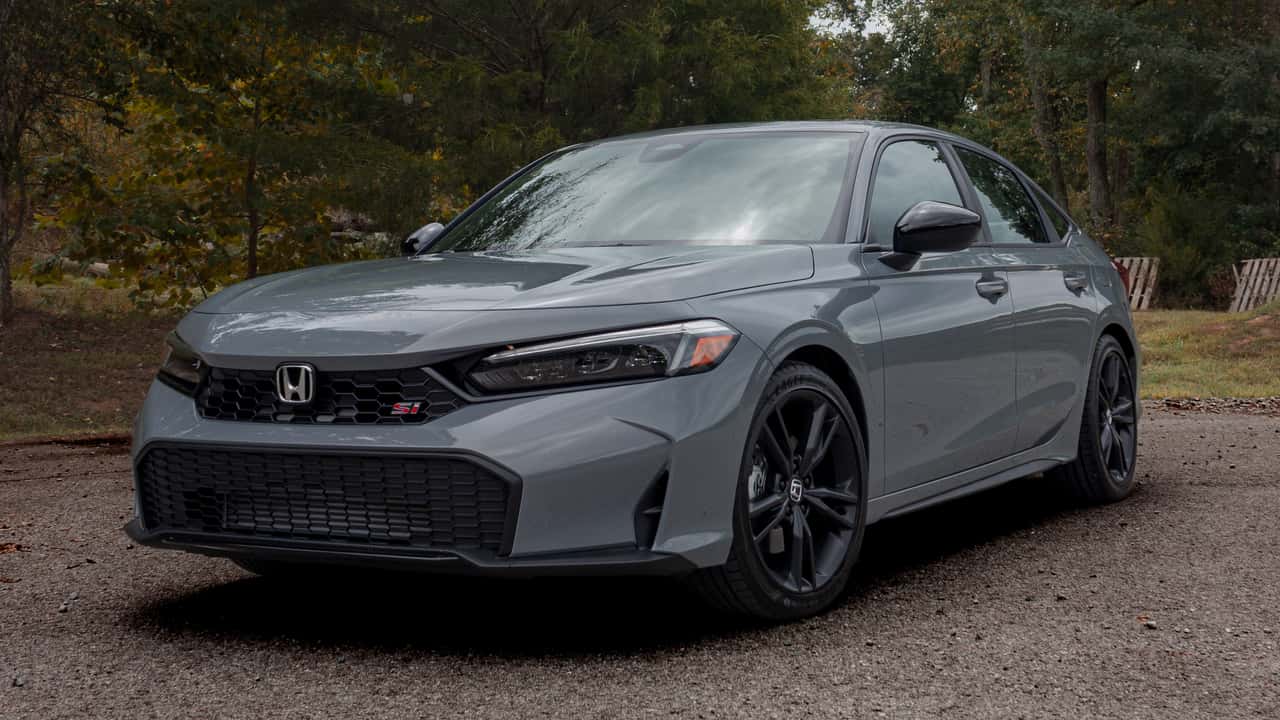
The 2025 Honda Civic Si is “new” in the same way that the New Year is new: With every flip of the calendar, we strive to make each year at least slightly better than the last. The 2025 Civic Si, like the New Year, is a minor evolution of what already exists. It’s the car you’ve always known, but improved. That’s what makes it great.
The Honda Civic Si has been around since 1986 and sits right below the top-end, 315-horsepower Type R performance model. The Si looks and feels like a Civic in most respects, but unlike the pricier Type R, it gives enthusiasts a more practical performance option. For 2025, the Civic Si starts at $31,045 with destination.
| Quick Specs | 2025 Honda Civic |
| Engine | Turbocharged 1.5-Liter Four-Cylinder |
| Output | 200 Horsepower / 192 Pound-Feet |
| Transmission | Six-Speed Manual |
| 0-60 MPH | 6.5 Seconds (est.) |
| Base Price | $31,045 |
The Civic nameplate is in its 11th generation, and just like last year, the 2025 Civic Si has 200 horsepower and 192 pound-feet of torque from a turbocharged 1.5-liter four-cylinder engine. Also like last year, there’s a standard helical limited-slip differential and a six-speed manual transmission sending power to the front wheels. There’s no automatic transmission available, and there are no foundation-shaking changes from the last car—just tweaks in the right direction.
The most-relevant updates include a revised rev-match system to cover downshifts from second gear to first, along with a new 10.2-inch digital driver-instrument cluster that adds shift-indicator lights from the Type R. Parts of the suspension, subframe, and doors are more rigid than the outgoing Si, with “retuned suspension dampers [to] take advantage of increased body stiffness,” Honda says.
The Civic Si comes in four colors for 2025: red, black, white, and gray (pictured, and new for this year). The white and gray cost $455 extra, while the black and red are standard colors. Get the red.

Pros: Looks Great, Drives Even Better
I’ve driven many iterations of the Civic Si and Type R, and each time, the experience feels familiar yet novel. The novelty isn’t in their evolution, because they don’t change that much. It’s the fact that each time I drive an Si or Type R, I remember how practical and accessible some performance cars can be.
The Si is a blast to drive. It’s quick but not earth-shatteringly fast, stiff enough to enjoy every corner, and comfortable enough to drive every day. The shifter has a light, buttery throw with a teeny thunk as it passes into each new gear. The steering feels weighted and responsive, gliding into each corner while not being overly twitchy for a daily driver.
The Si is almost as fun to drive in a city as it is on a twisty rural two-lane, because the beauty of a hot hatch is that it’s meant for every road. Flipping the car into sport mode and putting my foot to the floor in second gear makes me cackle every time. The limited-slip differential puts the power down, and the Si leaps forward.
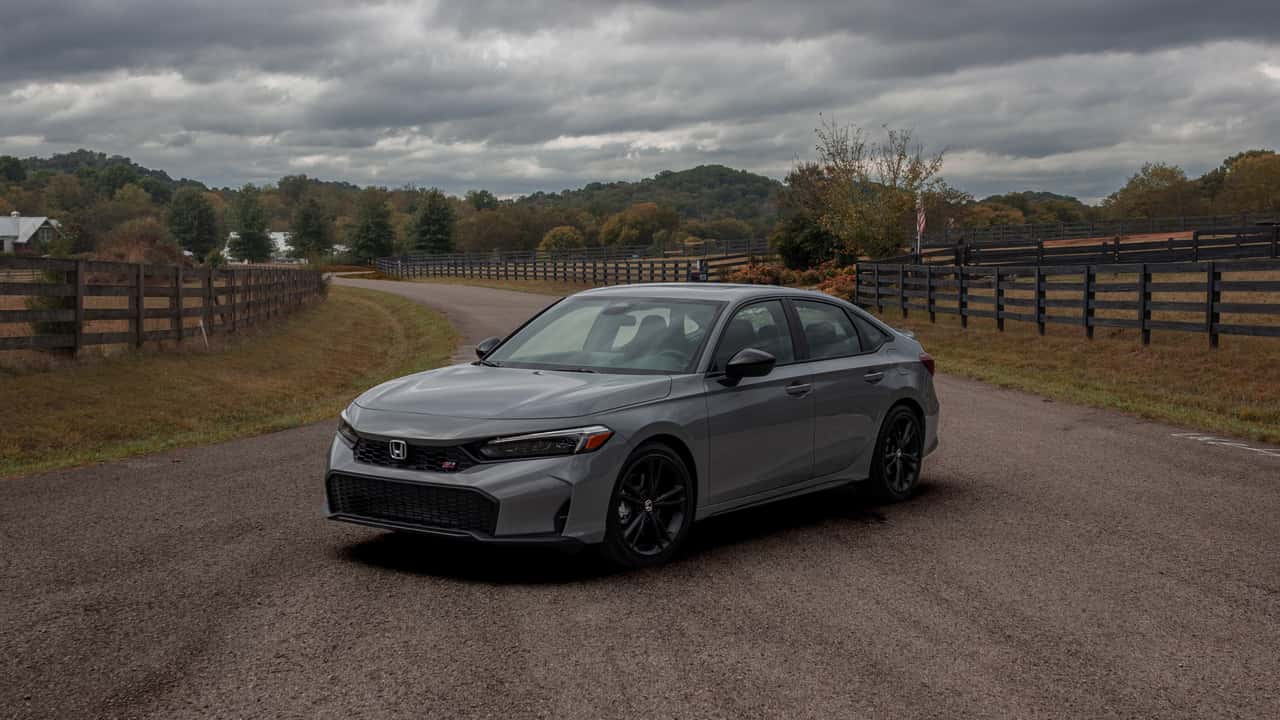
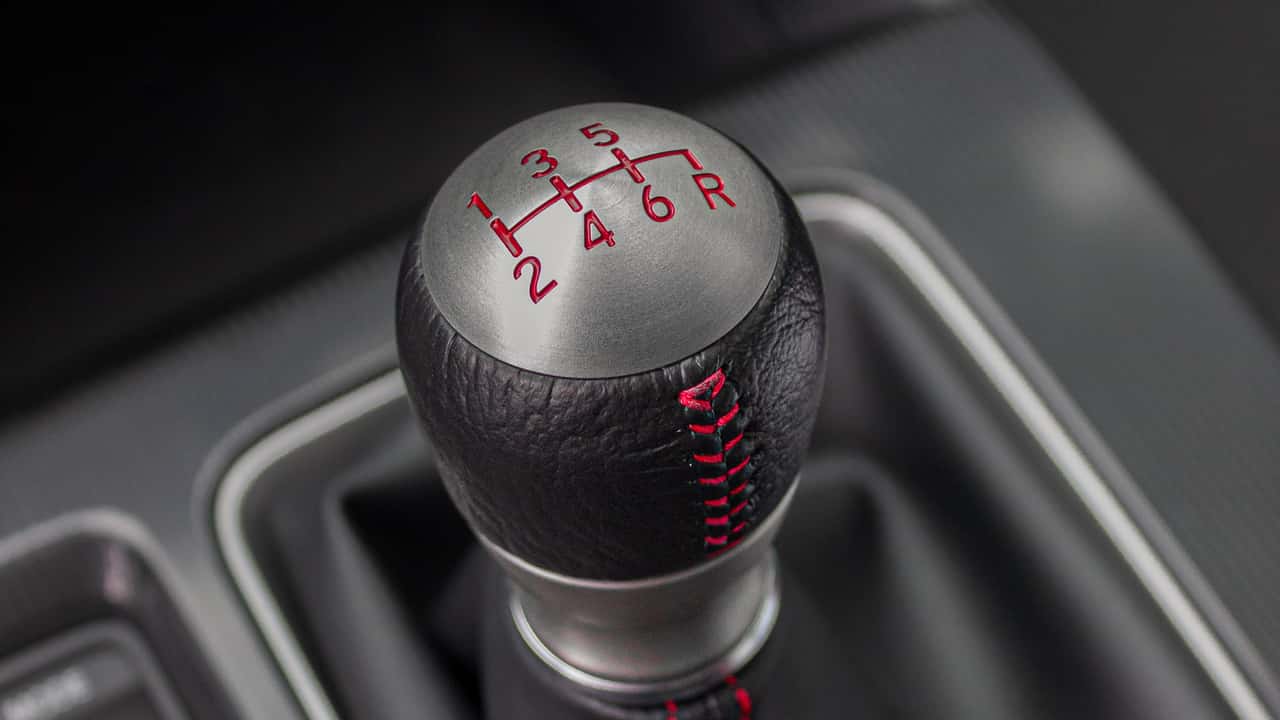
The new shift-indicator lights adopted from the Type R, which light up yellow and red based on RPM to indicate when to upshift, make slamming the car into gear feel like a movie getaway scene. The only thing missing is a physical handbrake—instead, the Si has a button.
The Si is also fun (or at least tolerable) for passengers. The pedals are so easy to work that, for someone who drives stick regularly, it feels almost impossible to kill. Even if you killed it, the Si wouldn’t lurch to a halt—it would just quietly die on you, waiting for you to press the start-stop button to try again. If you don’t feel like rev-matching on your own, using the Si’s perfectly smooth automated rev-match system means your passengers don’t have to endure a choppy jolt when you misshift.
The Si has three driving modes: Normal, Sport, and Individual. Their names and functions are straightforward, but there’s a new feature in Individual mode for 2025: If you want to turn off the enhanced engine noise in the cabin and listen to your little turbo-four scream without help, you can.
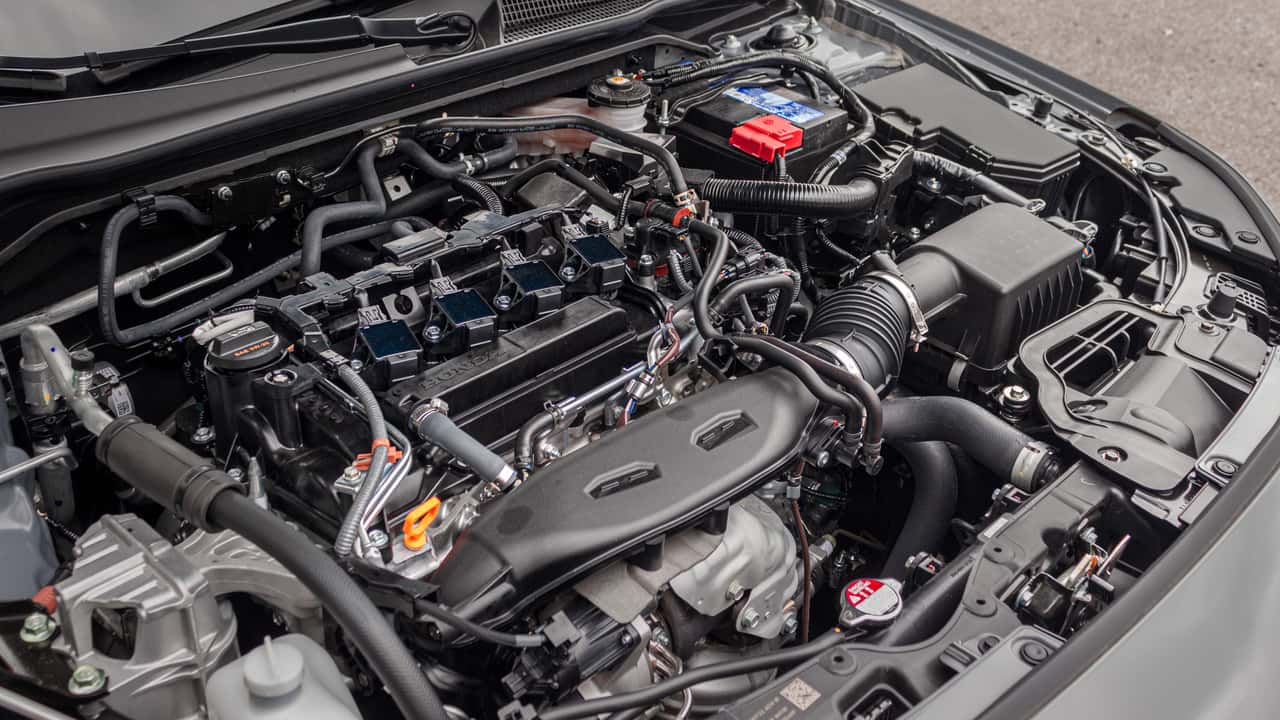
Cons: The Interior Isn’t Perfect
A lot of car enthusiasts don’t like when automakers pump enhanced (or fake) engine noise into the cabin, but I don’t mind. It makes driving more immersive, like seeing a movie in IMAX versus watching it on your couch. As dead-quiet electric performance cars become the norm, we’ll need more of it to feel that same immersion.
Styling-wise, the Si follows its usual blueprint: The exterior has slight tweaks to indicate that it’s a sportier model (namely, the red “Si” badges). The interior has five cloth seats. Red fabric seats and Si stitching up front pair to plain black rear seats.
There’s red trim on the dashboard and a herringbone pattern around the shifter and cup holders, and the car has red contrast stitching all over, including on the shift knob. The door cards are a mixture of hard black plastic and a red-and-black cloth pattern that matches the front seats.

The interior of the Si looks great, but I worry about how porous the materials are. There’s loosely stitched cloth everywhere, which makes the car more prone to absorbing dust and dirt. My car, which had less than 500 miles on the odometer, already had a big dust spot on the center console cover. (There are also piano-black surfaces inside, which are grease and dust magnets as well.)
The Civic Si’s front seats are comfortable, but because they’re flat-backed instead of having a headrest that pokes out a bit, I found myself leaning my head forward a lot. It wasn’t as ergonomic as I wanted it to be.
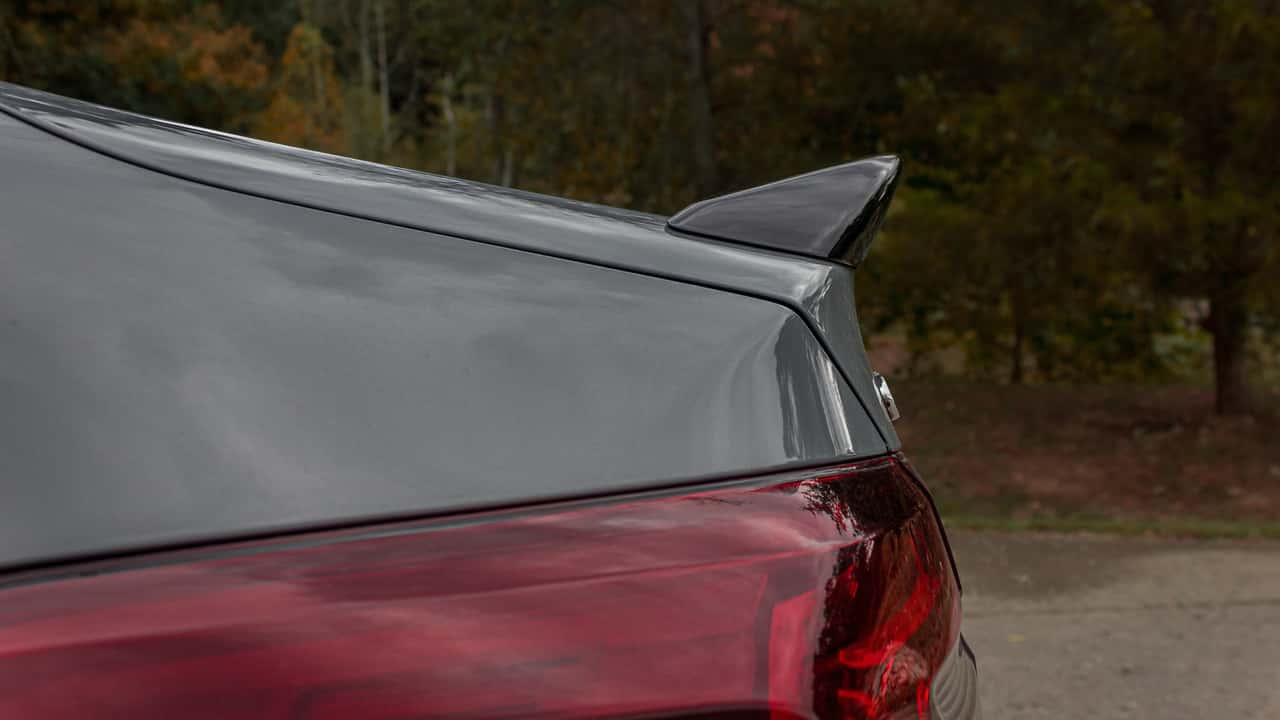
The backseat in the Si is workable, even if it’s not the most glamorous. I’m 5-foot-8, and I had a few inches of legroom with the front seats slid back. But there are no air vents back there, and the backs of the front seats are thin cloth—meaning if anyone back there has a sharp object, they may poke a hole or two in them.
The Honda Civic Si isn’t perfect, but as the cost of cars continues to rise, getting a new, manual-only performance hatch for just under $30,000 remains a great deal. If every new Si aims to become a slight improvement upon its predecessor, this one is a success.
Competitors
Hyundai Elantara N Volkswagen Jetta GLI
More Reviews
The 2025 Honda Civic Is a Love Letter to Hybrid Cars
The 2025 Volkswagen Jetta GLI Is a Last Bastion of Affordable Fun
Get the best news, reviews, columns, and more delivered straight to your inbox, daily. Sign up For more information, read our
Privacy Policy and Terms of Use.
| 2025 Honda Civic Si | |
| Engine | Turbocharged 1.5-Liter Four-Cylinder |
| Transmission | Six-Speed Manual |
| Output | 200 Horsepower / 192 Pound-Feet |
| Drive Type | Front-Wheel Drive |
| Weight | 2,952 Pounds (est.) |
| Efficiency | 27 City / 37 Highway / 31 Combined |
| Seating Capacity | 5 |
| Cargo Volume | 14.1 Cubic Feet |
| Base Price | $31,045 |
| On Sale | Now |
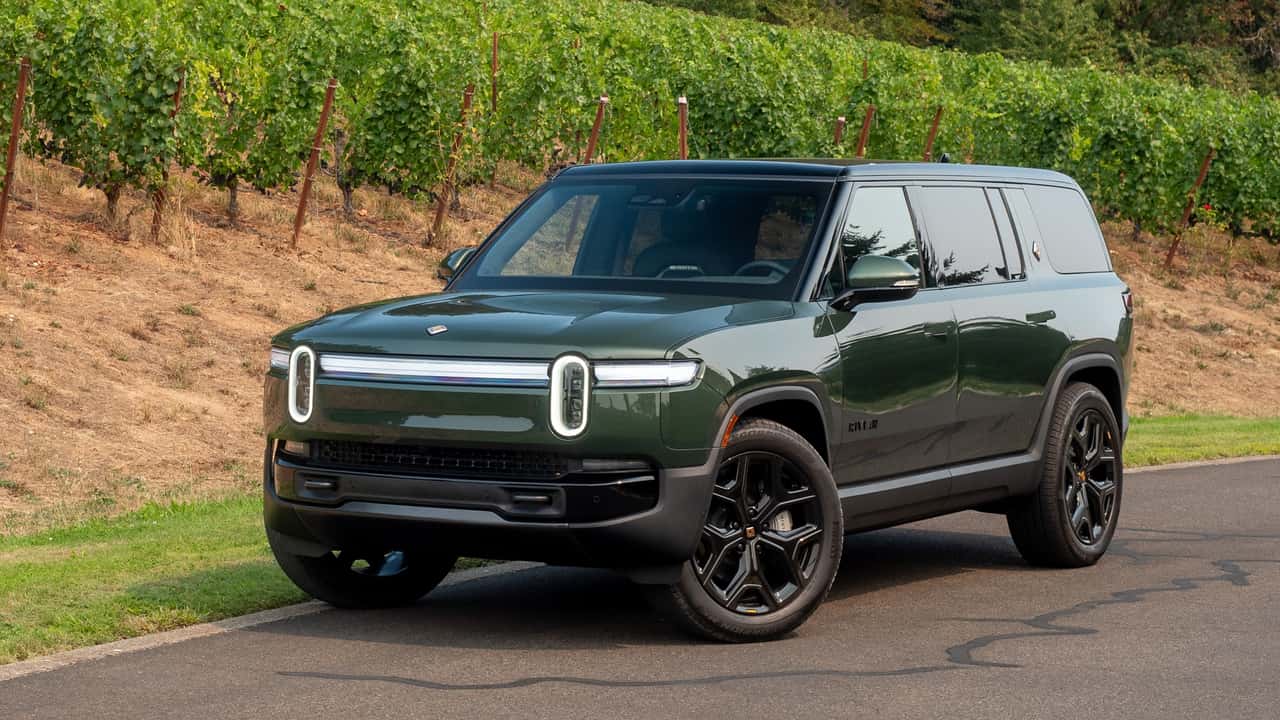
Rivian’s R1S is essentially all-new for 2025, but you’d be forgiven for not knowing that by looking at it. It’s got new batteries, new motors, new software, and even new wiring, but the sheet metal is virtually untouched—it’s still the same friendly two-box design from 2022.
What has changed is the R1S’s competition. When it was new, the R1S was basically the only way to get an electrified (standard) three-row SUV; Now, it competes directly against an ever-growing segment of vehicles from EV upstarts and legacy manufacturers, and it makes the R1S a tougher sell. For 2025, the R1S now costs $75,900, which means a base model is priced roughly the same as a top-of-the-line Kia EV9 GT-Line, one of its biggest competitors.
| Quick Specs | 2025 Rivian R1S Dual Max |
| Motor | Dual (Front / Rear) |
| Output | 665 Horsepower / 829 Pound-Feet |
| Range | 410 Miles |
| Base Price / As Tested | $77,800 / $100,950 |
| On-Sale Date | Now |
Buyers of the base model get the same power as before: boatloads. The standard dual-motor drivetrain pumps out a whopping 533 horsepower and 615 pound-feet of torque, vastly more than the 379-horsepower EV9. It only gets faster from there. Upgrade to the Performance package ($5,000, equipped on my test vehicle) and the same pair of motors produce 665 hp and 829 lb-ft.
Rivian also offers a tri-motor with 850 hp and a quad-motor version with 1,025 hp, but the quad-motor R1Ss won’t hit the streets until next year. Those are promised to pull ten-second quarter miles and hit 60 miles per hour in 2.5 seconds. For my purposes, 665 horsepower was plenty.
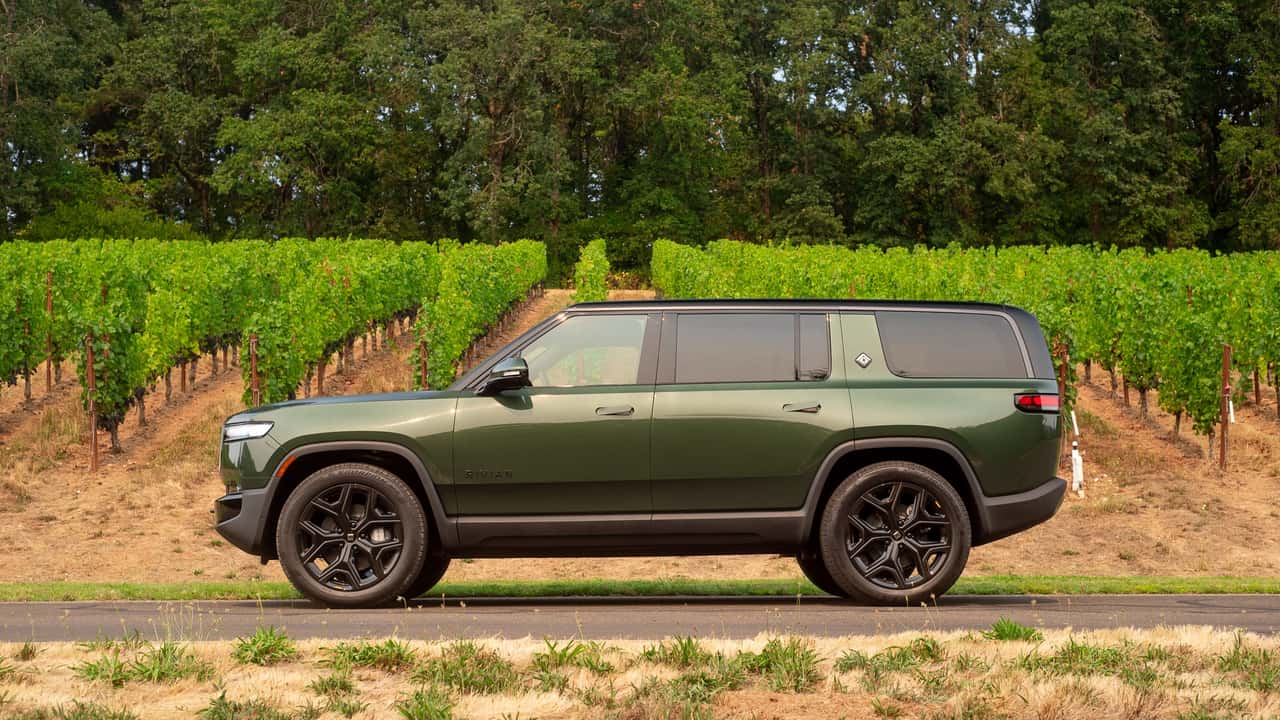
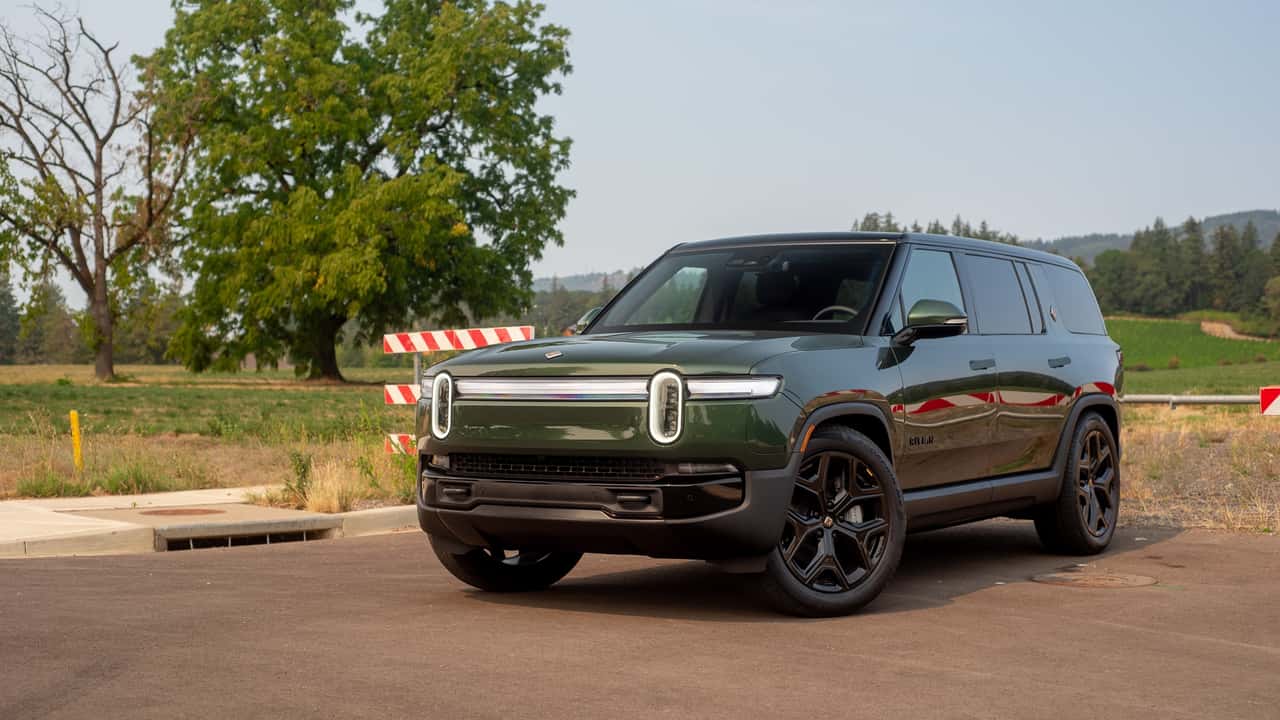
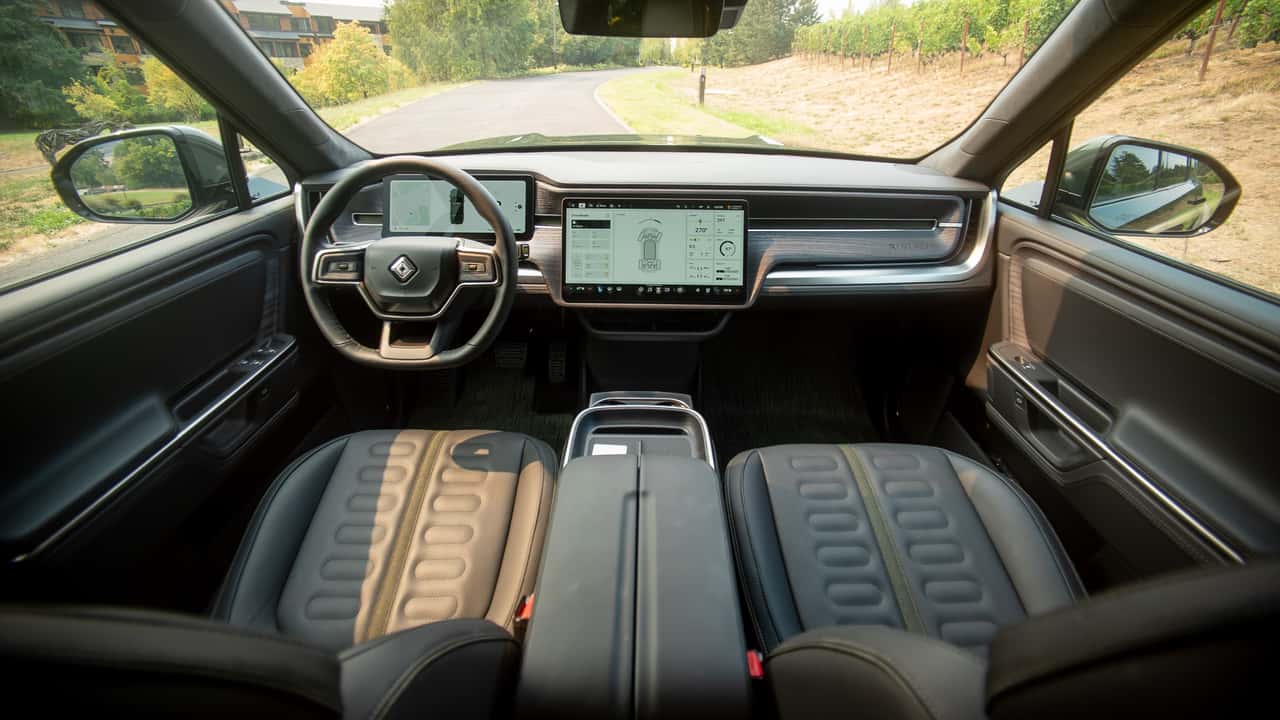
Pros: Best Range Of Any Three-Row, Wicked Power, Excellent Steering
For supplying juice to those in-house-designed motors, Rivian offers three battery sizes: A 92.0-kilowatt-hour Standard, a 109.0-kilowatt-hour Large, and a 141.0-kilowatt-hour Max. The battery chemistries and actual capacities are different from the previous R1S, but that’s primarily to help Rivian turn a profit, not to radically change the driving experience of the car.
As far as things buyers will notice, the range varies from a quite-good 258 miles to an outstanding 410 miles, depending on the battery and vehicle specification chosen. My test vehicle was a Dual Max, which offers the full 410 miles of range; This handily bests the Tesla Model X’s 335 miles and the EV9’s 304 miles. Replenishing times are also excellent, with Large and Max packs offering a 220-kilowatt maximum charging rate on DC fast-chargers, translating to 140 miles of range in just 20 minutes.
Buyers should note that price climbs quickly with larger, faster batteries, though. The R1S Dual Max starts at $89,900, but as-tested, the R1S I drove cost $100,950—more than a much-faster Model X Plaid and rapidly approaching the sticker on a Mercedes-Benz EQS SUV ($105,550).
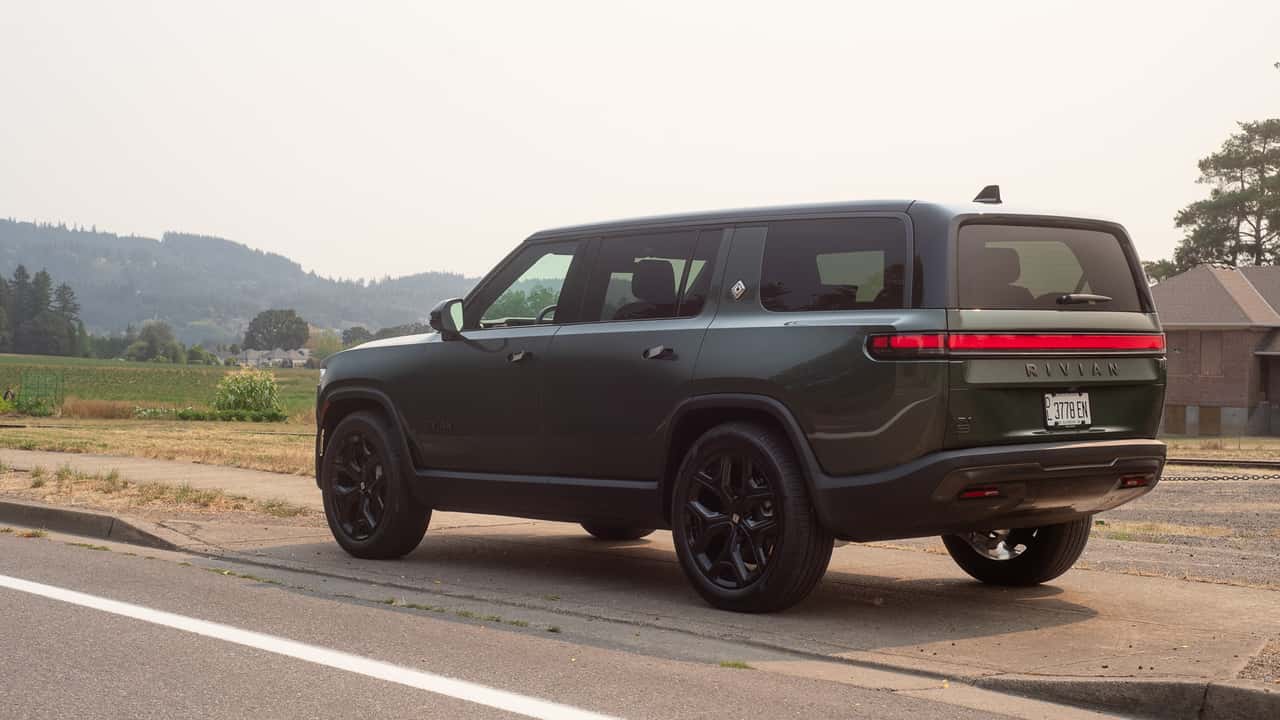
This is where comparison shopping the R1S starts to show weaknesses. For buyers who value off-road ability, the R1S is unrivaled by any EV short of the Hummer—36 inches of wade depth, 15 inches of ground clearance, 35.8 degrees of approach angle. But on the road, it isn’t quite a premium ride. Despite updated and improved suspension, the R1S rides like an old-school SUV than a modern-day luxury EV. In “normal,” it feels a bit too stiff on less-maintained b-roads. In “soft”, it rides like its rebound rate doesn’t quite match its compression rate. And potholes at speed lead to more cabin vibration than its road-focused electric competition.
The 2025 model is updated to a hydraulic anti-roll system, which works excellently, as body lean in cornering is well-managed. The steering is sharp, and the Dual Max stayed well-planted on full-throttle pulls. Still, because of the suspension tuning, if I were choosing a vehicle for a long road trip I’d be more likely to eye an EV9 or an EQS for overall ride comfort.
Inside the cabin, I appreciated the new software written for the 15.6-inch infotainment screen and 12.3-inch driver gauge cluster. Response times are excellent, and graphics for changing drive modes and entering menus are crisply animated. The electric-dimming roof-spanning skylight equipped on my Dual Max was gorgeous and worked well, when dimmed, at keeping most of the heat out of the interior despite 100+ F temps outside. The synthetic leather upholstery feels nice enough, the new in-house premium audio system blasts tunes with clarity, and the woodgrain trim is a thoughtful touch. It’s pleasant when parked.
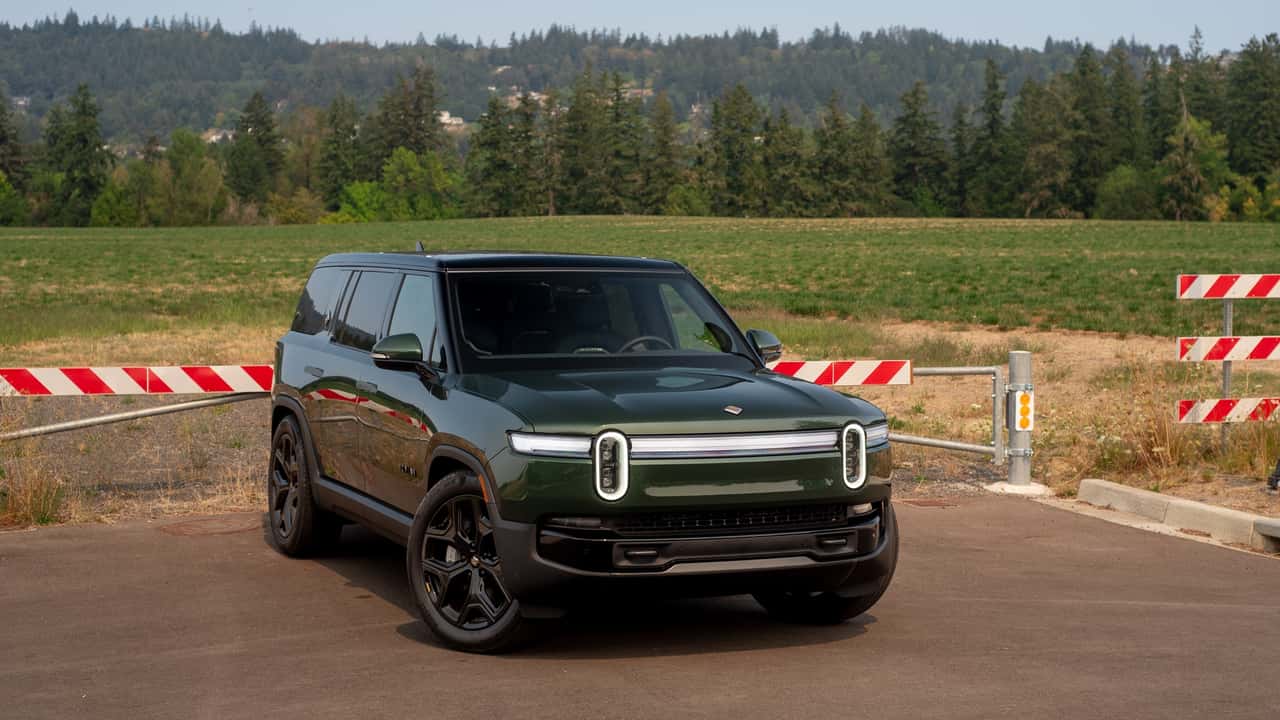
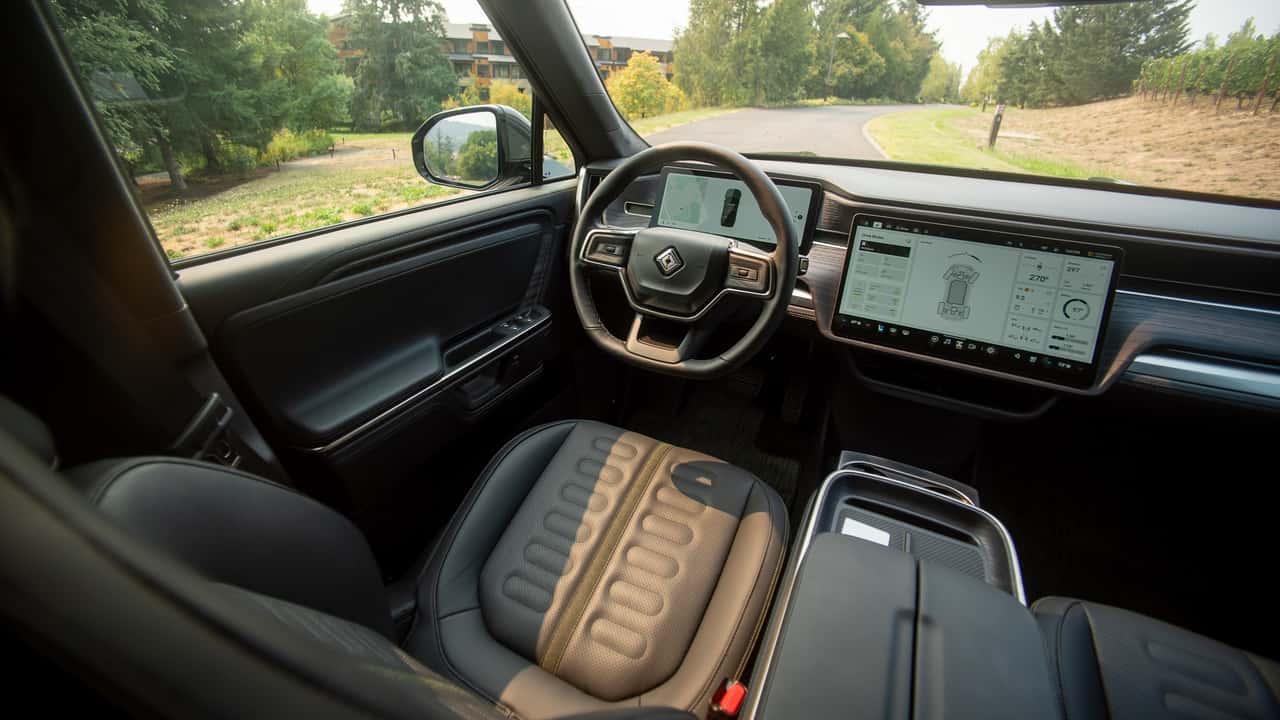
Cons: Not The Comfiest Cruiser, Frustrating Screen-Centric Cabin, Expensive
Actually driving and interacting with the R1S’s cabin, however, is a different story. Rivian has persisted with its virtually button-free philosophy for 2025, and the R1S suffers greatly for it. This anti-tactile ethos applies to things such as mirror and steering column adjustments, climate control, and even the aim of the air vents, which are controlled by dragging icons on the 15.6-inch center screen. Even tech-centric Lucid doesn’t relegate climate control aim to its touchscreen.
While minimalism has its place, the R1S’s single-minded insistence on a screen-centric cabin is frustrating. It’s also at odds with its off-road audience: I shouldn’t need to remove my gloves after a long day skiing to re-aim my heat towards my hands. The NFC card “key” also gave me troubles, even on my short test drive, as the vehicle didn’t recognize I’d left it in the center console sometimes when I’d hop out to take photos.
The R1S also still lacks Android Auto and Apple CarPlay functionality, although 2025 models offer a $149/year Connect+ subscription, which offers Apple Music and Spotify integration (as well as thousands of other streaming apps).
This puts the R1S in a strange spot. In 2025 models, Rivian dropped 40 pounds from the wiring, improved its motor and battery engineering, drastically cut the number of computers required on-board, and added hardware that can support semi-autonomous functionality to rival Autopilot and Super Cruise. (The complete semi-autonomous software still isn’t available, although Rivian has added an automatic lane-change feature via an OTA update this summer.)
Buyers won’t notice most of these changes, though, and whatever cost savings the company found haven’t been passed on. With the $55,000 EV9 on the market and the launch dates for the Cadillac Vistiq, Lucid Gravity, and Hyundai’s to-be-named three-row EV all looming, the R1S has a much tougher case to make now than it did two years ago.
Competitors
Kia EV9 Mercedes-Benz EQS SUV Tesla Model X
More Rivian News
The 2025 Rivian R1T and R1S Now Make Over 1,000 Horsepower
Rivian Might Be Preparing a Raptor-Fighting R1X
Get the best news, reviews, columns, and more delivered straight to your inbox, daily. Sign up For more information, read our
Privacy Policy and Terms of Use.
| 2025 Rivian R1S Dual Max | |
| Motor | Dual (Front/Rear) |
| Battery | Lithium-Ion (NCA), 141 Kilowatt-Hours |
| Output | 665 Horsepower / 829 Pound-Feet |
| Drive Type | All-Wheel Drive |
| Speed 0-60 MPH | 3.4 Seconds |
| Weight | 6,000 Pounds (Estimated) |
| Efficiency | 91 MPGe City / 77 MPGe Highway / 84 MPGe Combined |
| EV Range | 410 Miles |
| Charge Time | 10-80% SoC in 30-40 Minutes |
| Charge Type | Up To 220 Kilowatt-Hour DC Fast Charging |
| Seating Capacity | 7 |
| Towing | 7,700 Pounds |
| Wading depth | 36 Inches |
| Ride height | 15 Inches (Maximum) |
| Angle of repose | 35.8 Degrees |
| Departure angle | 34.3 Degrees |
| Cargo Volume | 17.6 Cubic Feet / 46.7 Cubic Feet / 105.8 Cubic Feet (Total With Frunk) |
| Base Price | $77,800 |
| As-Tested Price | $100,950 |
| On Sale | Now |
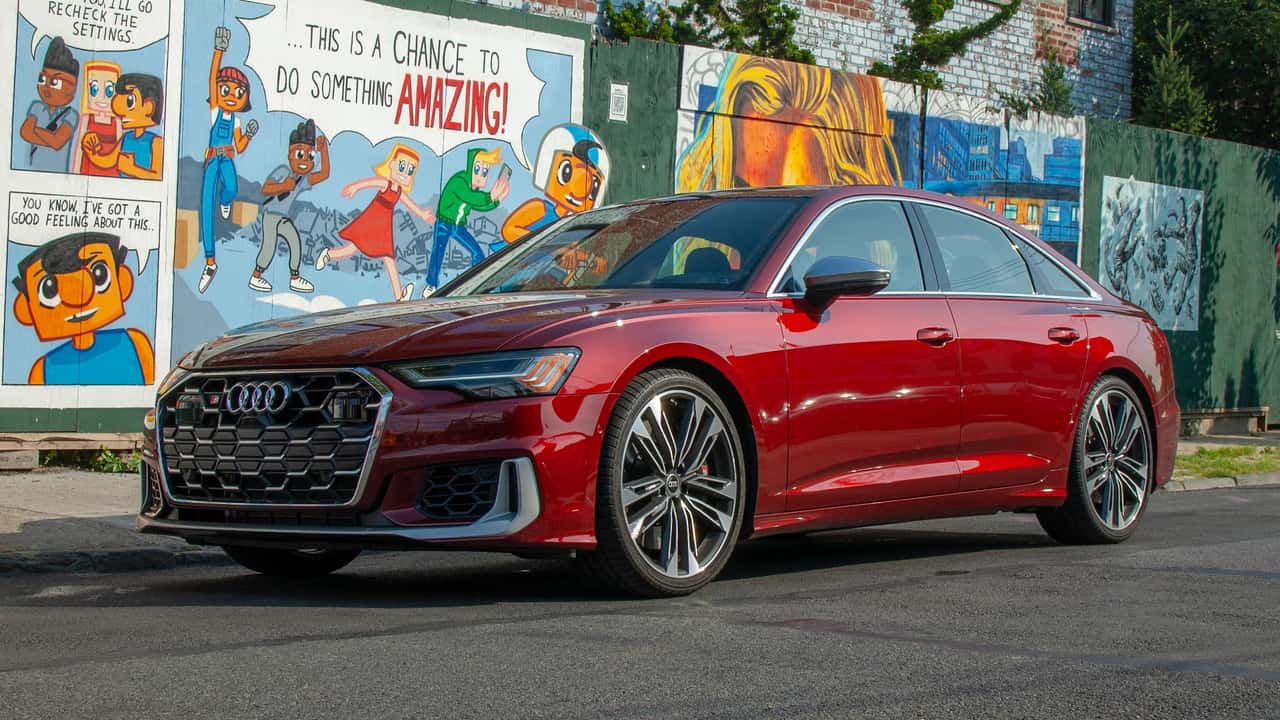
By pure coincidence, I drove this Audi S6 just weeks before the automaker revealed its electric A6 and S6 E-Tron. Audi tells Motor1 that the gas A6 and S6 will live on for some time alongside their electric counterparts—both were updated for the 2024 model year—but there’s no doubt where things are headed. The launch of Audi’s new electric sedan recontextualizes its outgoing sedans.
The A6 can trace its lineage back to the Audi 100 of 1968, the first car from Audi as we know it today. This S6 reflects a distinctly German approach to auto engineering: come up with an idea and stick with it no matter what. Audi’s traditional drivetrain layout of engine ahead of the front-mounted transaxle dates back to the 1930s, with the DKW F9, a proposed successor to the Volkswagen Beetle. It’s a layout with advantages; It creates lots of interior space and easy packaging of all-wheel drive with a simple driveshaft running rearwards. But it puts the heaviest parts of the car exactly where you don’t want them, creating a potential nightmare for vehicle dynamics.
| Quick Specs | 2024 Audi S6 |
| Engine | Twin-Turbocharged 2.9-Liter V-6 |
| Output | 444 Horsepower / 442 Pound-Feet |
| 0-60 MPH | 4.4 Seconds |
| Price / As Tested | $76,595 / $93,290 |
Front-engine performance cars generally have their powerplants mounted as far back behind the front wheels as possible. Other than Subaru, Audi is pretty much alone in this approach to packaging. This is where the trope of “Audi’s understeer” comes from, and there is some truth to it. So, it would seem this layout would make an odd base for a sports sedan.
But, I think we must consider how people actually use cars like this. Is anyone taking an S6 to a track day? Probably not. Are people getting up early to carve canyons with one of these? I doubt it. They’re using it like any old luxury sedan, one that happens to be faster than most. In this way, the S6 succeeds.
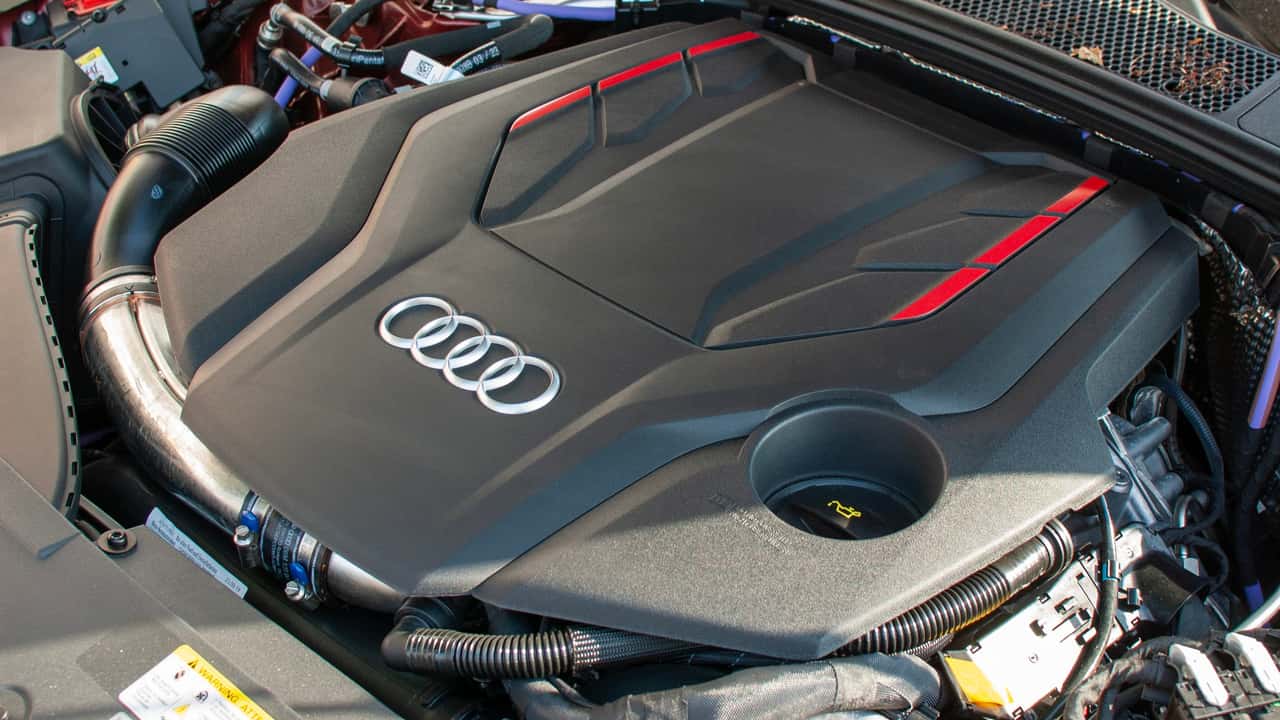 Chris Perkins / Motor1
Chris Perkins / Motor1
Pros: Wonderful Interior, Subtle Styling, Strong Performance
While facelifted for 2024, the A6 is by far the oldest of the German mid-size luxury sedan trio with new versions of the Mercedes-Benz E-Class and BMW 5 Series debuting last year. I actually think that’s an asset. The interior still has lots of sensible physical knobs and switches, and though it has a second screen for climate controls, it works very well. Plus, it’s just got that Audi-nice feel throughout. The company simply knows how to make a car feel nice, and this one with the extended-leather interior—part of the $8,200 Prestige package—is downright sumptuous. It’s one of those cars that feels right the second you get inside.
Long gone are the days of Audi S6s with silly engines, twin-turbo V-8s and even a V-10. Though not terribly characterful, the 444-horsepower twin-turbo V-6 is effective and even musical at times. In the S6, it’s bolstered by a 48-volt electric compressor that helps compensate for turbo lag, so there’s always good response from low revs, and the eight-speed automatic is smooth and quick through the ratios.
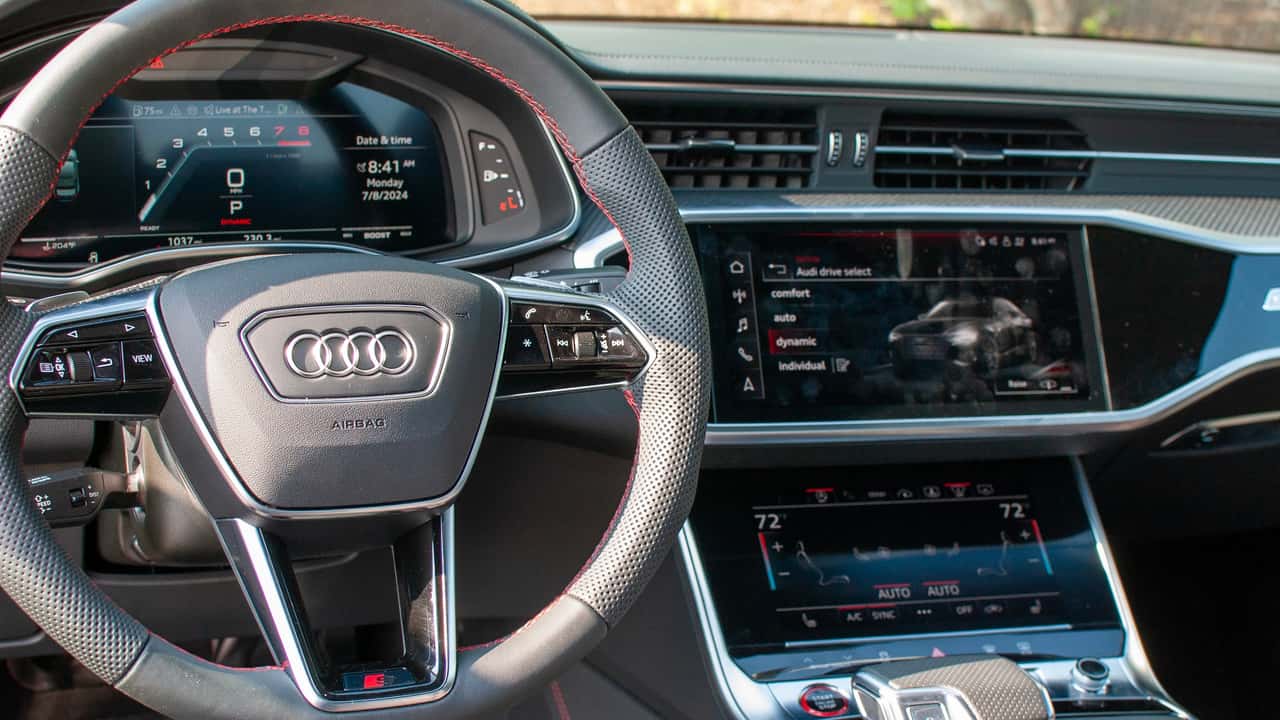 Chris Perkins / Motor1
Chris Perkins / Motor1  Chris Perkins / Motor1
Chris Perkins / Motor1
Without the $4,000 S Sport Package, which includes rear-wheel steering, an electronically controlled rear differential, and a sports exhaust, I don’t think this S6 is quite as keen a driver as it could be. Still, it’s competent on a fast road, with a ride that’s never too harsh despite its 21-inch wheels. Thank height-adjustable air suspension with adaptive dampers for that.
Interestingly, the S6 no longer has a direct rival, at least among gas-powered luxury sedans. Both the BMW 540i and Mercedes-Benz E450 are less powerful, and put less emphasis on performance, though both are a little cheaper. Meanwhile, BMW no longer offers the M550i and the Mercedes-AMG E53 is now a 603-hp plug-in hybrid that will likely be a lot more pricey than the $76,995 base price of the 2025 S6. (We tested a 2024 model, but the car is unchanged for 2025.)
Plus there’s real sleeper appeal here. Maybe not in this admittedly lovely shade of Grenadine Red, but the S6 is relatively subtle and handsome compared to the new E-Class and 5 Series. Get one of these in a dark color, too, and it will fly well under the radar.
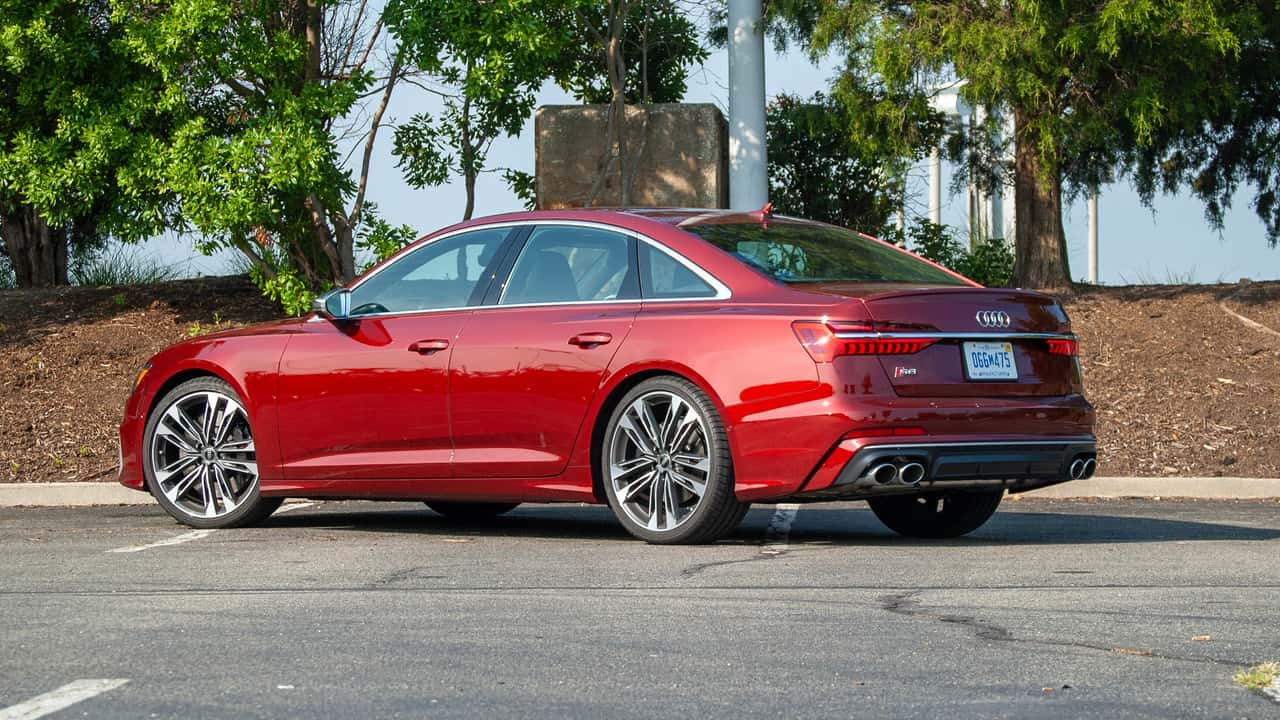 Chris Perkins / Motor1
Chris Perkins / Motor1
Cons: Not The Most Thrilling To Drive, Not The Most-Inspiring Engine
Like so many of Audi’s cars, it’s easy to see the S6 fitting well into your life. It’s not the most thrilling four-door on the market by any means, but as a luxury daily driver with some GT bonafides, it’s a worthy option. It drives well, without asking the owner to make sacrifices for its performance.
I think there’s real charm here too. I’m a romantic when it comes to automotive history, and I do appreciate the stubbornness of Audi rigidly sticking with a formula it knows, even if a lot of people would argue it’s not the right approach. It’s the same sort of thing as Porsche sticking with the rear-mounted flat-six in the 911, even as rear-engine cars have been otherwise abandoned. That’s something you really only get with German automakers.
This mechanical layout still has some years left ahead of it. After this gas-powered A6 bows, Audi will replace it and the A7 with a single model carrying the A7 moniker, just as it did with the A4 and A5. Still, the electric age will eventually see Audi abandoning a thing it’s been doing for decades. It’s happening across the auto industry, and while I of course don’t want to say it’s a bad thing, it is a thing. We are losing some ties to the past.
Competitors
BMW 5 Series Mercedes-Benz E-Class
More From Audi
The New Audi Q5 Has an Extra Brake Light
Audi Says the New RS3 Smells Better
Get the best news, reviews, columns, and more delivered straight to your inbox, daily. Sign up For more information, read our
Privacy Policy and Terms of Use.
| Engine | 2.9-Liter Twin-Turbo V-6 |
| Output | 444 Horsepower / 442 Pound-Feet |
| Transmission | 8-Speed Automatic |
| Drive Type | All-Wheel Drive |
| Speed 0-60 MPH | 4.4 Seconds (mfr.) |
| Maximum speed | 155 MPH (electronically limited) |
| Weight | 4,486 Pounds |
| Efficiency | 19 City / 27 Highway / 22 Combined |
| Seating Capacity | 5 |
| Cargo Volume | 13.7 Cubic Feet |
| On Sale | Now |
| Base Price | $76,595 |
| As-Tested Price | $93,290 |
12 Sep, 2024 | Admin | No Comments
Race Simulator Experience at German Car Festival & Classic Japfest

Tillett is thrilled to announce the highly anticipated Simulator Experience at the German Car Festival and Classic Japfest at Goodwood on October 5/6. Get ready to immerse yourself in the world of virtual racing and test your skills against fellow car enthusiasts!
The Ultimate Racing Experience with State-of-the-Art Simulators
The heart of this experience lies in the state-of-the-art Simulator Suite, where you’ll find four cutting-edge Exsim VR5 Motion Simulators. These simulators are equipped with the top-of-the-range D-Box actuator system, featuring six inches of travel. But that’s not all – they also boast a unique Progressive Yaw system that adds rear-end traction loss to a four-actuator setup. This means you’ll feel every turn, every acceleration, and every braking zone as if you were right there on the track!
The Exsim VR5 Motion Simulators come complete with Samsung Ultrawide gaming monitors, offering an immersive visual experience that will transport you into the heart of the action. And to ensure unparalleled accuracy and brake feel, they feature the latest Heusinkveld Engineering pedals.
And of course, the simulators come fitted with the latest range of carbon fibre race seats from simulator sponsors, Tillett. This is the perfect opportunity to test the seats in a race or track scenario to see why you need them in your car!
Tackle the Iconic Goodwood Track
During your 20-minute sessions, you’ll have the opportunity to virtually tackle the iconic Goodwood track, a true petrolhead’s favourite. Goodwood Motor Circuit has a rich history and has seen legendary drivers like Sir Stirling Moss, Jim Clark, and Jenson Button take on its challenging corners and straights. Now, it’s your turn to leave your mark on this famous circuit and make your way up the Tillett leaderboard!
Be sure to check out our Goodwood track guide so you can familiarise yourself with the circuit now to give yourself a slight advantage…
Book Your Spot and Get Ready to Race
The Race Simulator Experience is available to book now. Advanced bookings cost £20 per 20-minute session. With limited spaces available, book now to avoid disappointment!
Add a simulator sessions to your German Car Festival or Classic Japfest ticket purchases.
The post Race Simulator Experience at German Car Festival & Classic Japfest appeared first on Fast Car.
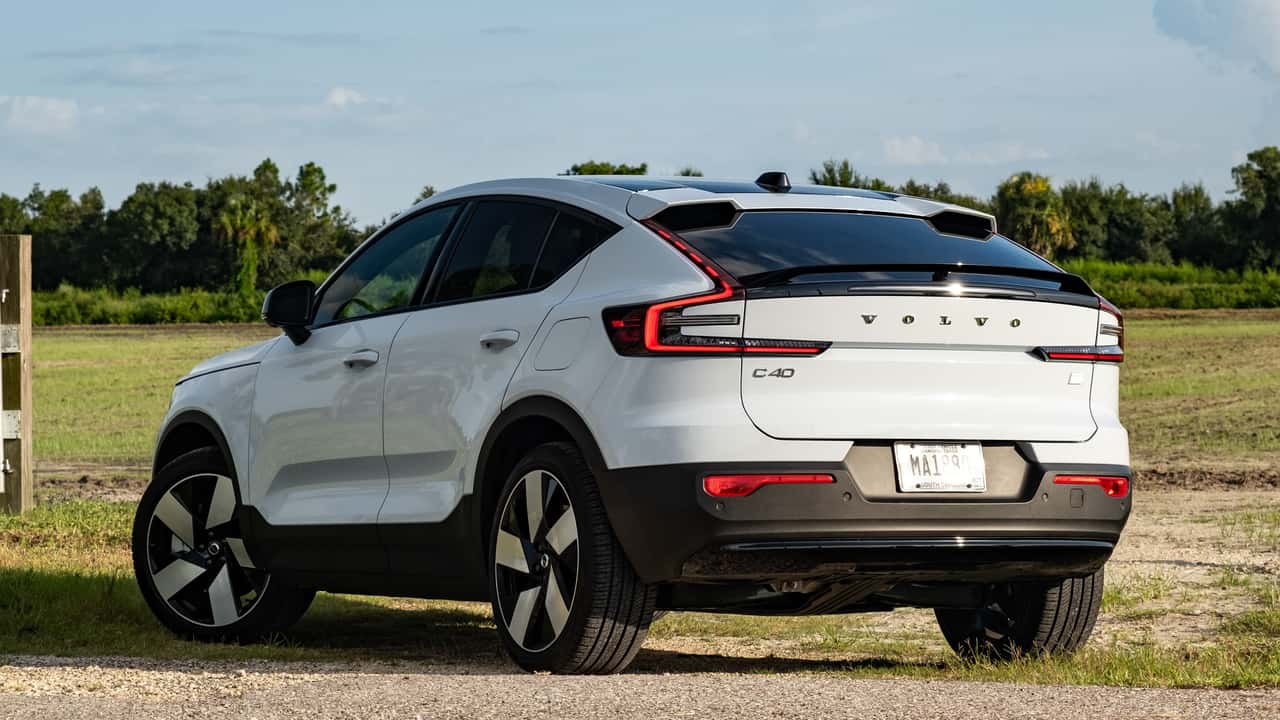
The Volvo C40 looks good. It’s nice to drive. It’s quiet, comfortable, and has just enough technology to keep people entertained. And at $59,995 as-tested for this single-motor, extended-range Ultimate model, it’s not that pricey given the current luxury EV market.
But for as nice as it all is, I can’t figure out who this car is for. The C40 is a Volvo SUV coupe—already a niche within a niche—sporting average range, an average charging rate, and less cargo space than its XC40 Recharge counterpart. It probably doesn’t have hoards of people banging down Volvo’s doors, and after a week behind the wheel, I’m not convinced even the nerdiest Volvo buyers will find much reason to take the C40 home.
| Quick Specs | 2024 Volvo C40 Recharge Single Motor Ultimate Extended Range |
| Battery | 78.0-Kilowatt-Hours |
| Output | 248 Horsepower / 310 Pound-Feet |
| 0-60 MPH | 6.9 Seconds |
| Weight | 4,453 Pounds |
| Base Price / As Tested | $56,090 / $59,995 |
If there’s anything that might convince buyers, it’s the way the C40 looks. In typical Volvo fashion, this SUV has clean lines, soft angles, and a few necessary—but not over-the-top—sporty cues. The slicked-back roof blends neatly into a trunk lid with a sporty spoiler on top. The taillights run up either side of the rear glass for a nice, cohesive shape. The front end, meanwhile, keeps most of the same elements that make the compact XC40 such a looker.
The interior follows suit: Sporty simplicity. You might be surprised to see cloth seats in a nearly $60,000 luxury vehicle, but they work here. The front and rear chairs have a great shape and feel, making them easy to sit in for hours on end. The rest of the cabin uses clean, simple lines and high-end materials—and a portrait-oriented 8.0-inch touchscreen graces the center of the dash.
Volvo uses the built-in Google system with maps, a voice assistant, Google Play Store access, and finally, Apple CarPlay. You still can’t use your phone-based Android Auto, which is annoying, but the C40 runs Google Maps and other functions pretty seamlessly. My only complaint is that the touch response doesn’t isn’t up to par with modern smartphones, and the Android Automotive system hasn’t changed much since its debut in 2019.
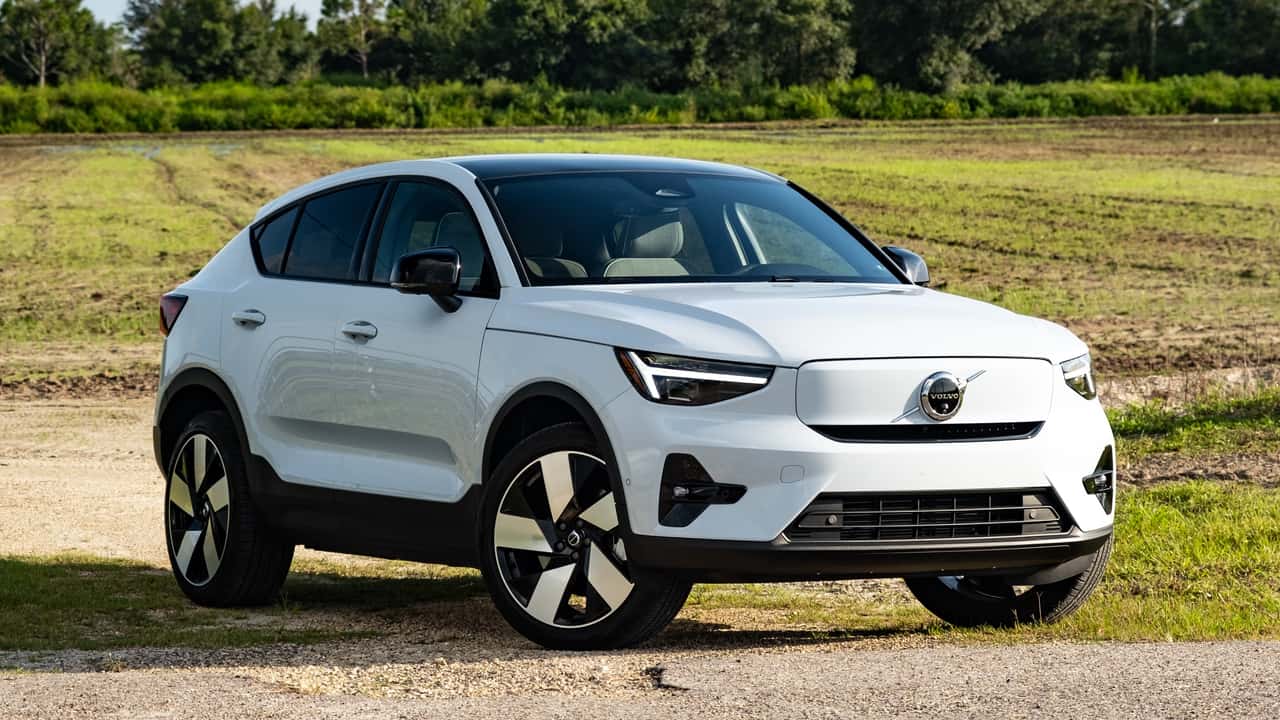 Jeff Perez / Motor1
Jeff Perez / Motor1
Pros: Sleek Design, Comfortable Ride, Clean Cabin, Well-Priced
This single-motor, extended-range model has a 78.0-kilowatt-hour battery pack (usable capacity) sending power to a single, rear-mounted electric motor. With 248 horsepower and 310 pound-feet worth of instant torque, it takes this single-motor model a modest 6.9 seconds to reach 60 miles per hour, while the dual-motor version gets there in a brisk 4.5 seconds.
Most buyers will find the single-motor model quick enough. It has no issue pulling out in front of traffic and getting up to speed, or passing on the highway. Around town, the instant electrons make it feel zippy, and the aggressive one-pedal driving function means you can maneuver without even touching the brakes.
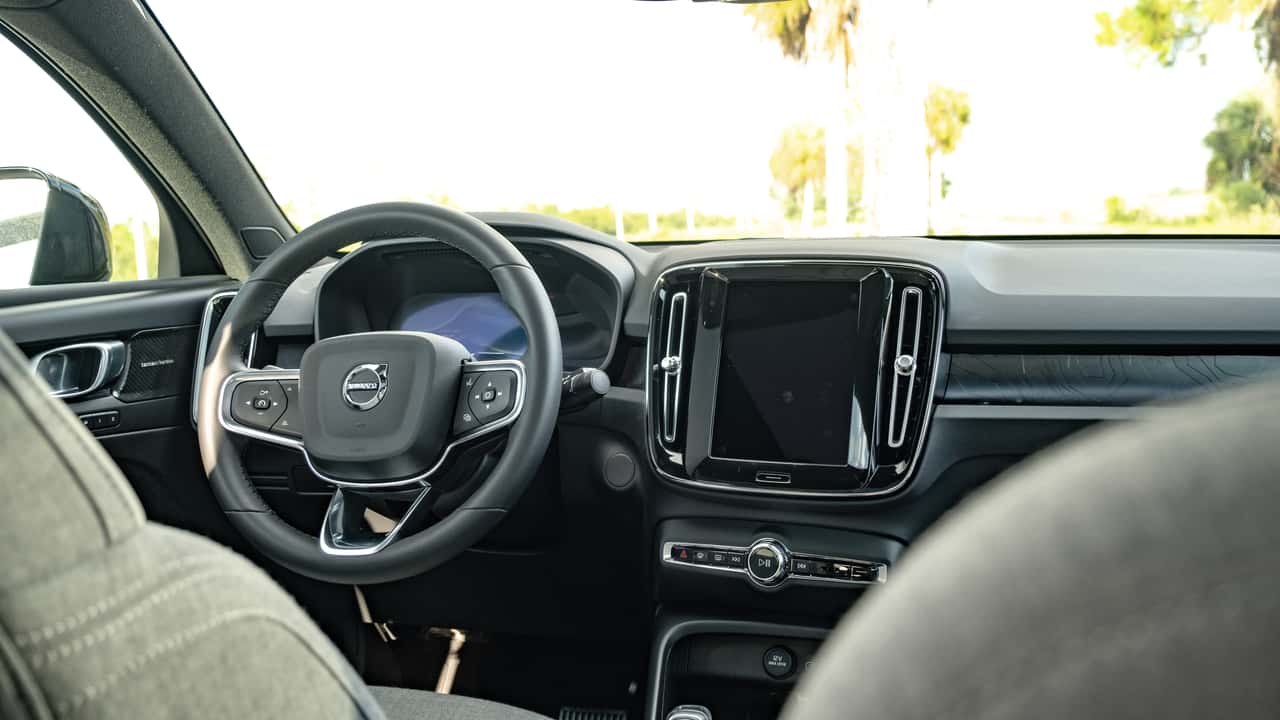
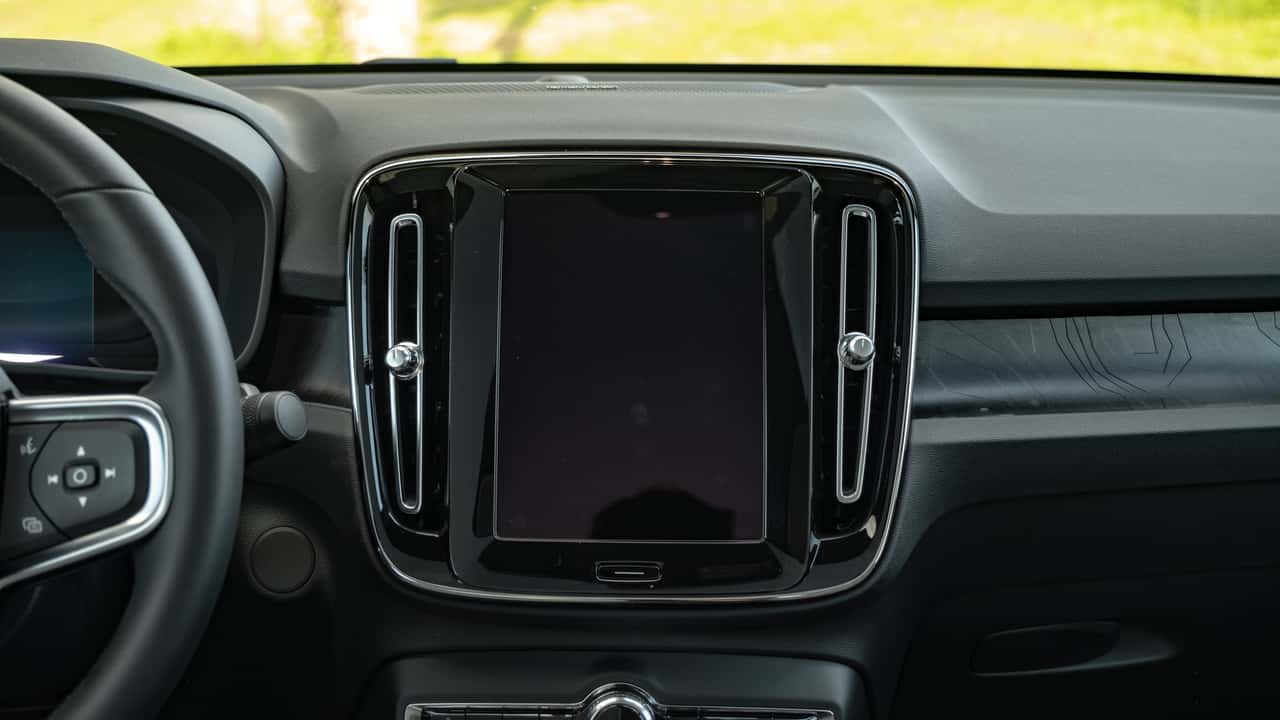 Jeff Perez / Motor1
Jeff Perez / Motor1 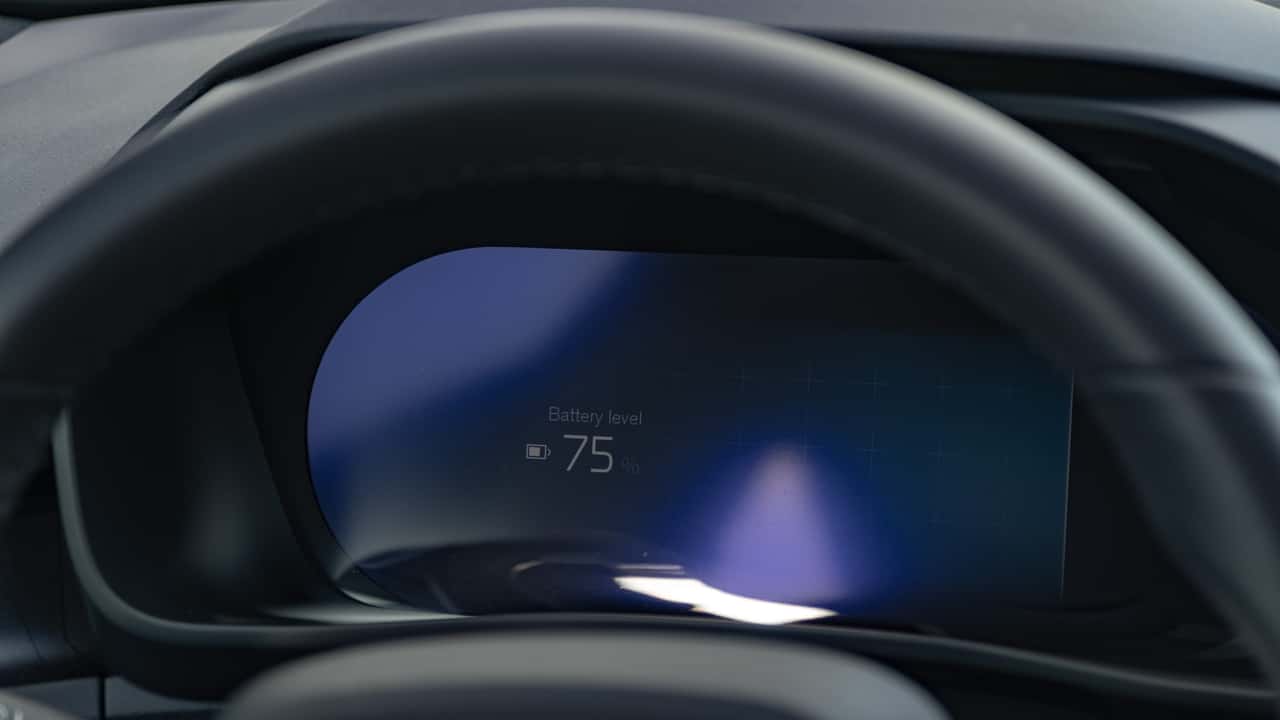 Jeff Perez / Motor1
Jeff Perez / Motor1
The C40 has decent moves in the corners, too. The updated 2024 model gains rear-wheel drive, which makes it more fun to flick around than some of the front-drive-based alternatives. The steering is quick, the suspension is responsive, and the single-motor model (while still a heavy vehicle at 4,453 pounds) feels lighter on its tires than some other EVs.
Ultimately though, the single-motor C40 leans into comfort, rather than sportiness. The cabin is coffin-quiet; No pesky gas-engine sounds infiltrating the interior. The only thing you might hear is some wind noise and tire roar at high speeds. According to my ears, the C40 is one of the quietest EVs out there.
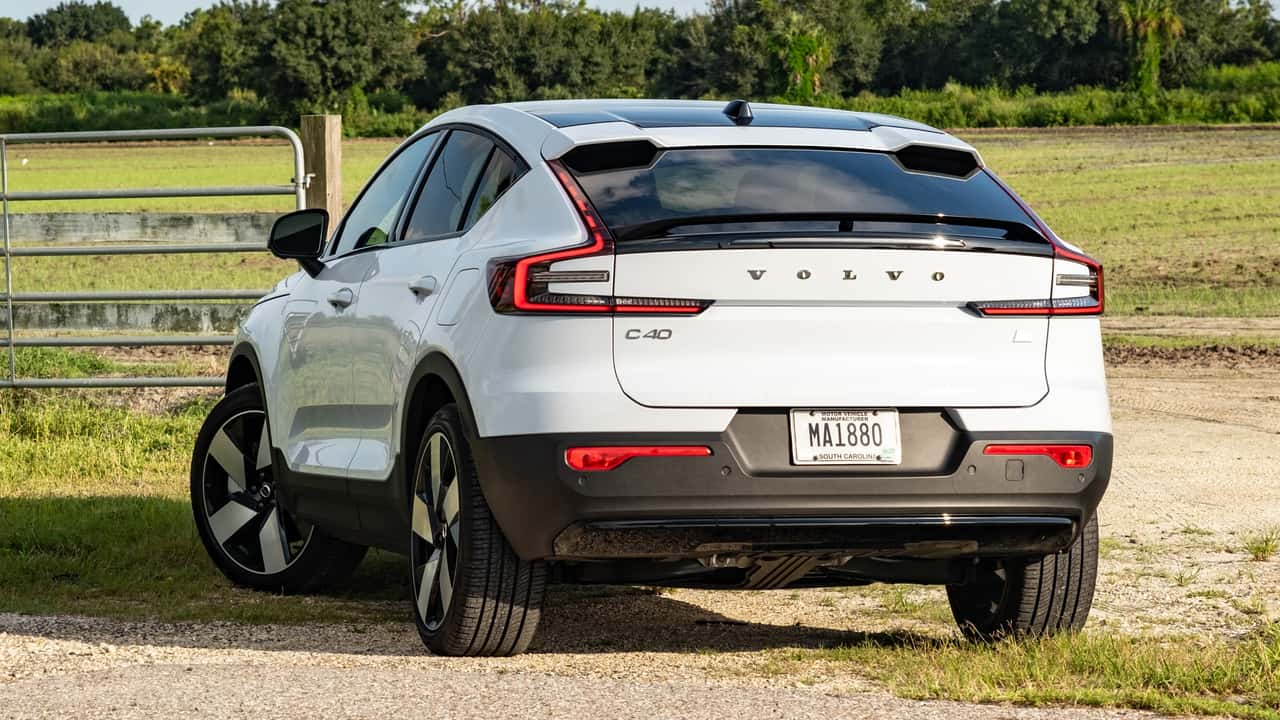 Jeff Perez / Motor1
Jeff Perez / Motor1
Cons: A Niche Within A Niche, Outdated Infotainment, Below-Average Range & Charging
But because of that sloped roof, the C40 isn’t as roomy as the XC40. It loses 2.4 inches of rear headroom and 8.5 cubic feet of cargo space compared to its traditional counterpart. It’s not totally uncomfortable, but with my six-foot frame, my head was nearly scraping the headliner.
The single-motor C40 has the better range of the two trims, driving up to 297 miles on a single charge according to the EPA. The dual-motor model gets just 257 miles of range by comparison. That puts the single-motor C40 smack dab in the middle of the pack; It has better range than the Genesis GV60 (294 miles) and Audi Q4 Sportback (265 miles), but falls short of the Ford Mustang Mach-E (320 miles) and Tesla Model Y (310 miles).
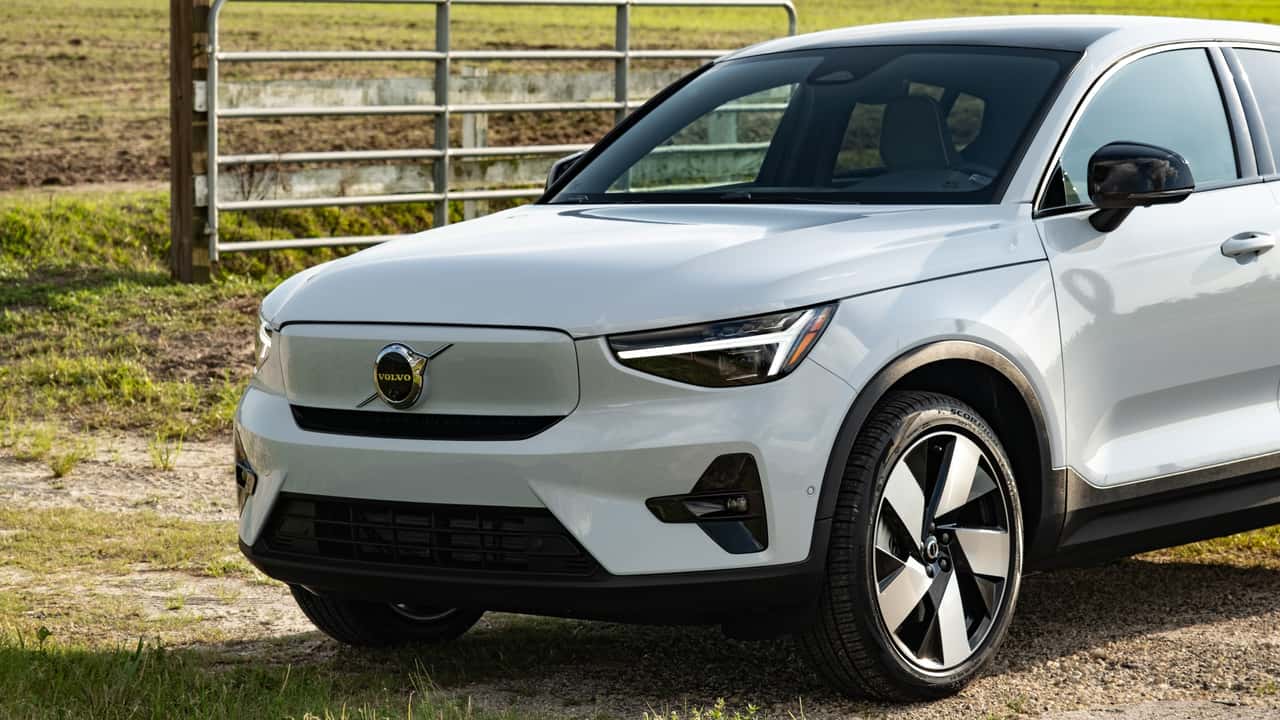 Jeff Perez / Motor1
Jeff Perez / Motor1
In terms of charging, the C40 sucks up electrons at a rate of 200 kilowatts on a DC fast charger. Volvo says that will get you from 10% to 80% in 28 minutes. The Mach-E will do the same in 32 minutes at 150 kilowatts and the Audi does 5% to 80% in 36 minutes at the same rate. The Kia EV6 and Genesis GV60 are the fastest chargers of the group, going from 10% to 80% in just 18 minutes at 240 kilowatts.
So who is the Volvo C40 for, exactly? I still haven’t figured it out. The Model Y goes further, the EV6 and GV60 charge faster, and for way less money, you can get a Mach-E with 320 miles of range. If you want something that looks exceptionally pretty, then Volvo’s got you covered. Otherwise, the C40 is a tough sell.
Competitors
Audi Q4 Sportback E-Tron Ford Mustang Mach-E Genesis GV60 Kia EV6 Tesla Model Y
Competitor Reviews
2023 Kia EV6 GT First Drive Review: White Smoke, Green Cred
2023 Genesis GV60 Driving Notes: Fun And Funky
Get the best news, reviews, columns, and more delivered straight to your inbox, daily. Sign up For more information, read our
Privacy Policy and Terms of Use.
The company behind some of the greatest cars and craziest videos the Internet has ever seen, Hoonigan, has filed for bankruptcy. Is this the end of an era, or a new beginning for one of the modified car scene’s greatest stars?
Today is a sobering day in the world of high-octane car culture. Why? Because today is the day we learned that Hoonigan has filed for Chapter 11 bankruptcy protection, aiming to discharge a whopping $1.2 billion in debt while restructuring its operations. Known for its crazy, adrenaline-pumping content and jaw-dropping builds, Hoonigan became a household name for car fans all across the world with stars like Ken Block and Travis Pastrana doing crazy things in crazy cars. But the challenges post-pandemic have thrown quite the spanner into the works.
What Went Wrong?
During the pandemic, demand for automotive customisation and modifications surged. People stuck at home turned to thier cars. Home garages became tuning workshops, igniting a golden era for companies like Hoonigan. But, as the world re-emerged, so did the economic toll of supply chain constraints and soaring costs.
Revenue jumped from $844 million in 2019 to an eye-watering $1.5 billion in 2022. But then took a nosedive in 2023. Hoonigan faced high interest rates and skyrocketing costs for materials like aluminum, coupled with a sudden slump in demand. The company missed its projected earnings targets, and it was clear something drastic had to be done. Enter Chapter 11.
The Merger and the Downfall
As part of a rebrand, Hoonigan became the face of Wheel Pros, LLC, back in October 2023. Remember Wheel Pros? They’ve been a stalwart in the aftermarket world since 1994, designing and selling wheels, tyres, and accessories. Clearlake Capital acquired Wheel Pros in 2018, leading to a flurry of acquisitions and expansions. When Hoonigan merged with Wheel Pros in September 2021, everything looked golden. The company was experiencing tremendous growth.
Before merging with Hoonigan, Wheel Pros was in full throttle with its expansion plans, snapping up two facilities in the United States back in 2018 and 2020. The cost? A cool $12 million, plus some extra cash for additional investments. But the investments didn’t pan out as expected. By late 2021, they had to let go of a big chunk of one facility and shut down the other entirely in early 2023.
What’s Next for Hoonigan?
Hoonigan’s Chapter 11 filing in Delaware isn’t just about cutting losses. It’s about restructuring for a more sustainable future. They’ve already entered a Restructuring Support Agreement (RSA) with many of their debtholders and are in the process of securing approximately $570 million in new capital. The goal? To emerge from the proceedings in just two months, backed by the majority ownership of a group of current lenders.
The good news for employees, customers, vendors, and suppliers is that Hoonigan plans to continue normal business operations without any disruptions. The court will have the final say, but this restructuring could pave the way for a leaner, more resilient company.
A Community in Transition
For a brand that’s defined car culture and pushed the boundaries of what’s possible behind the wheel, this bankruptcy isn’t the end—it’s just another chapter. The community of automotive enthusiasts remains strong and hopeful. Maybe it’s the adversity that fuels our love for cars even more. Hoonigan, after all, is more than just a company; it’s a symbol of our undying passion for high-performance vehicles and the thrill of the road.
We wish Hoonigan all the best with the restructure, and look forward to seeing what cool content and products the iconic Hoonigan brand can give car enthusiasts in the future.
The post Hoonigan has filed for Bankruptcy appeared first on Fast Car.

The Volvo EX90 is the Swedish brand’s first electric SUV on a dedicated platform and just one of a handful of electric three-rows on sale in the United States today. Its only real competitors are the Kia EV9, Rivian R1S, and Tesla Model X—three solid machines with lots of range, fast charging, and for the most part, software-enabled features that function well.
The same can’t be said of the EX90—at least not yet. Volvo makes lofty promises about assisted driving, convenience, and other software-enabled systems that simply do not function as of writing. Not to mention the number of bugs that should’ve been addressed before I drove the car. Considering Volvo controls the entire software stack, all of these issues should be fixed. I just can’t tell you when.
| Quick Specs | 2024 Volvo EX90 |
| Motor | Dual Permanent Magnet Synchronous |
| Battery | 107.0 Kilowatt-Hours (Usable) |
| Output | 510 Horsepower / 671 Pound-Fee |
| EV Range | 308 Miles |
| Base Price / As Tested | $81,290 / $94,640 |
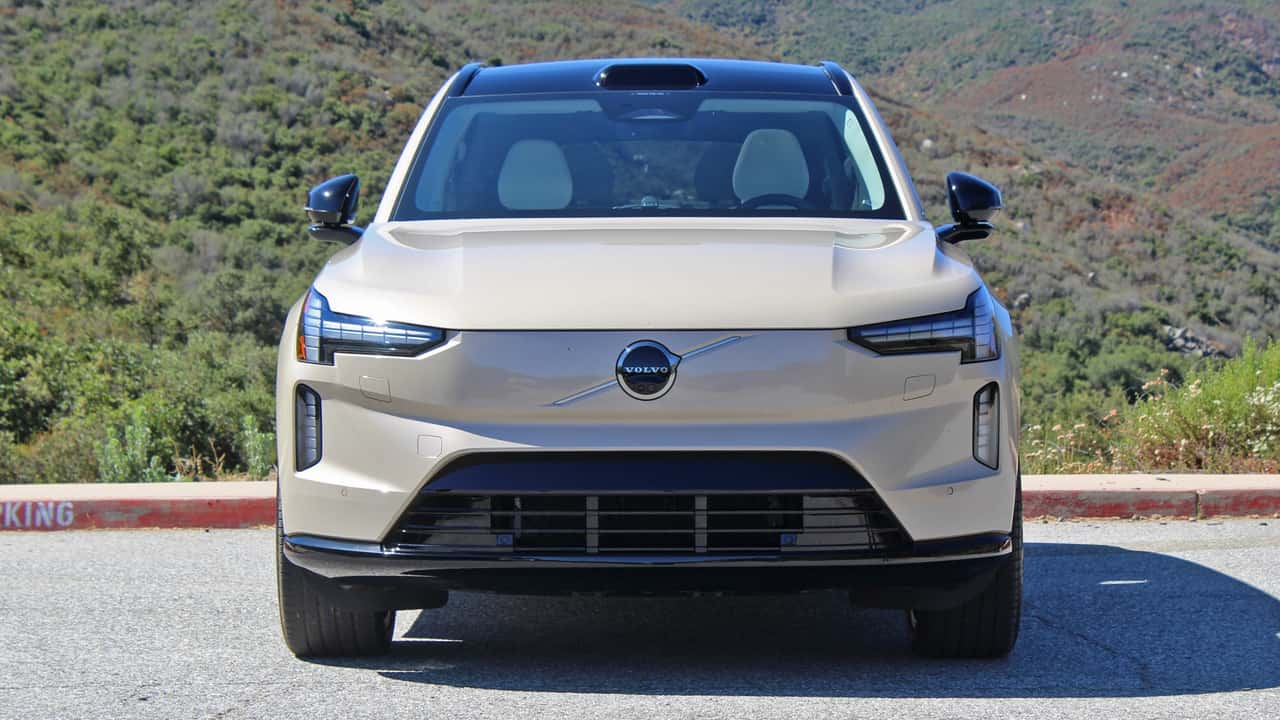
On paper, at least, the EX90’s drivetrain and chassis are impressive. Despite operating in the range of 400 volts, Volvo claims this car’s 111.0-kilowatt-hour gross (107.0-kilowatt-hour usable) battery pack can charge at a peak rate of 250 kilowatts. That’s faster than the Kia EV9 with its “800-volt” architecture (actually closer to 600 volts in reality), and quicker even than the Rivian.
Despite being one of the brand’s early EVs, Volvo uses clever efficiency-boosting tech like a front inverter with Silicon Carbide MOSFETs (the rear uses insulated gate bipolar transistors) that many legacy automakers have yet to adopt in their electric vehicles. It’s one of the big reasons why the EX90 can travel over 300 miles on a charge.
The SiC front inverter likewise translates into impressive straight-line performance. The EX90 sends 402 horsepower and 538 pound-feet of torque to all four wheels. An extra $5,000 for the “Twin Motor Performance” package unlocks 510 hp and 671 lb-ft, but be aware, this is just a software change. The vehicle is capable of these peaks from a hardware perspective, even if you bought the 402-hp version.
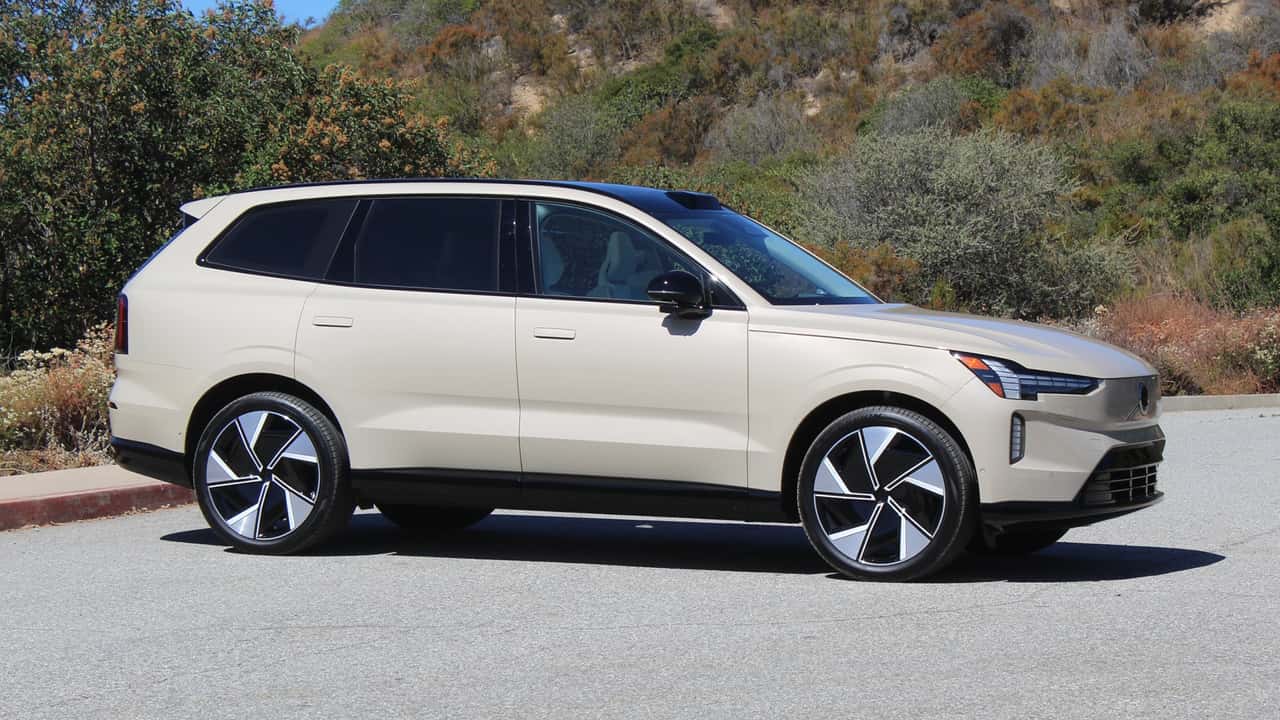
Pros: Good Range & Charging, Serene Interior, Solid Straight-Line Performance
Like other big EVs, the EX90 is quick off the line, but it’s not fun to drive. The steering is unbelievably numb. Even at higher speeds, there was barely any perceptible connection between the front tires and the wheel itself. Around fast or tight corners, you could hear the tires grasping for grip with a desperate hum.
The EX90’s straight-line performance and excellent ride—high-trim EX90s sit on an air suspension—fit nicely with its serene cabin. Most of the glass is laminated for extra silence, and a low drag coefficient of just 0.29 helps, too. Heated and cooled massage seats, as well as an impressive 25-speaker sound system, are the cherry on top.
The EX90’s cabin was a peaceful place to ponder why there were only two switches to manipulate four windows. A third button behind the two switches toggled between the first and second rows. The EX90’s lack of physical switchgear is bewildering. Such a tranquil interior, yet such a superfluous annoyance. It would have been fine if all of that clever software worked properly—but it didn’t.
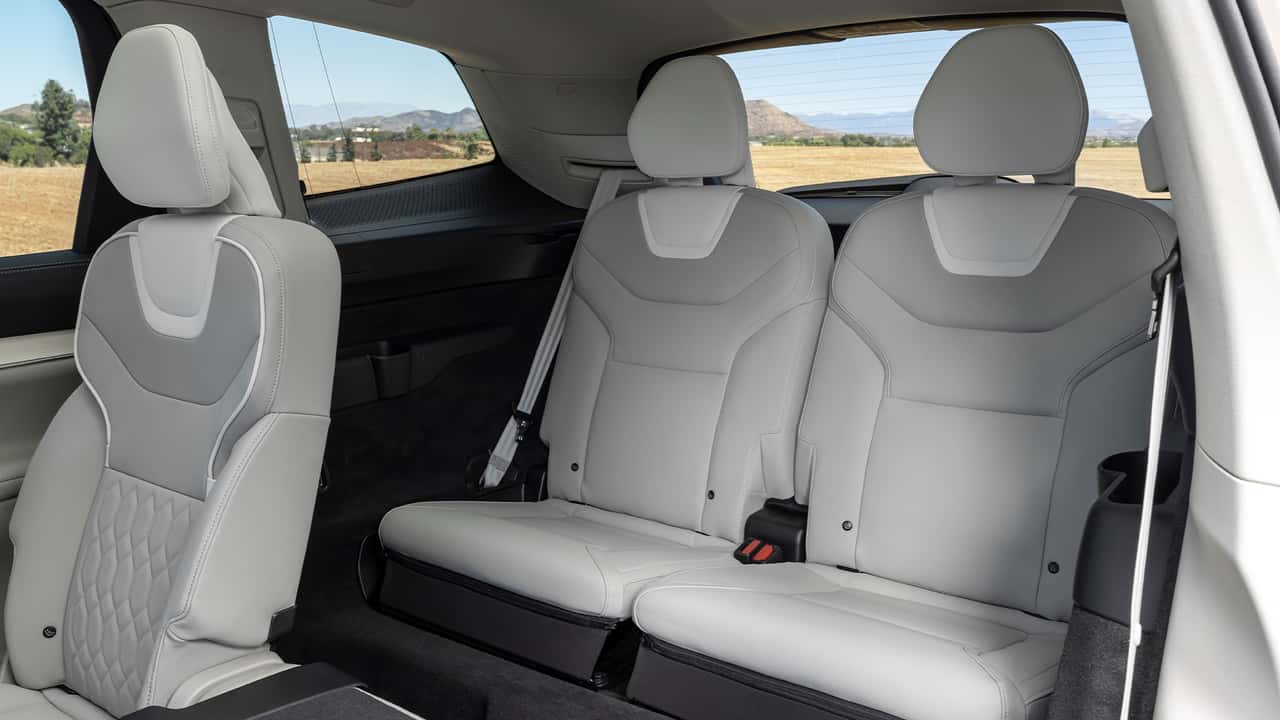
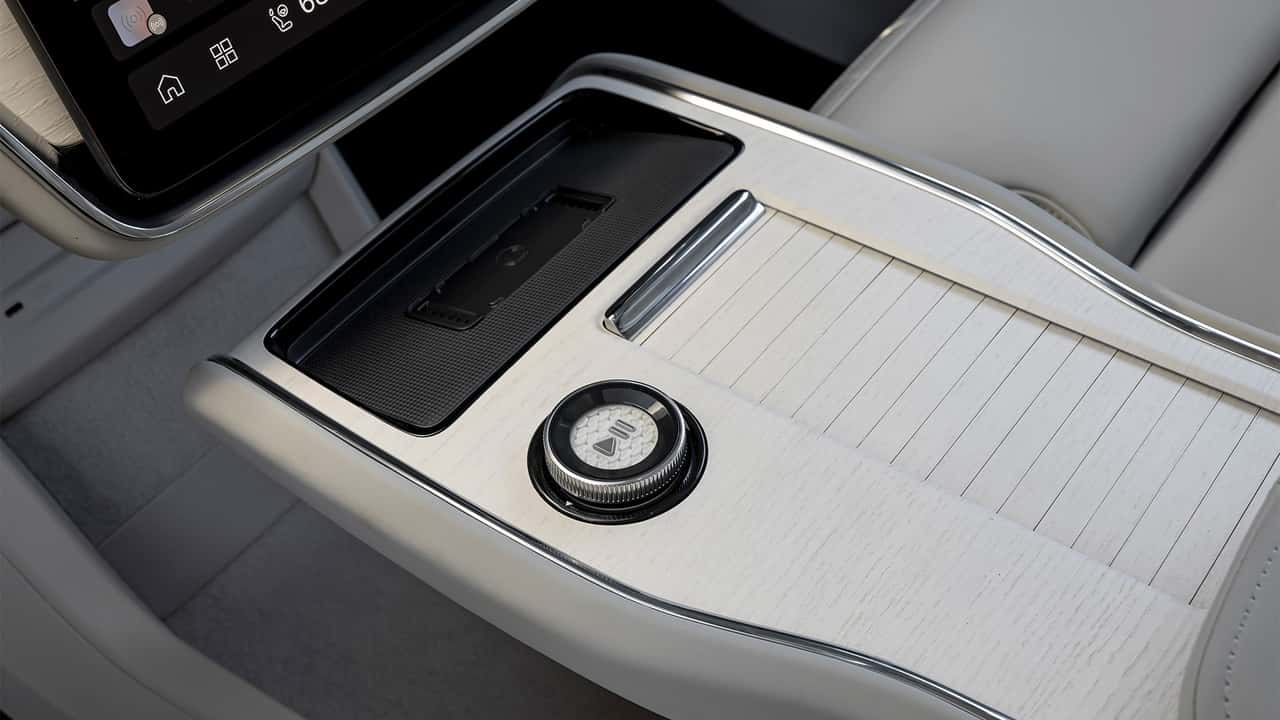
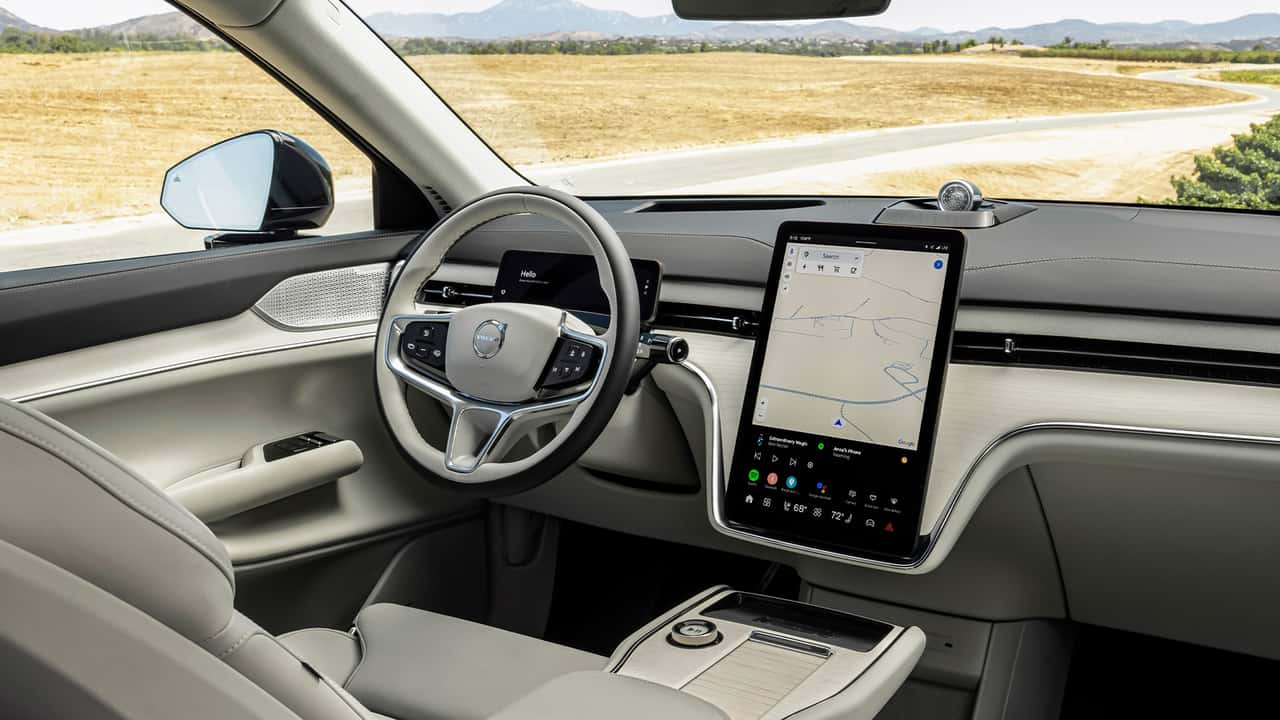
The pre-production EX90 I drove used a smartphone as a keyfob. Connectivity headaches made it difficult to get the car going again once it had been turned off, and trying to do so once triggered the vehicle’s emergency seatbelt tensioners, which was extremely unpleasant.
Despite an empty rear bench, the EX90 also frequently thought a passenger was in the back seat. Then, suddenly, it thought there were two passengers. More company. The car chimed, insisting I buckle them up.
Perhaps the most bothersome technical bug wasn’t really a bug at all, but the fact that the EX90 has a very prominent Light Detection and Ranging (or, LiDAR) bulge on its roof, which currently does nothing. The system itself is built by a leader in the industry, Luminar, and it’s capable of gathering a mountain of data about the vehicle’s surroundings. Many experts believe LiDAR is the key to driverless cars or, in Volvo’s case, ever more safety.
Once again, its lack of functionality comes down to software integration. For context, there’s even a clever washer nozzle at the end of the wiper to clean this sensor, but the sensor itself is not active yet. Frustrating.

Cons: Fussy Interface, Software Needs Work, Poor Steering Feel
Now, Volvo has control of the car’s entire software stack, which the automaker says will make fixing all of these issues and adding functionality much easier. To be completely transparent, I believe it. Many automakers, even non-legacy brands, struggle with software, but eventually, they solve their myriad issues. That said, the statement of, “Please buy this $80,000 car which isn’t done yet,” still makes the EX90 a tough sell.
I’ll say in good faith that Volvo will likely fix all of these issues. I’ll also say in good faith that you should probably just wait until that happens. Eighty grand is the base price for this thing. I just drove a loaded Kia EV9 a few weeks ago that cost $78,430, and despite a few hiccups, it wasn’t waiting on an over-the-air update to get Danny Phantom out of the back seat. It also had switches for every window and physical buttons for things you use often, like climate control.
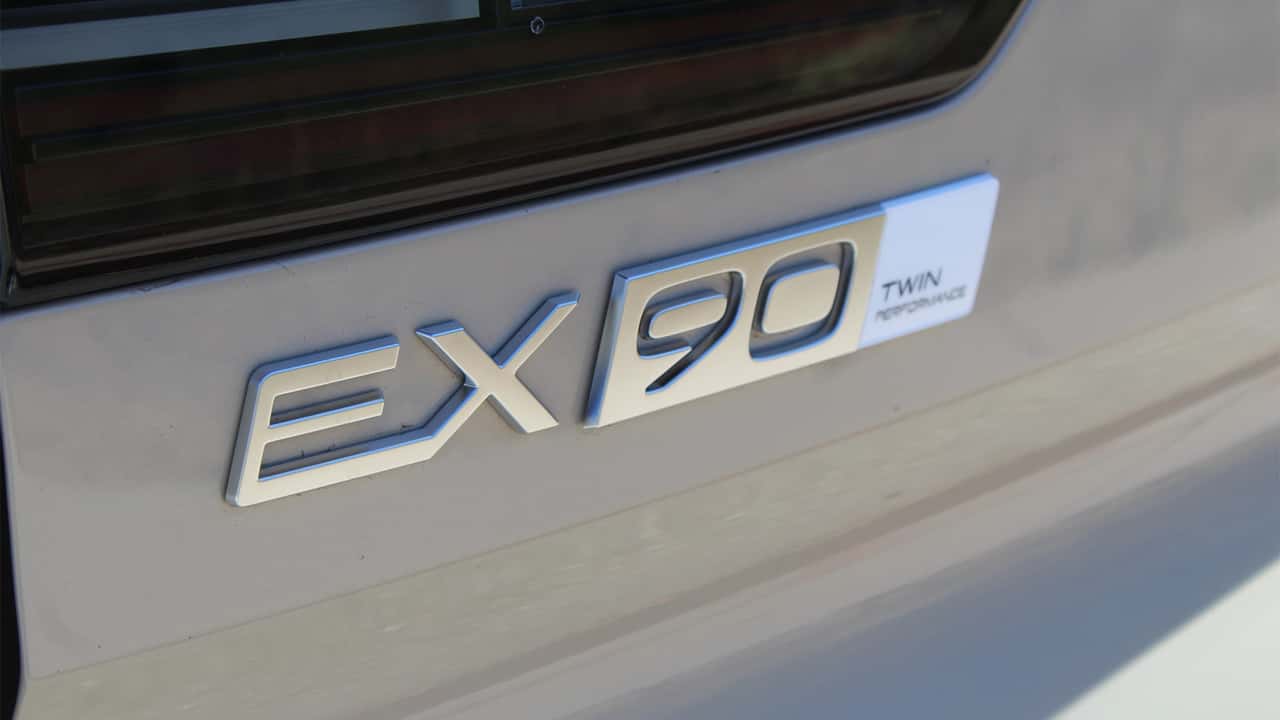
I’m not a sworn enemy of minimalism—well, okay, maybe I am a little. But regardless of my opinion, the Volvo EX90 takes it too far. You can’t program your way out of that. But because of its underpinnings, the EX90 is a good EV. It has an impressive range and charging performance, and it makes competitors with similar batteries seem outdated in comparison.
I’m not sure if it’s a good car, though. Say what you will about the Cadillac Lyriq; It’s a great car if not a great EV. The former is much more important. The EX90 doesn’t feel like a complete vehicle, and its only real competitors check those boxes. Good cars, good EVs, and for slightly less money.
Until Volvo can get all of the bells ringing and whistles… uhh… whistling, the EX90 has a long way to go.
Competitors
Kia EV9 Rivian R1S Tesla Model X
Competitor Reviews
2024 Kia EV9: The Good and the Bad
The EV9 Is More Proof That Kia Is Killing It With EVs
Get the best news, reviews, columns, and more delivered straight to your inbox, daily. Sign up For more information, read our
Privacy Policy and Terms of Use.
| 2025 Volvo EX90 | |
| Motor | Dual Permanent-Magnet Synchronous |
| Battery | 107.0 Kilowatt-Hours (Usable) |
| Output | 510 Horsepower / 671 Pound-Feet |
| Drive Type | All-Wheel Drive |
| Speed 0-60 MPH | 4.7 Seconds |
| Weight | 6,129 Pounds |
| EV Range | 310 Miles |
| Charge Time | 10-80 Percent In 30 Minutes |
| Charge Type | 110 Volt / 220 Volt / 250-Kilowatt DC Fast Charging |
| Seating Capacity | 6 (7 available) |
| Base Price | $81,290 |
| As-Tested Price | $94,640 |
| On Sale | Now |

Great cars don’t come from a committee. Or practicality. Or from any ordinary common sense, really. Great cars come from single-minded devotion, a bit of neurodivergent hyperfixation, and a team given a long enough leash to define its mandate.
One of those great cars is the 2025 Hyundai Ioniq 5 N.
Even though it’s built on the bones of a commuter electric SUV, the Ioniq 5 N is one of the best-handling, most well-rounded, and most interesting vehicles on sale today. It’s a true driver’s car that prioritizes fun and feel over lap times.
The I5N exists within a fascinating context. The fear was that EVs would be too heavy and bloated to make good performance cars, but even at 4,861 pounds, the Ioniq weighs the same as the brand new and (controversially) hybridized Mercedes C63S E Performance, and hundreds of pounds less than the latest BMW M5. Compared to the Mercedes, at least, the Hyundai is miles better to drive.
But it still has one big flaw: You can’t take it on an aimless, meandering drive due to its severely compromised real-world range. That’s a pretty big flaw. That problem could get fixed soon with a shiny new NACS connector, but I doubt it will ever be that simple.
In our latest video for the Motor1 YouTube channel, we explore the Ioniq 5 N in-depth, hosted by yours truly. Sit back and enjoy one of the most fascinating cars on sale today— sideways in a cloud of tire smoke.
More Motor1 Videos
Here’s Why the GR Corolla’s AWD System Is Bizarre
The Emira Is the Last Great Lotus
Get the best news, reviews, columns, and more delivered straight to your inbox, daily. Sign up For more information, read our
Privacy Policy and Terms of Use.
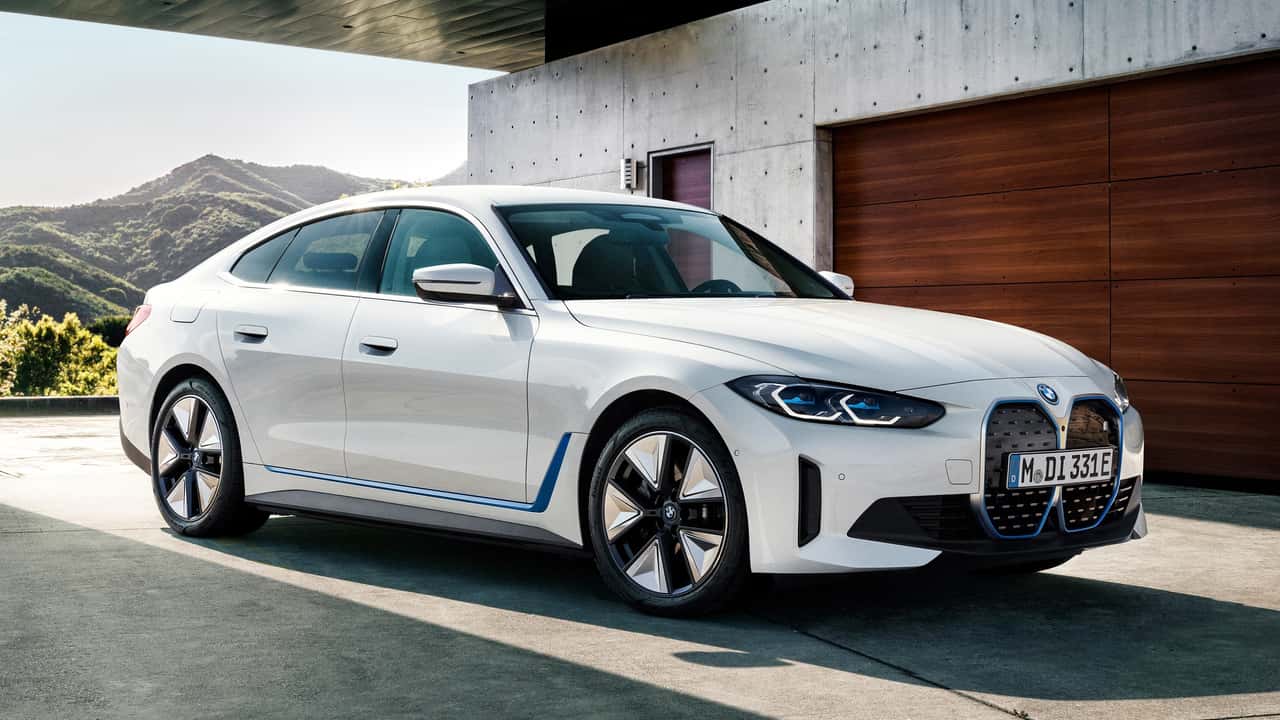
So much of the conversation about EVs isn’t about EVs. We owe much of this to Elon and identity politics, of course, but even with the political shellac stripped back, we rarely talk about EVs in the context of “normal” automobiles.
The automakers are partly to blame.
In a desperate bid to separate their EV lineup from “traditional” vehicles, most automakers divert from established norms. For example, Mercedes won’t simply sell you an EV that looks, feels, and drives like an E-Class. Instead, it builds the awful EQE.
It’s a Mercedes sculpted by painfully generic “aero” body lines, wrapped around a dysfunctional interior. The EQE is an astonishingly fast vehicle that’s less joyful to ride than your dentist’s chair.
This is nearly an industry-wide phenomenon. Automakers think that because EVs use a fundamentally different means of propulsion that customers expect a fundamentally different driving experience.
What if, however, a company took its most-beloved model and did something different, preserving or even enhancing its road manners?
Take BMW. What if it built a normal 3 Series sedan that happened to have some batteries in the floor? How would it drive? How would it function?
Excellently, in fact.
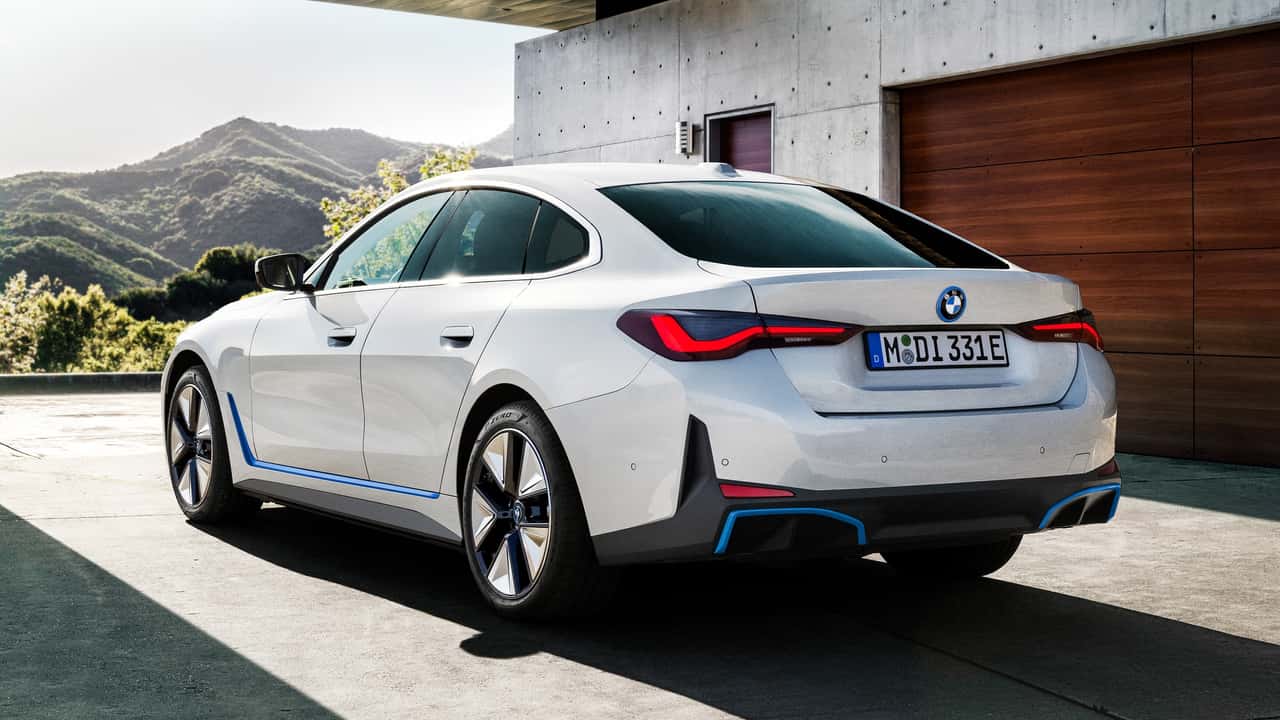 BMW
BMW
| Quick Specs | 2024 BMW i4 eDrive35 Gran Coupe |
| Battery | 68.7 Kilowatt-Hours |
| Output | 282 Horsepower / 295 Pound-Feet |
| 0-60 MPH | 5.8 Seconds (Est.) |
| EV Range | 252 Miles |
| Base Price / As Tested | $52,200 / $64,920 |
BMW calls this mid-size EV sedan the *deep breath* 2024 BMW i4 eDrive35 Gran Coupe. Effectively, it’s a classic 3 Series sedan with a liftback, saddled by some clunky nomenclature.
That’s where the bad news ends. Once you hurdle the awkward naming conventions, you’ll find BMW has adhered to its older, better conventions.
Like every single 3 Series, the i4 GC looks great, drives pleasantly, and folds into daily life like it was borne into your own garage. During a week with the i4 Gran Coupe, I ran errands, suffered traffic, chased one sunset down a mountain backroad, and generally just lived with the car. The i4 didn’t misstep even once.
This is a great sedan, period. And even a great-looking one.
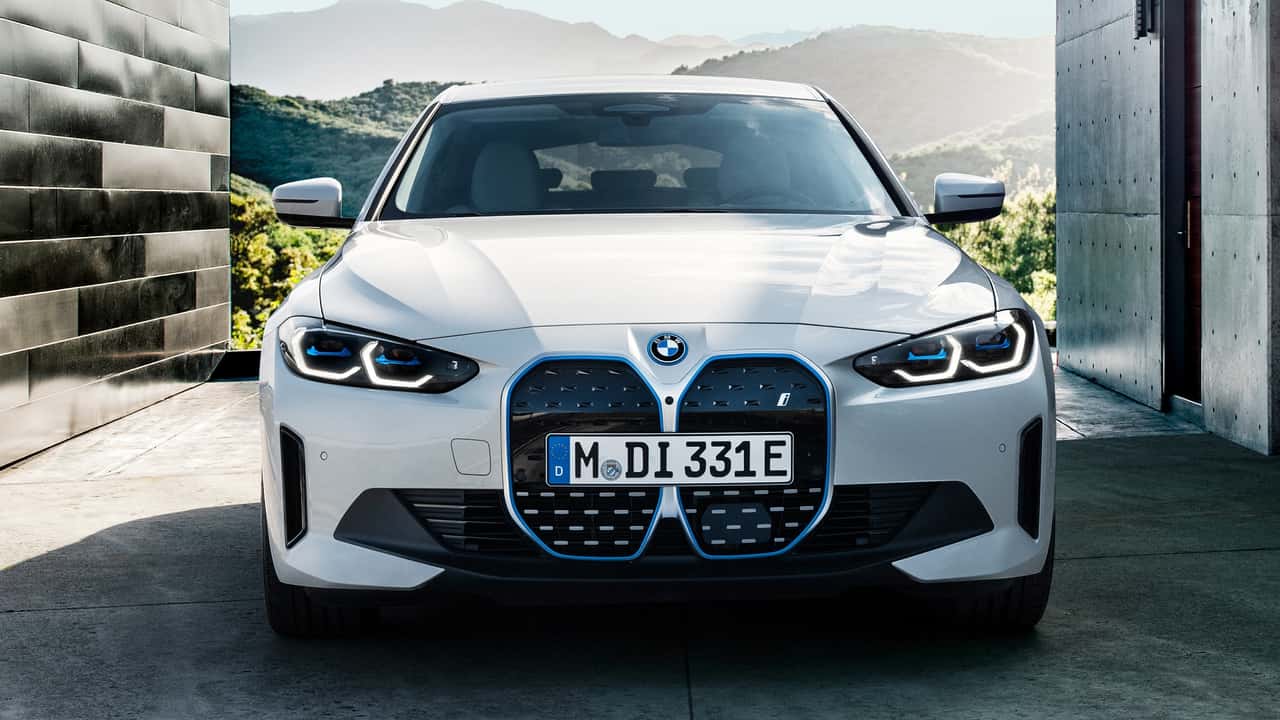 BMW
BMW
Pros: Quiet, Comfy, Quick
Despite riding on an EV “skateboard,” with batteries lining its belly, the i4 GC sticks with BMW’s classic sedan proportions. That means a long, low hood, with tight angles where they should be and swooping sections covering everything else. I still don’t love the gigantic buck-tooth grille, but painted in a dazzling silver called Dravit Grey Metallic ($1,500), the i4’s side profile and rear-three-quarter angles look spectacular (note the vehicle pictured here is the i4 edrive40 trim, slightly different to our hero car, but equally spectacular). None of this car’s proportions hint at electric propulsion.
Especially the smartly appointed interior, which offers ample headroom, a large and usable trunk (aided by that hatchback glass), and just enough luxury and technology to show its driver where that lease payment is going every month.
Instead of visual gimmicks, BMW’s design department simply penned a nice-looking sedan from every angle, inside and out, and threw it to the engineering department to do the rest.
Beneath that finely tailored exterior, an 81.5-kilowatt lithium-ion battery pack powers a single rear motor producing 282 horsepower and 295 pound-feet of torque, all sent to the rear wheels.
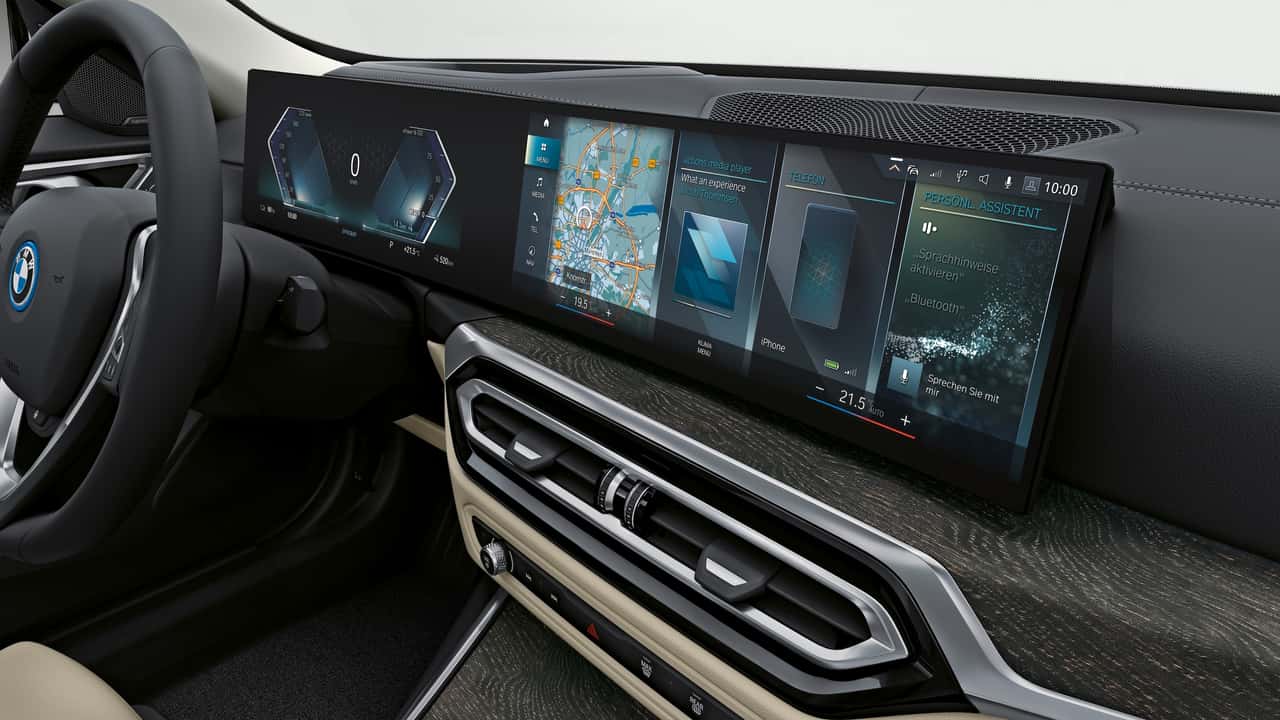 BMW
BMW  BMW
BMW
This slug of power and the i4’s low-drag body amount to a combined 110 MPGe over a projected range of 252 miles. Over the course of my week in the i4, I used maybe a “half tank” of electrons. Never did I suffer range anxiety, though super commuters may get squeamish.
These are not industry-leading numbers for range or efficiency, but they were sufficient for my family’s needs. A simple nightly recharge would cover 95 percent of driving scenarios, and I suspect fit neatly into the lives of many suburban families shopping for a BMW sedan.
If you don’t have the ability to charge this BMW in your garage overnight (a convenience that’s probably not considered enough), you’re better served by a gas-powered Bimmer.
BMW claims 5.8 seconds to 60 miles per hour, but from a few hard pulls up to interstate speeds, I’d say that figure’s pessimistic by a huge chunk. My old M3 hit 60 in about 5.5 seconds and this i4 would leave it for dead. From a dig, or on a highway pull, i4 will rip right up to its 118 mph top speed in moments.
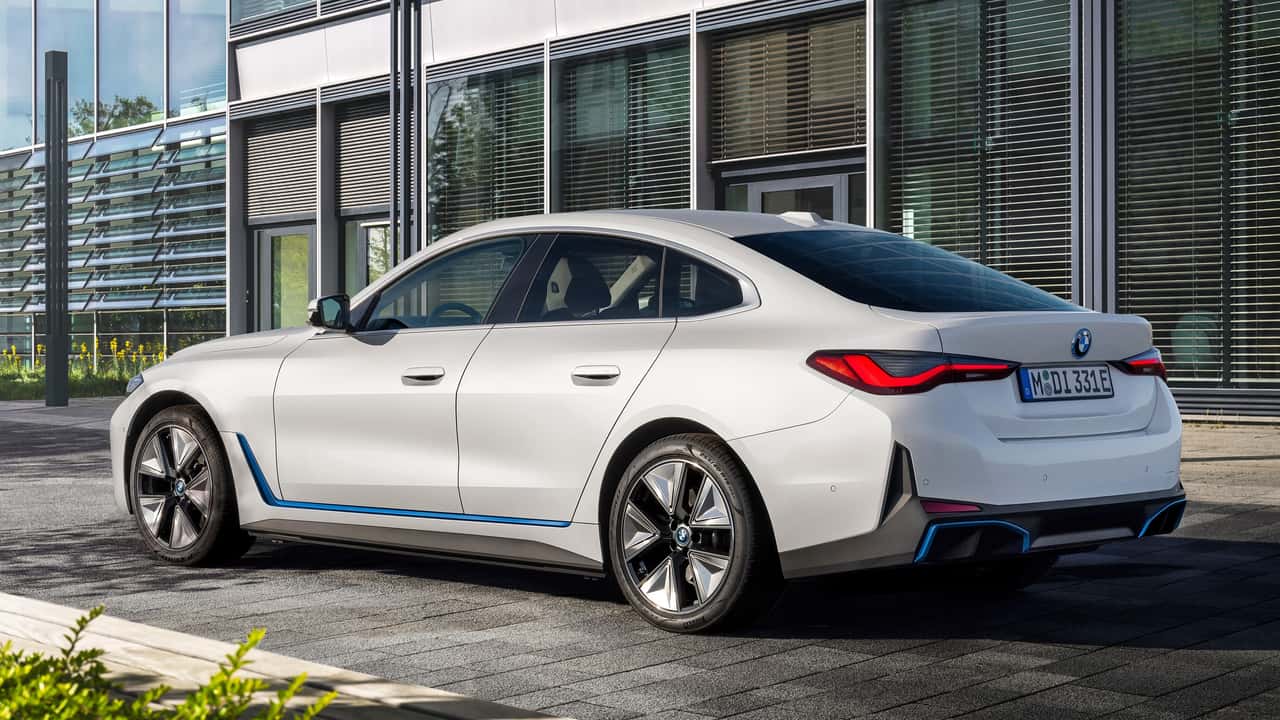 BMW
BMW
Cons: Range, EV Infrastructure, Ugly Grille
Rather than beat you over the head with its EV-ness during those hard accelerations, BMW plays just a scooch of simulated powertrain noise over the i4 GC’s interior speakers. It’s one of the few pure EV gimmicks you’ll find here and the car can be spec’d without it. The sound is so subtle I preferred to keep it on, if only to pair some audio feedback with the snap of EV acceleration.
This BMW’s EV powertrain offers a traditional two-pedal driving routine, along with one-pedal driving as well. The latter option felt crisp and well-calibrated, with a snappy transition to braking when the go-fast pedal is released. The one-pedal system feels especially crisp but never distracting with the i4’s drive mode selector set to “Sport.”
I prefer the pedal sensitivity, steering weight, and suspension response of Sport. While I wish the Sport damping curve felt a bit more lax, you can imagine the amount of spring rate BMW had to throw at a vehicle this heavy to make it feel responsive, and the damping required to rein in this EV’s rebounding body.
Still, Sport offers the most-responsive calibration of each major chassis and powertrain system, livening the i4 GC from relaxed conveyance into a true Sport Sedan.
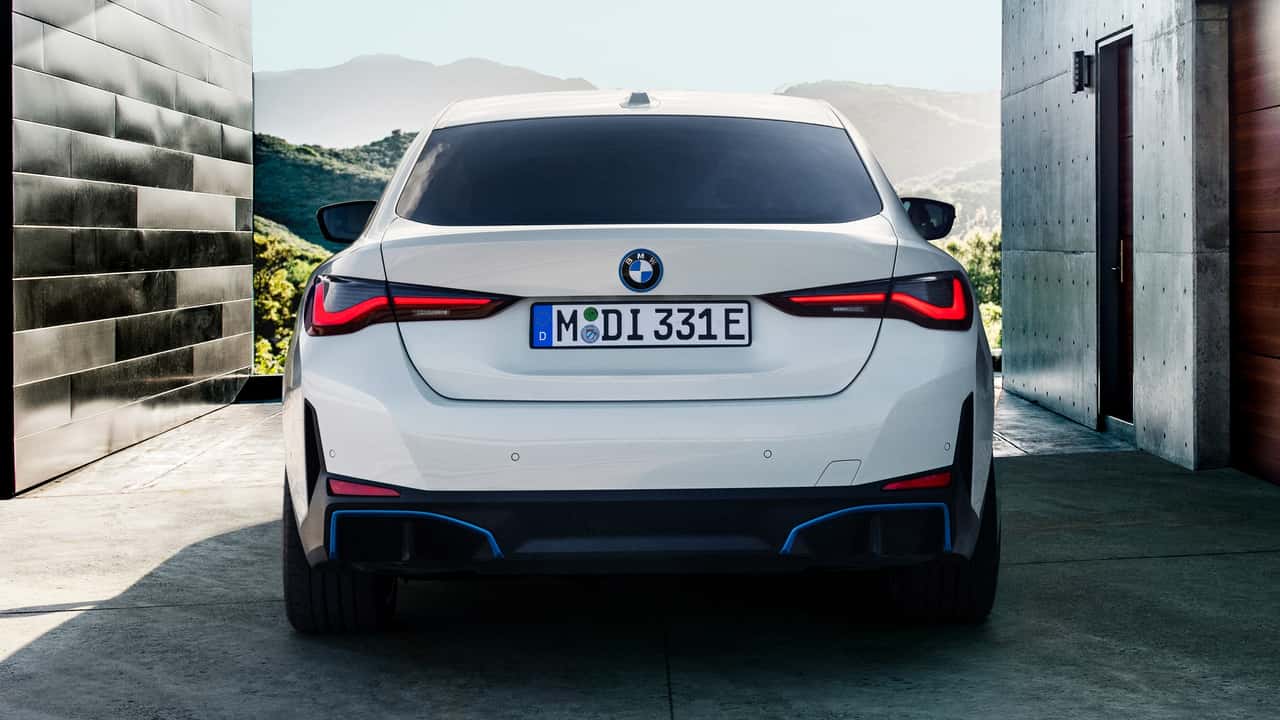 BMW
BMW
With a base price of $52,200, this eDrive35 trim offers the best value among the i4 range. It’s plenty quick for daily driving and backroad hustling, quick enough that I wouldn’t be tempted by more-expensive trims.
The M Sport package ($3100) feels like a must-have, owing to the adaptive suspension and gorgeous wheels, but I could leave everything else off the build sheet (though the Harman Kardon sound system would tempt me at $875, as would San Remo green paint ($650) and heated seats ($500)).
That places the i4 eDrive 35 squarely in competitive territory, pitted against ICE sedans, hybrids, and EVs alike. But none of them offer the goldilocks mix of this BMW.
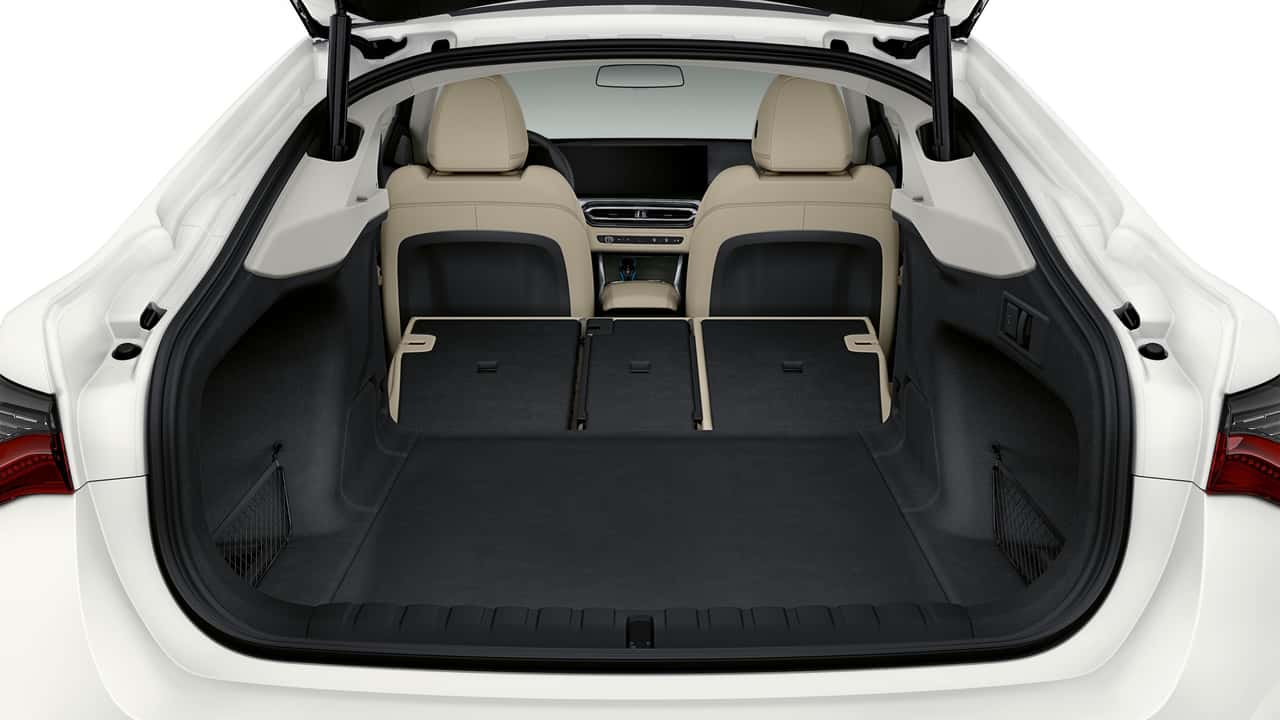 BMW
BMW
Its gas-powered competitors are slower, less composed, and often have less badge equity. Hybrid cars doubly so. Other EVs will outpace this BMW for around $55,000, but none look as handsome and drive as nicely.
Lease deals on these cars keep getting sweeter. As a second vehicle to sit beside the gas-powered truck or SUV that already lives in your garage, it’s a deeply competitive offering from BMW.
In that way, this new BMW is a lot like the old BMWs we love so much. It blends form with function, backs up its good looks with amenities, and pairs quick reflexes to superb road manners.
The i4 eDrive 35 Gran Coupe is a great BMW sedan. It’s also an EV.
Competitors
More BMW Reviews
The BMW 5 Series Is Just Really Nice
The 2024 BMW M3 CS Is Stupid Fast
Get the best news, reviews, columns, and more delivered straight to your inbox, daily. Sign up For more information, read our
Privacy Policy and Terms of Use.
| 2024 BMW i4 eDrive35 Gran Coupe | |
| Motor | Rear Electrically Excited Synchronous |
| Battery | 68.7 Kilowatt-Hours |
| Output | 282 Horsepower / 295 Pound-Feet |
| Transmission | One-Speed Direct-Drive |
| Drive Type | Rear-Wheel Drive |
| Speed 0-60 MPH | 5.8 Seconds |
| Efficiency | 111 City / 107 Highway / 110 MPGe Combined |
| EV Range | 252 Miles |
| Charge Time | 7 Hours @ 240 Volts / 31 Minutes DC |
| Charge Type | 110 Volt / 220 Volt / 180-Kilowatt DC Fast-Charging |
| Seating Capacity | 5 |
| Cargo Volume | 17.0 Cubic Feet |
| Base Price | $53,195 |
| As-Tested Price | $64,920 |
| On Sale | Now |
The post Trax 2024 Event Report appeared first on Fast Car.
